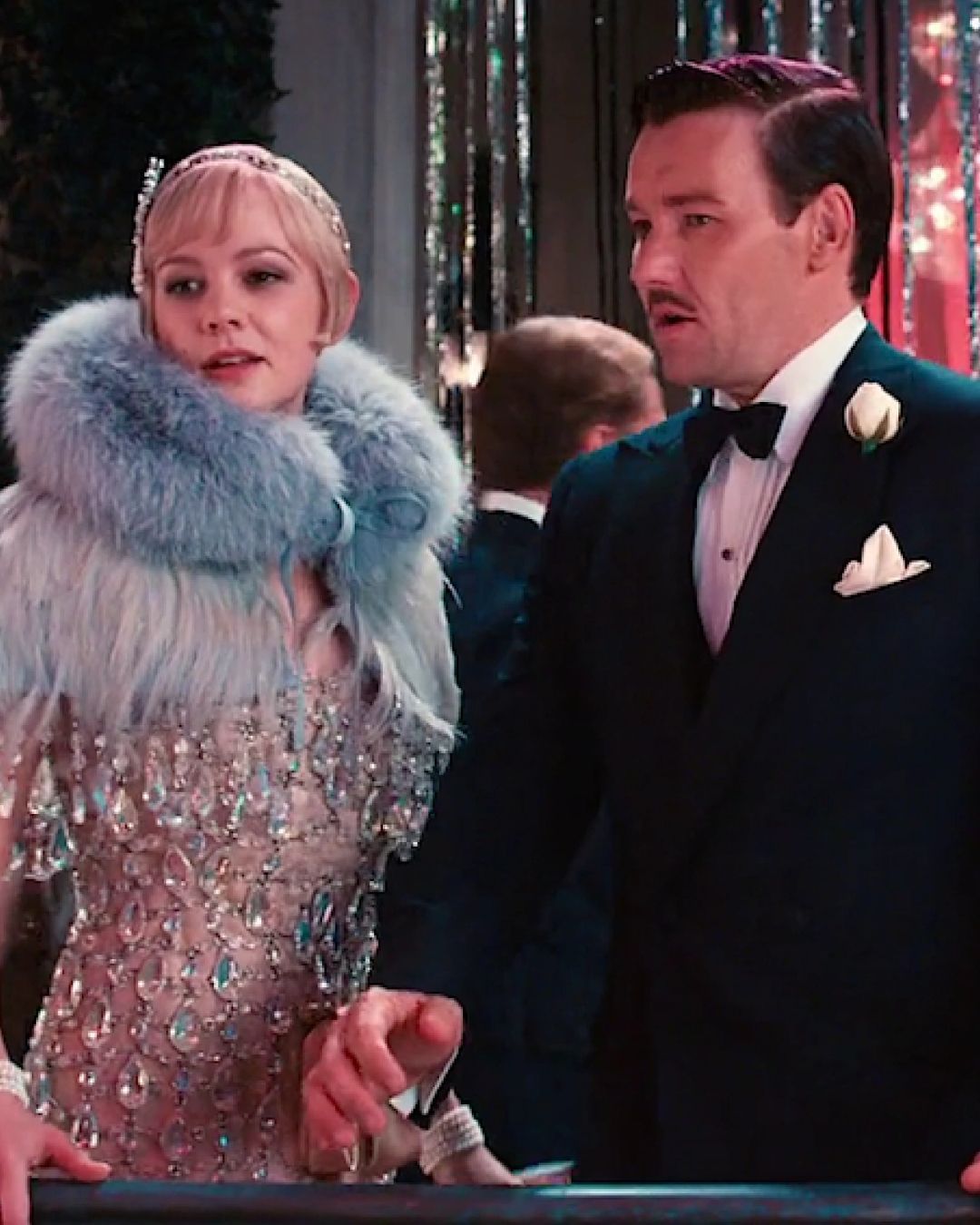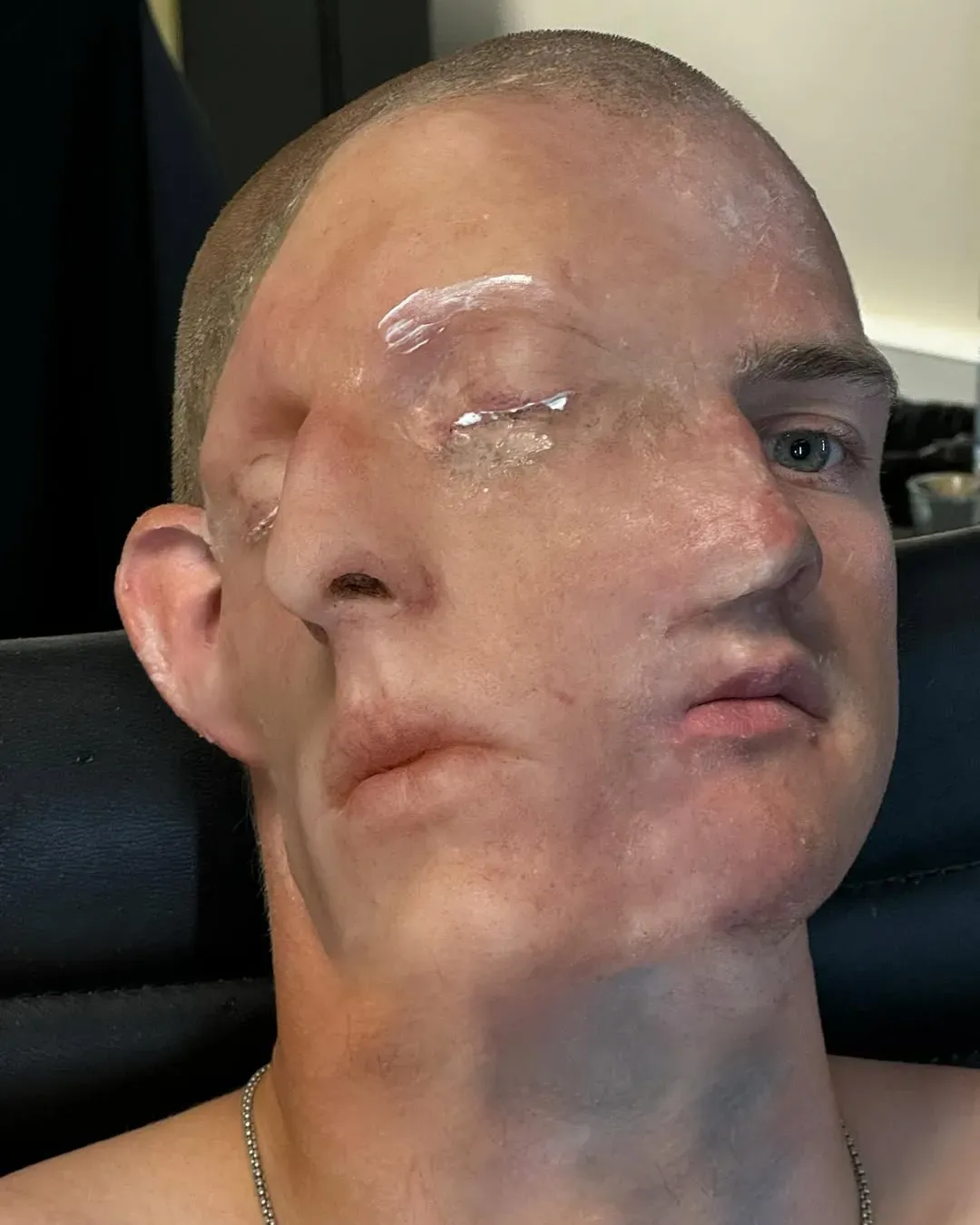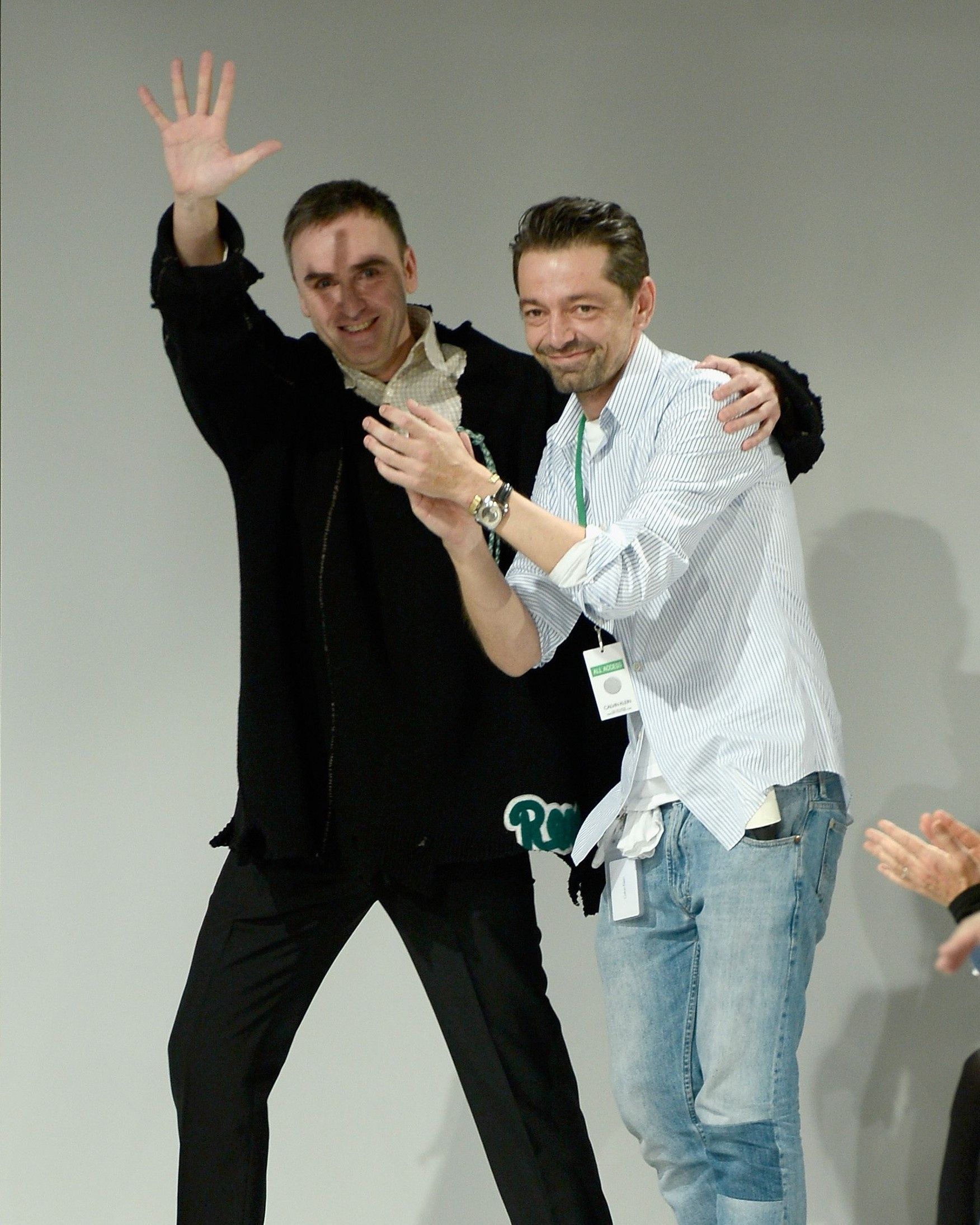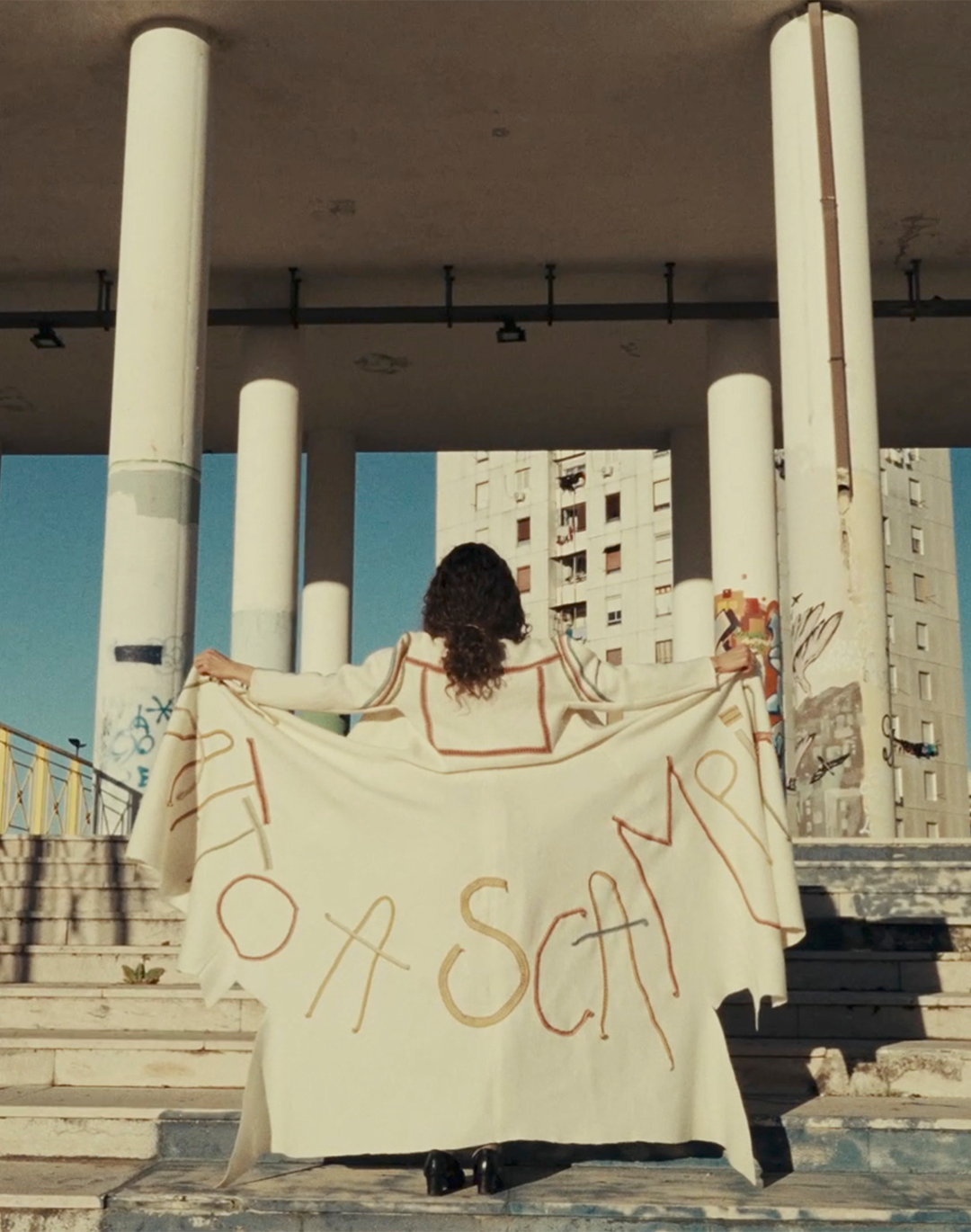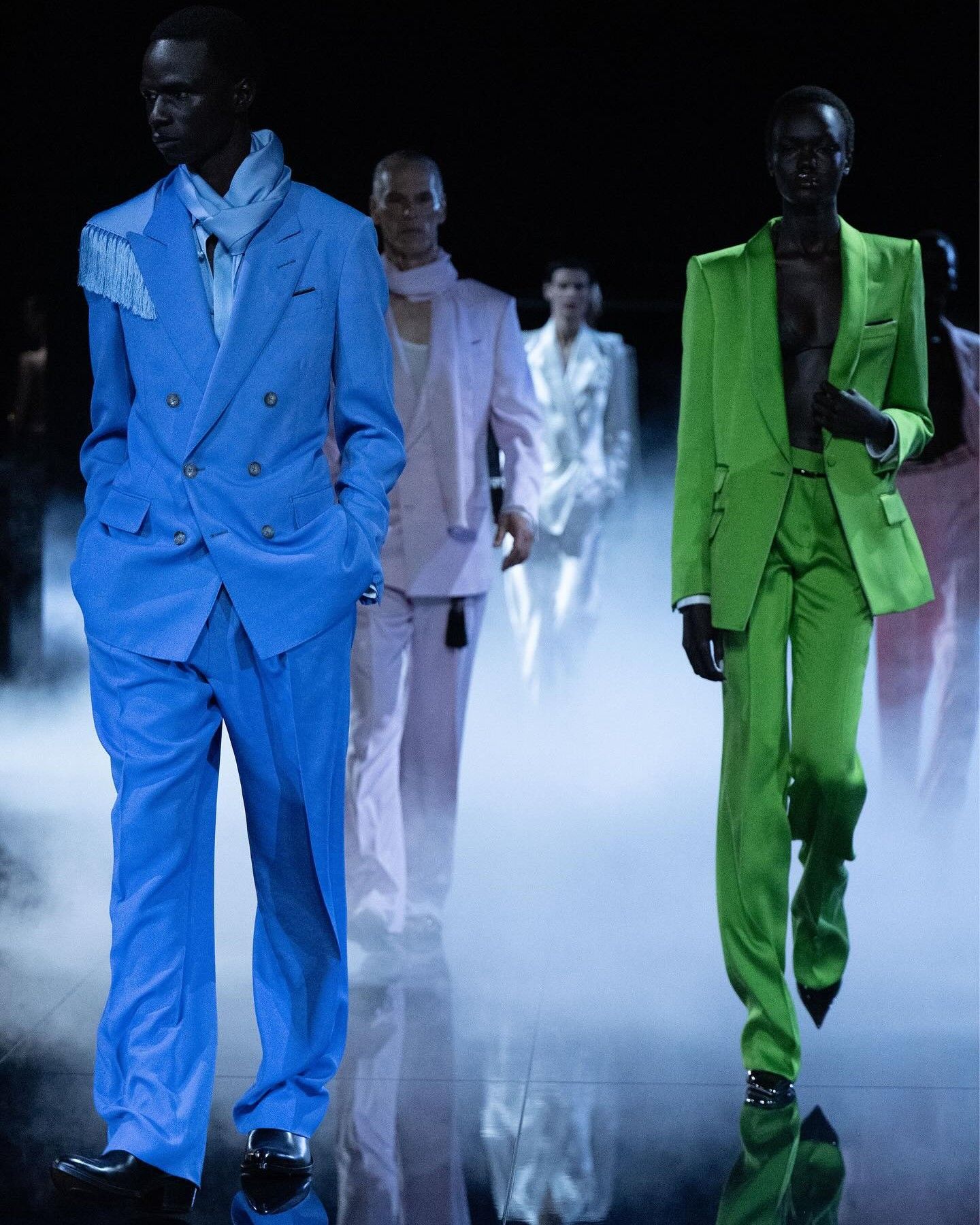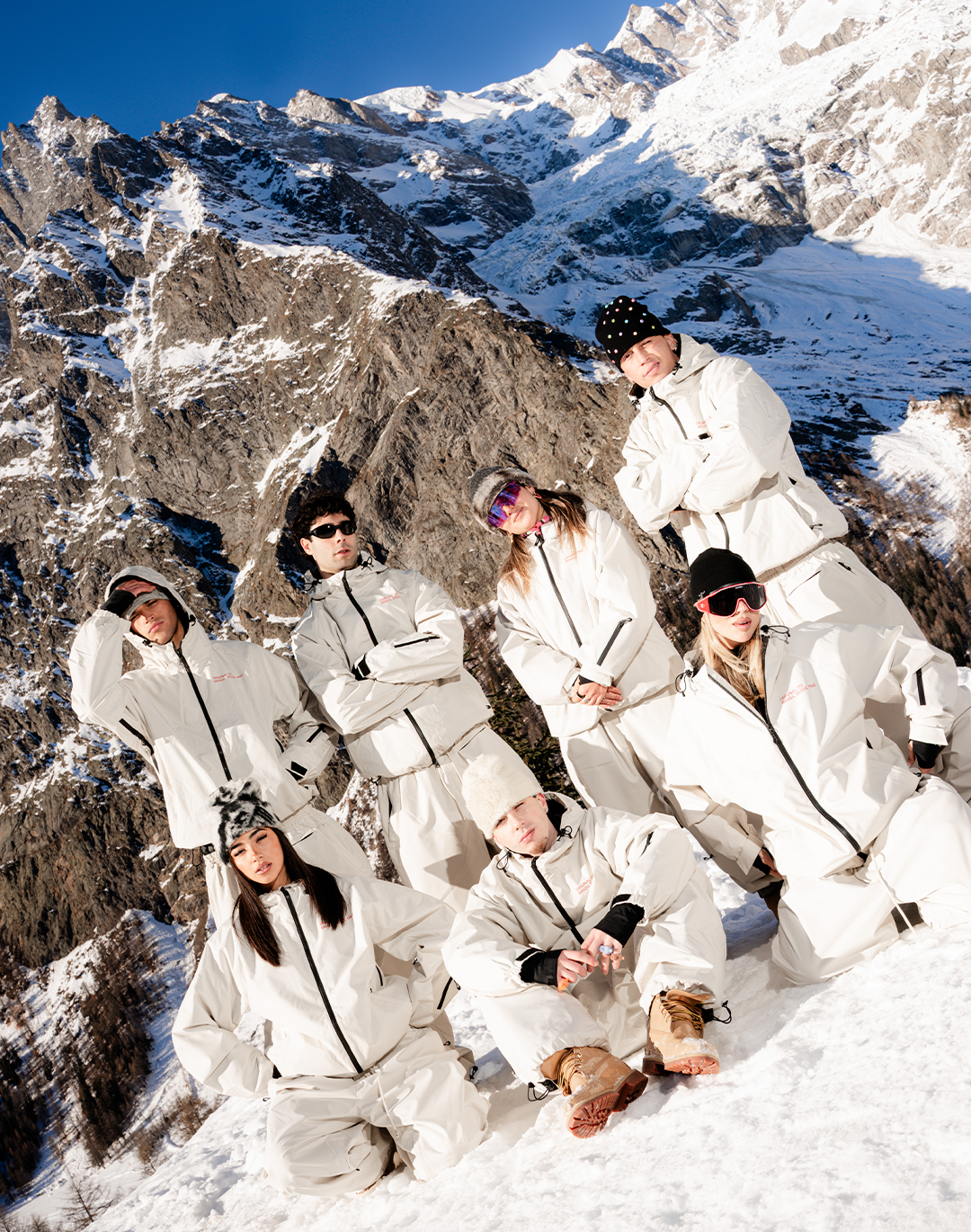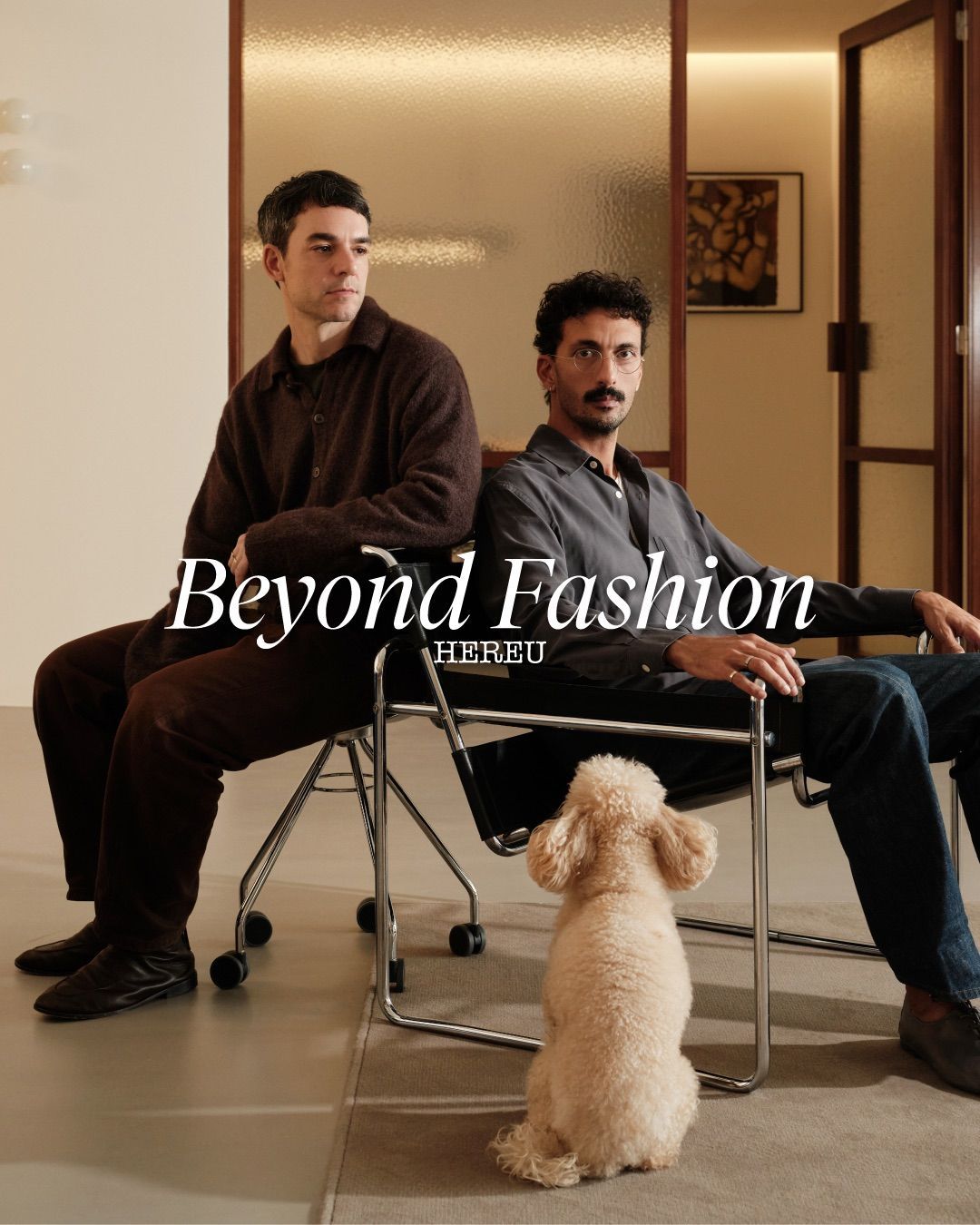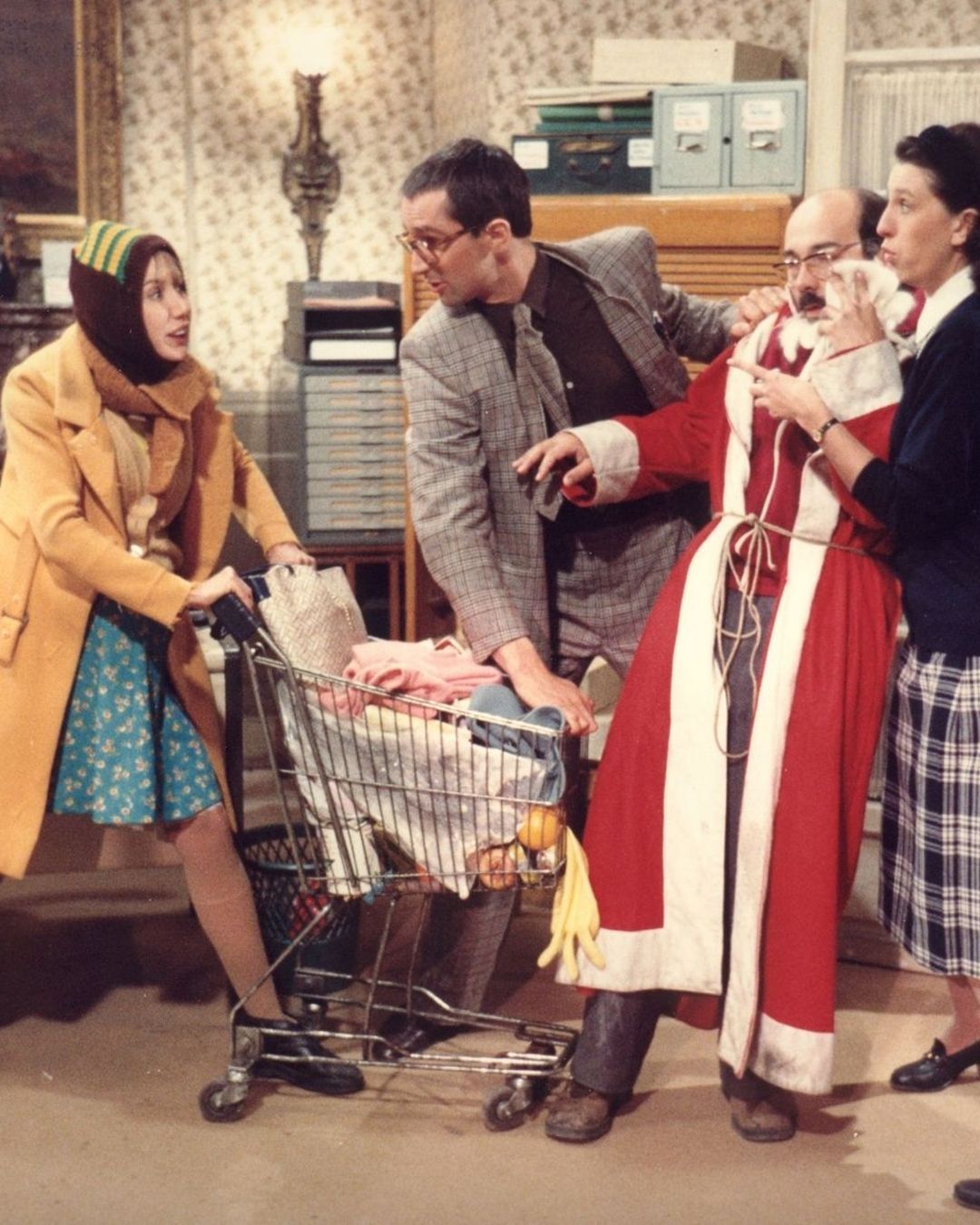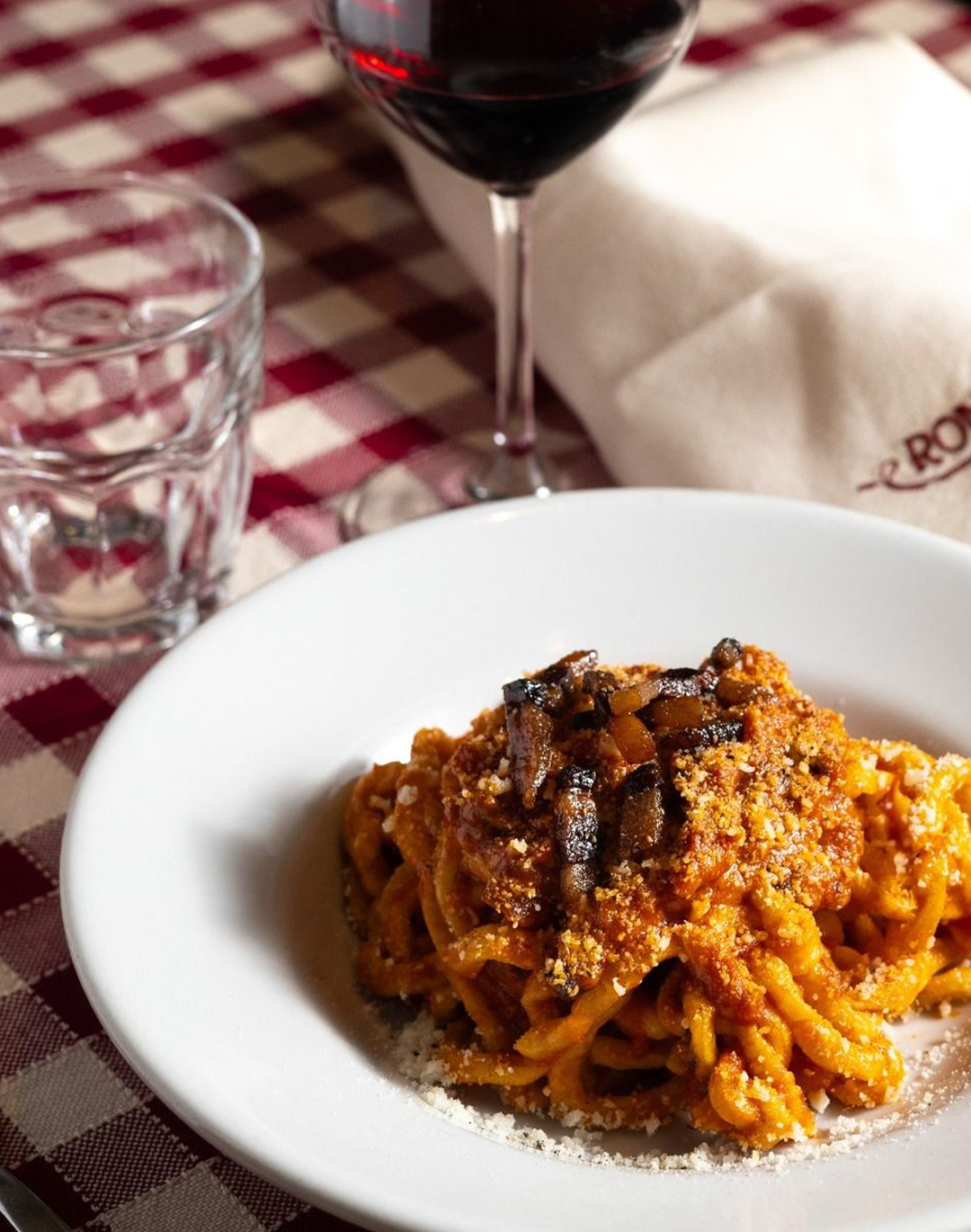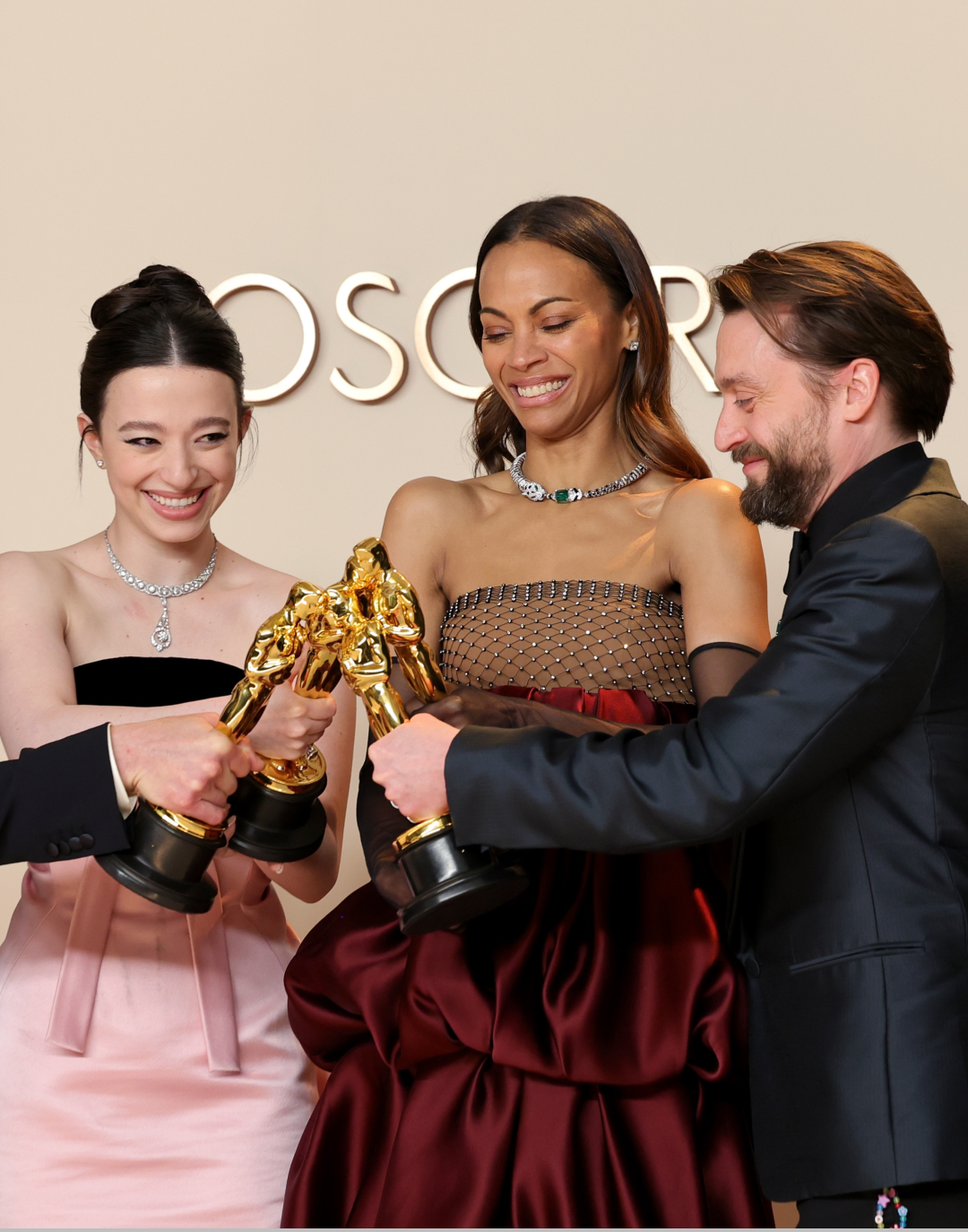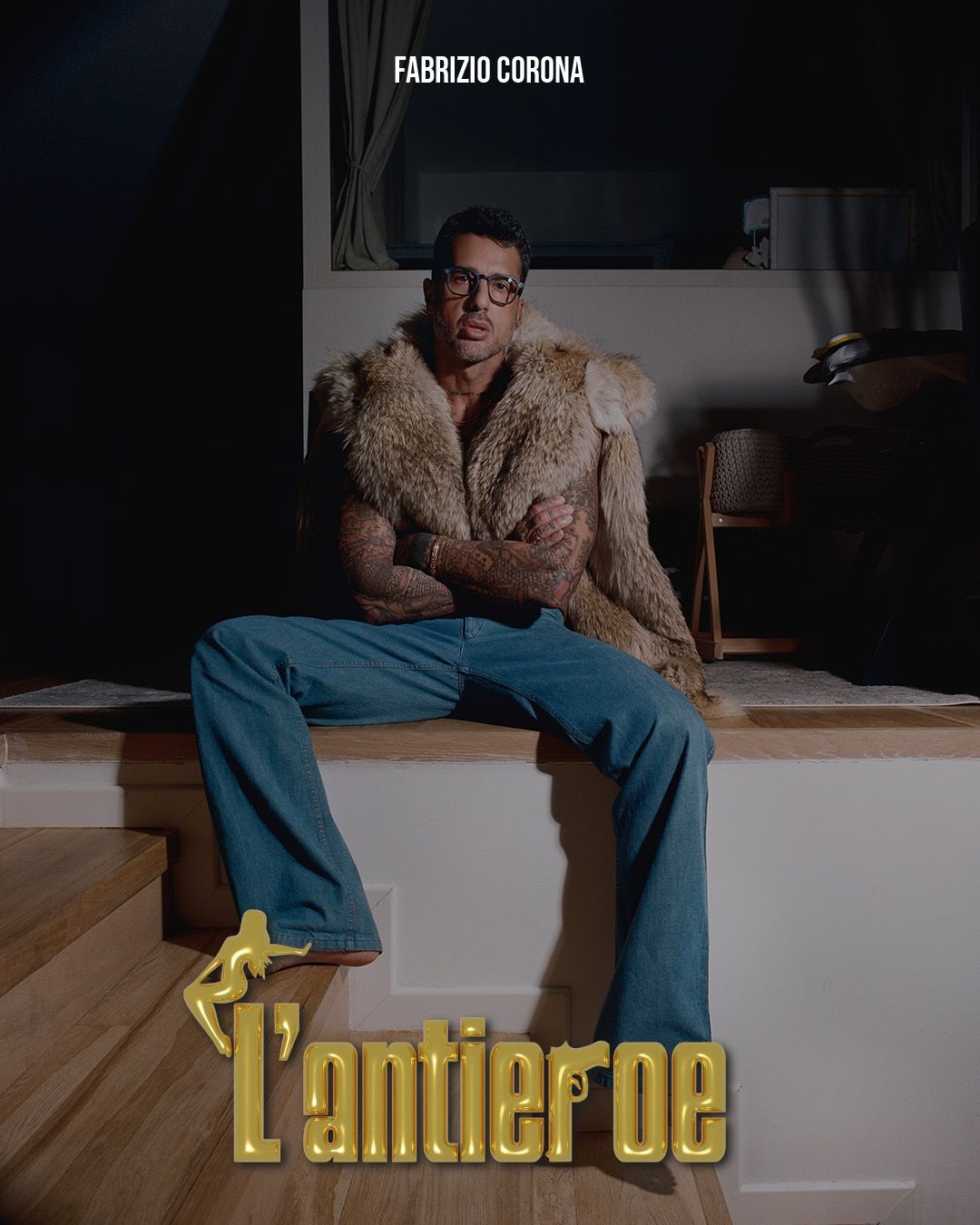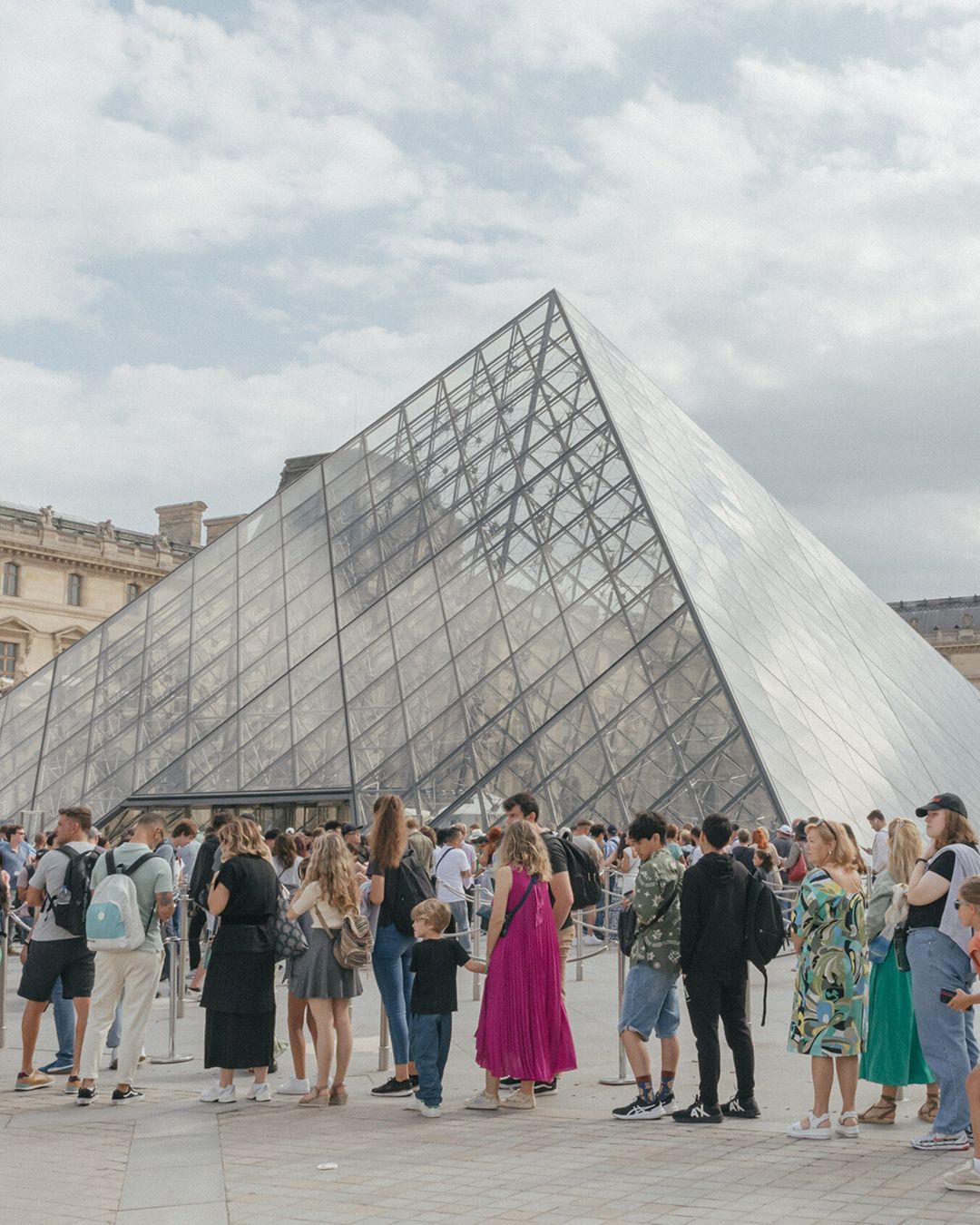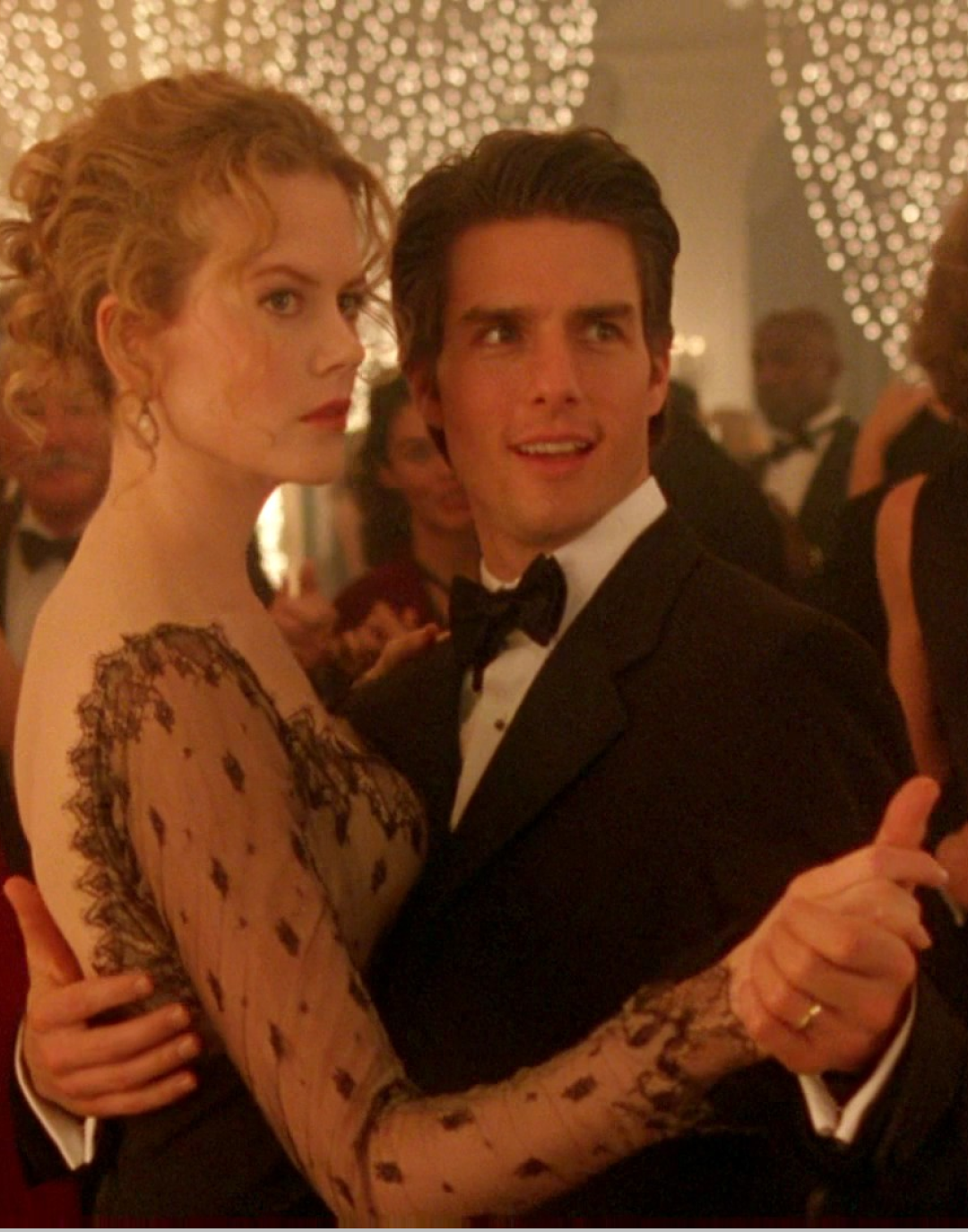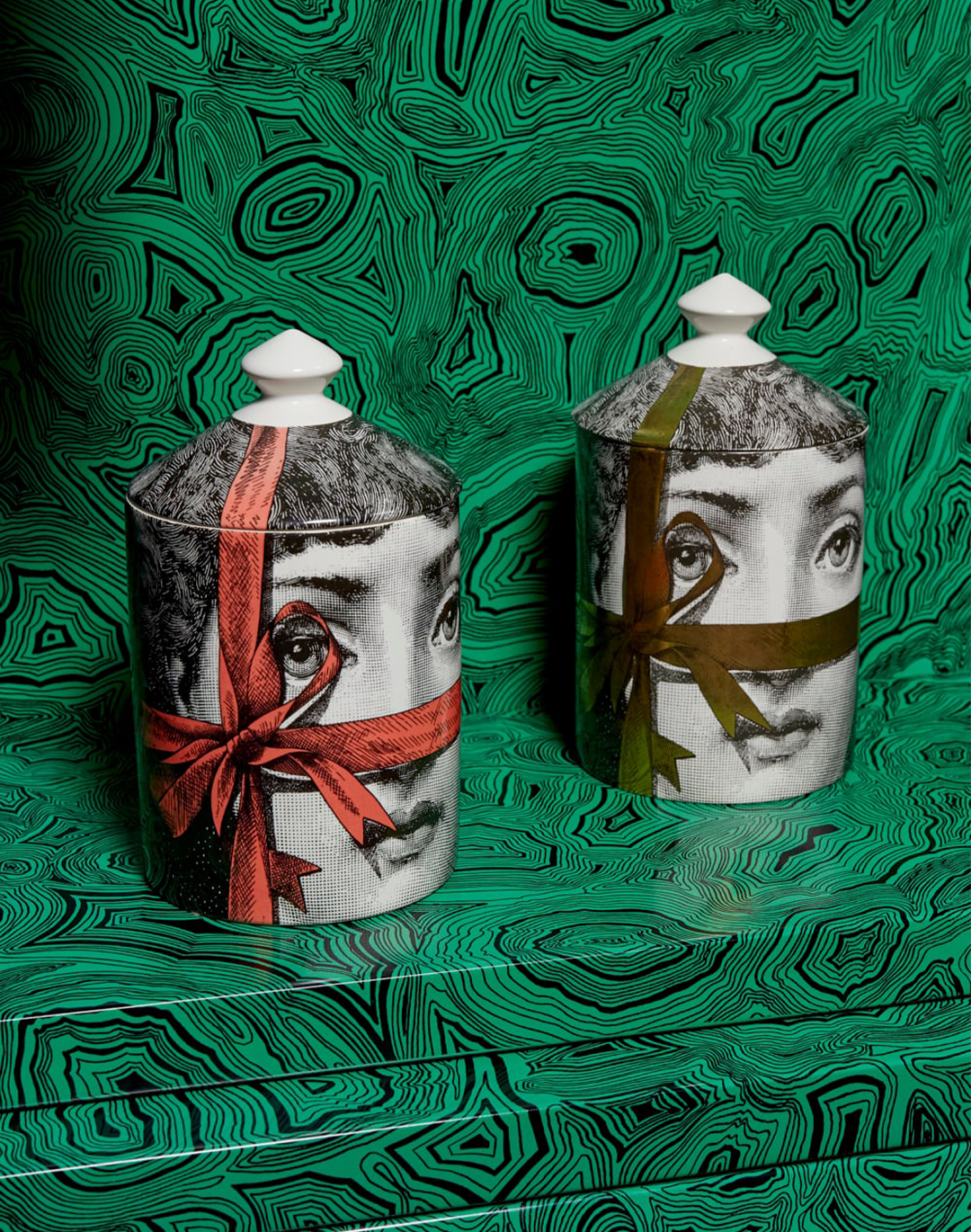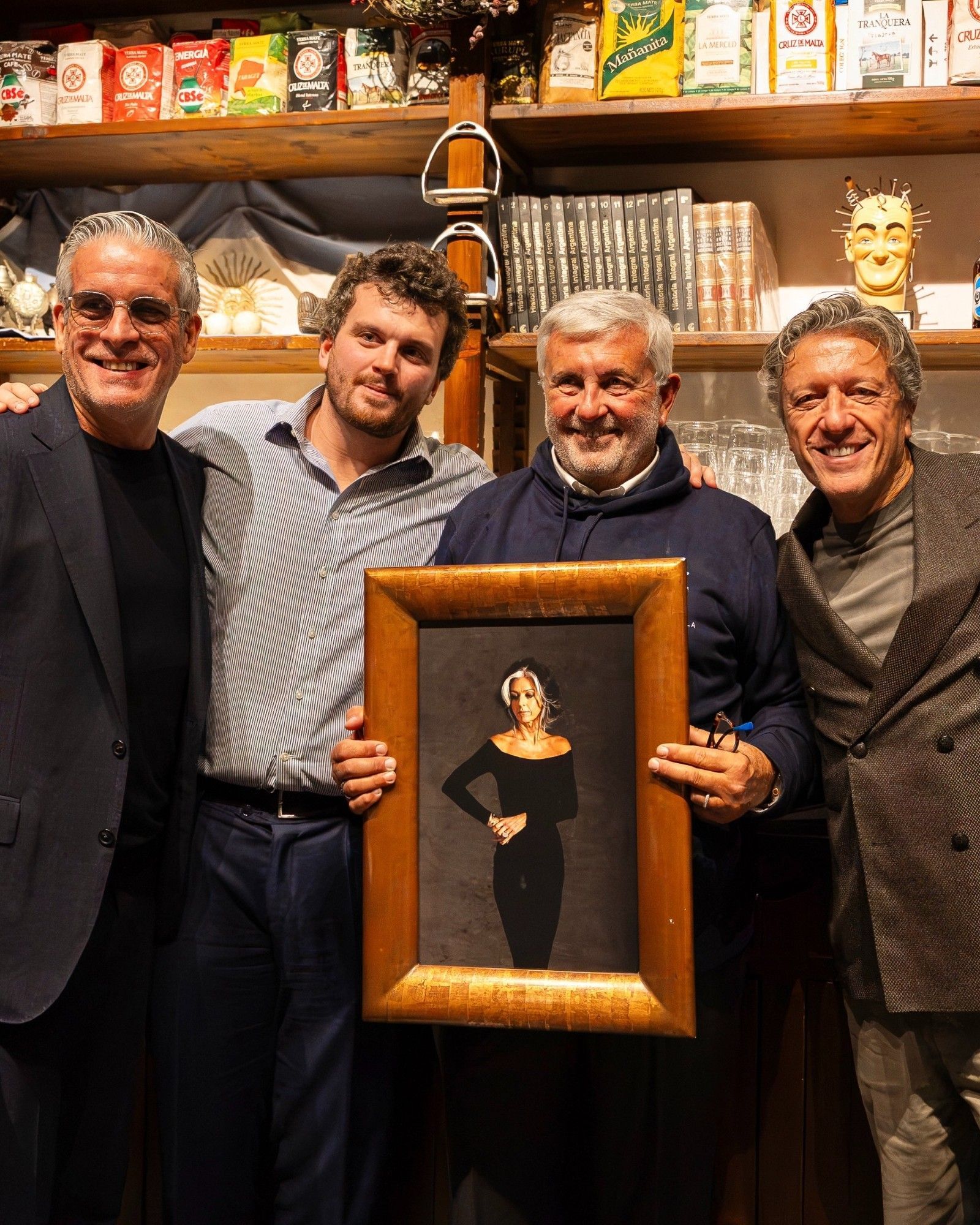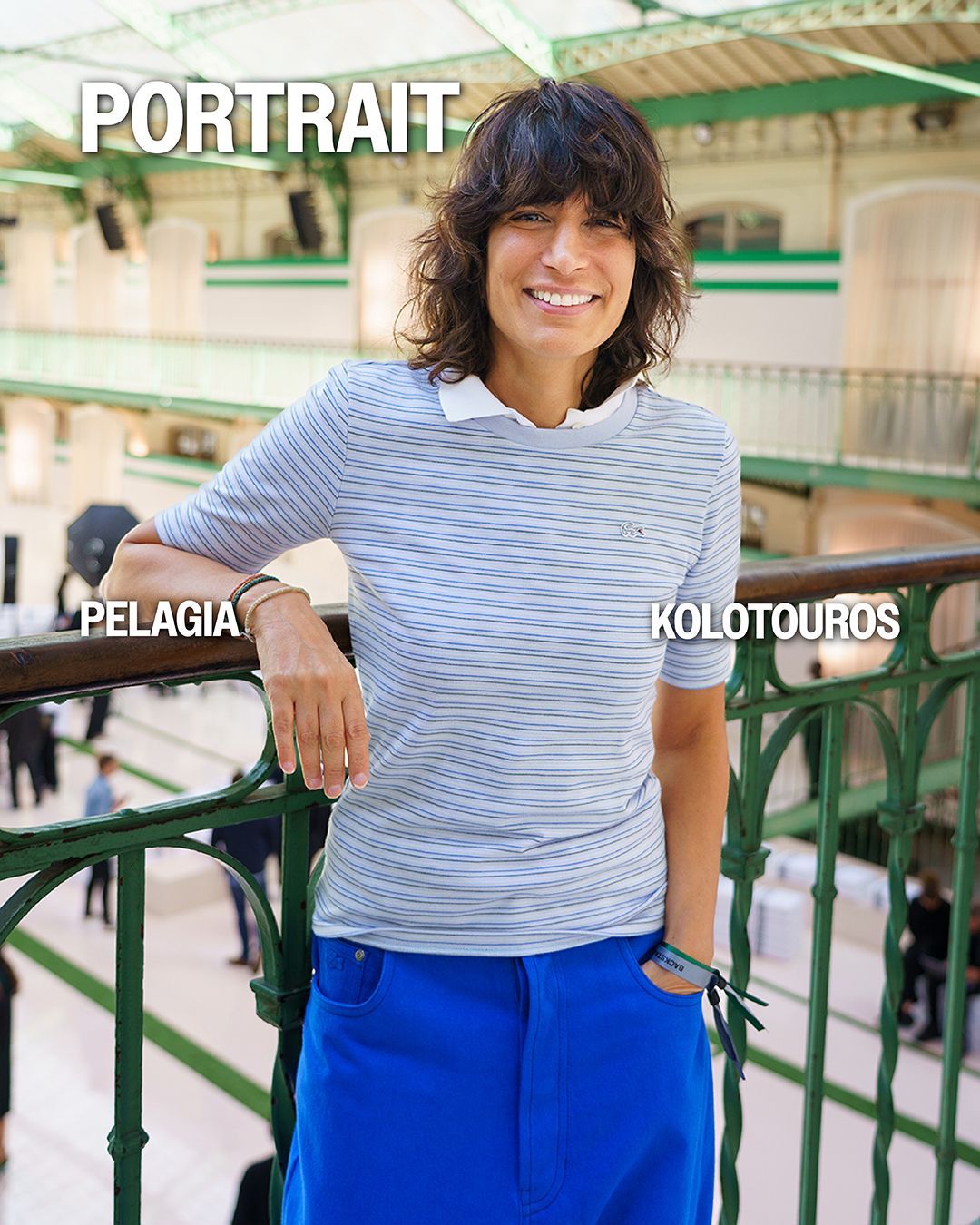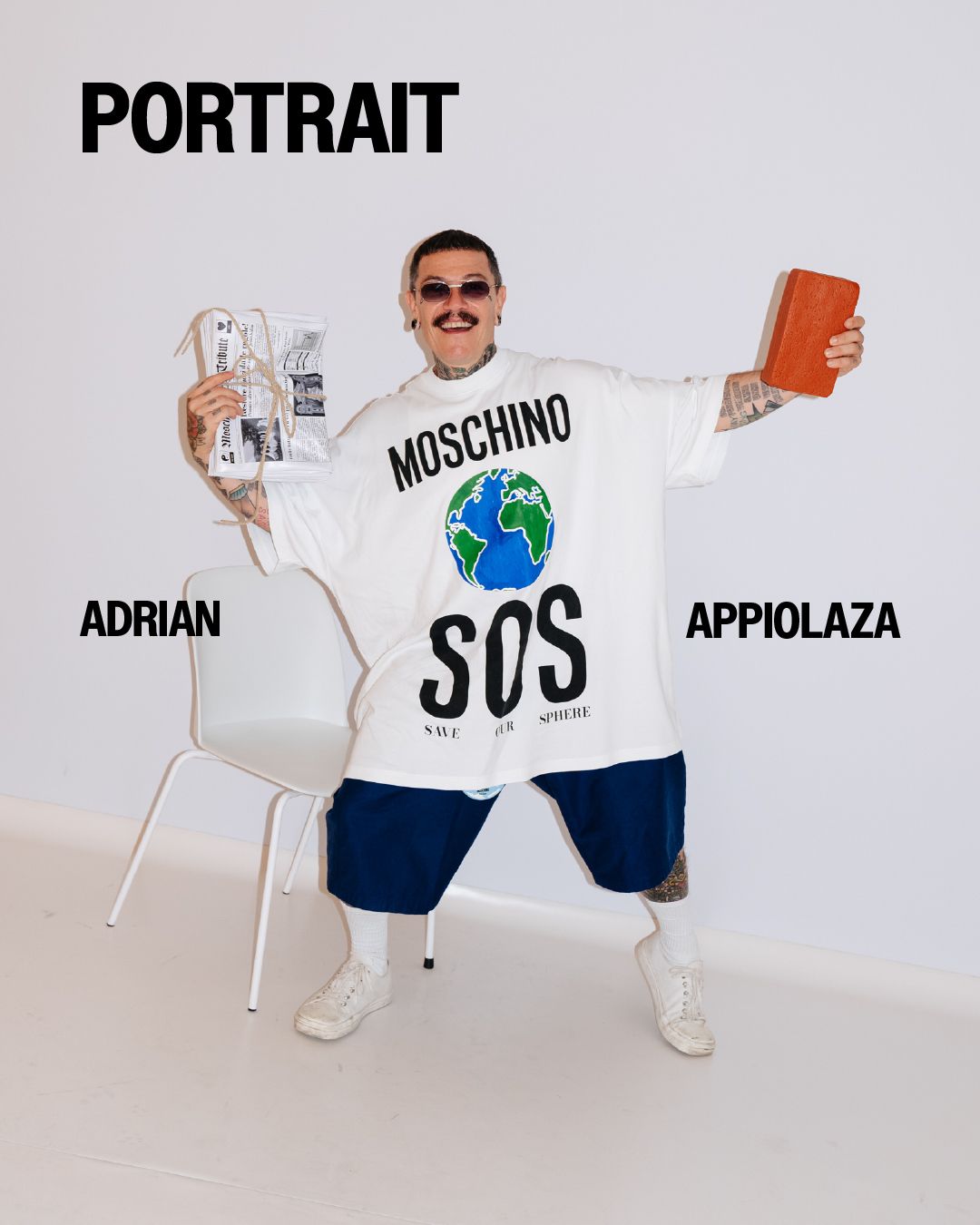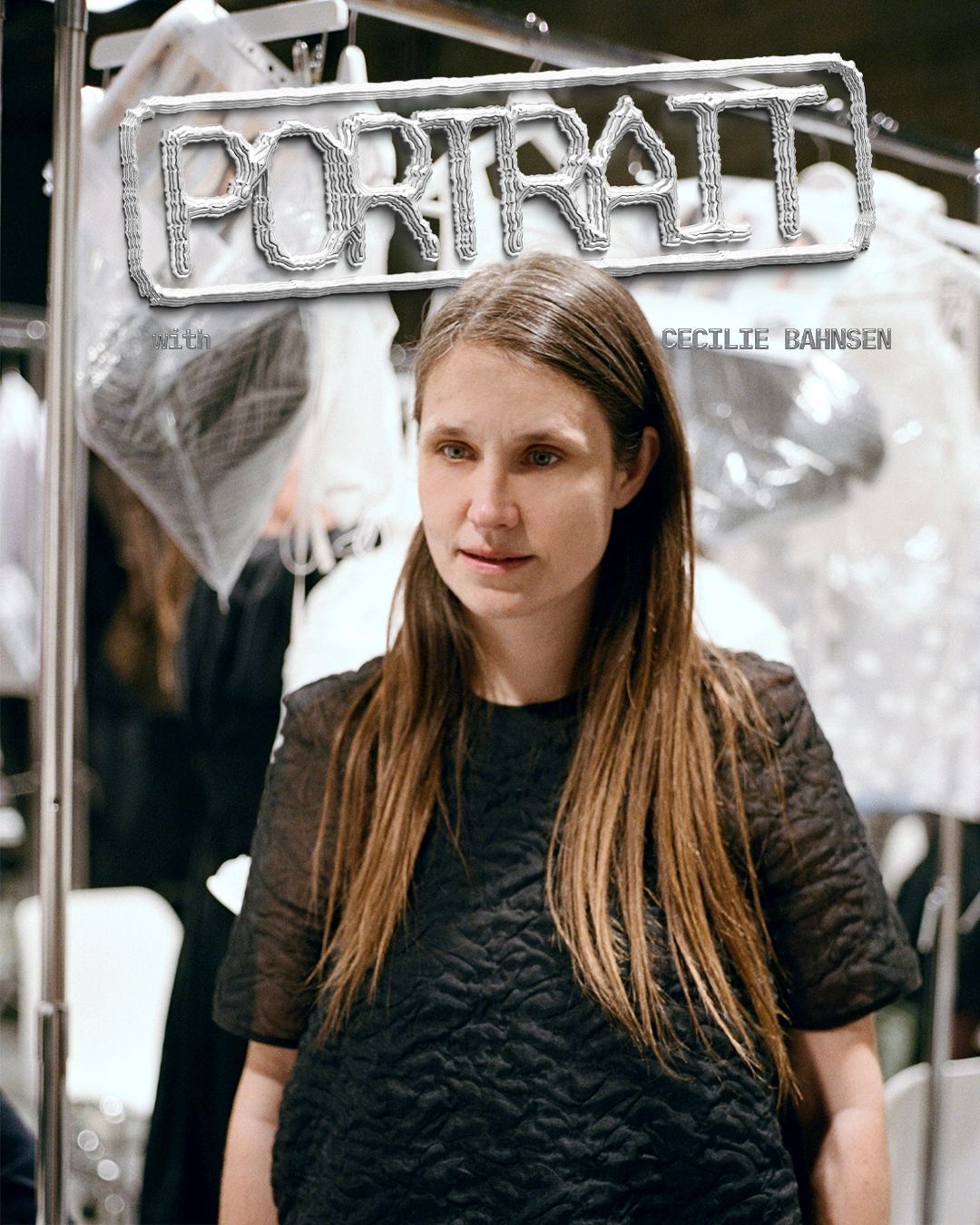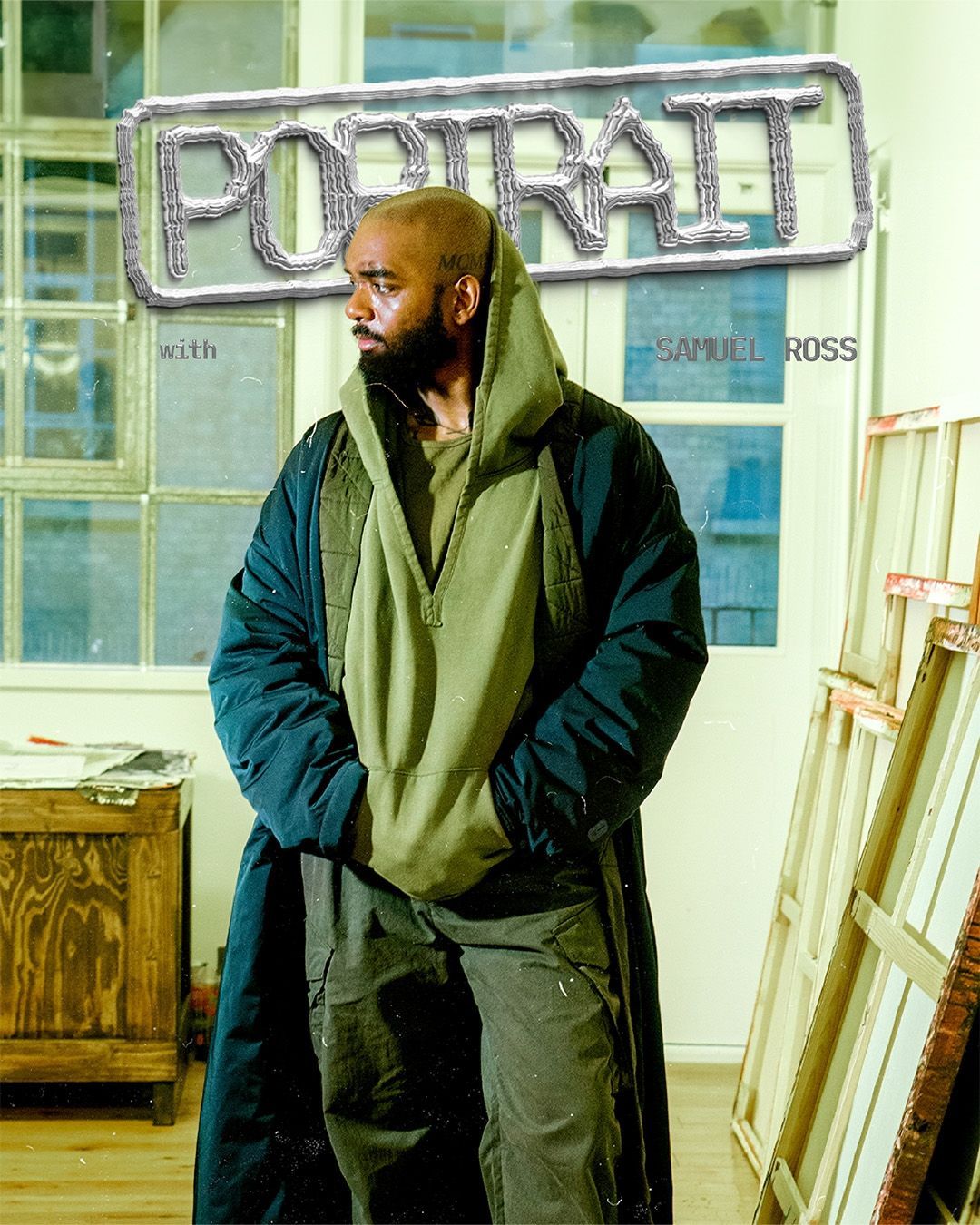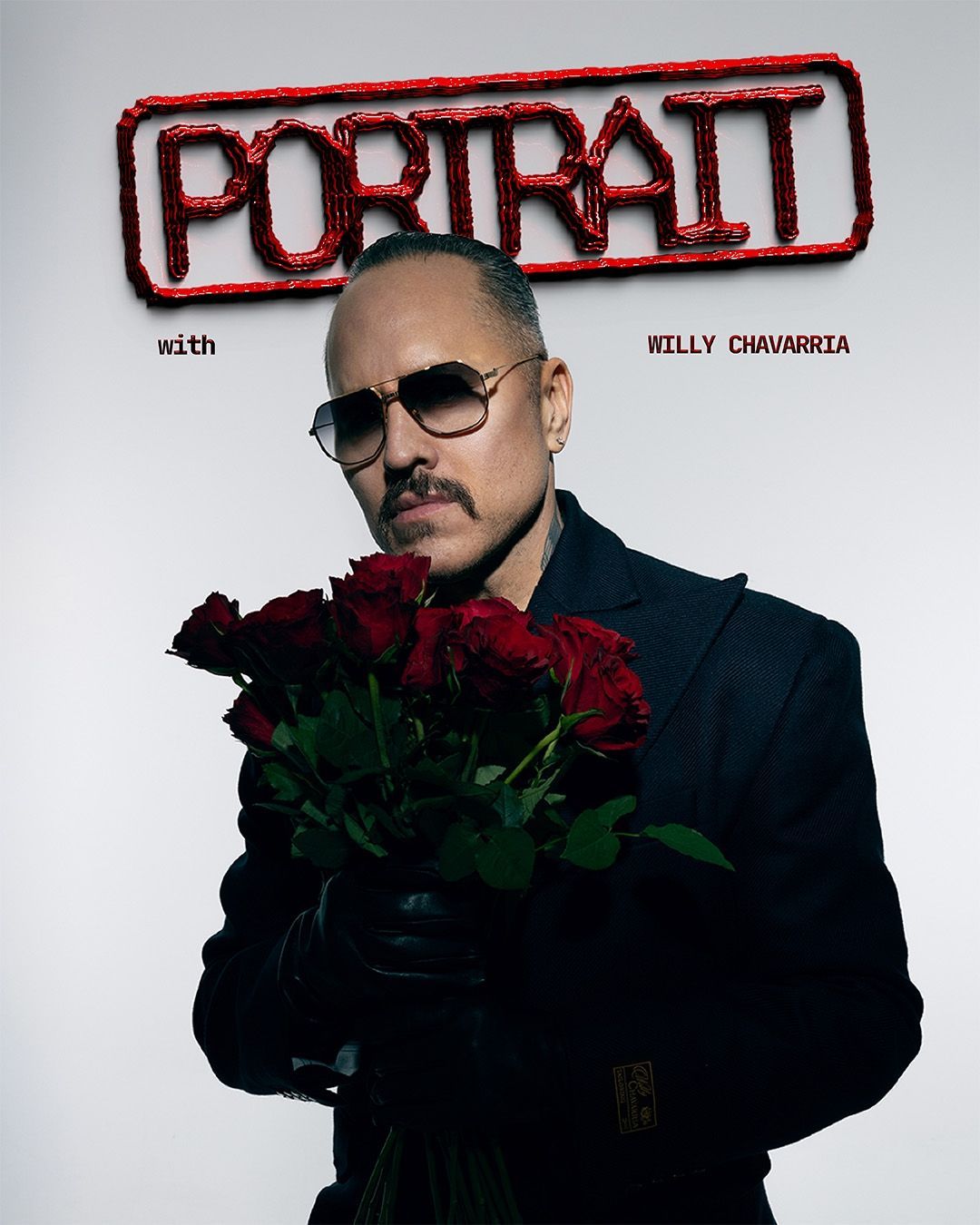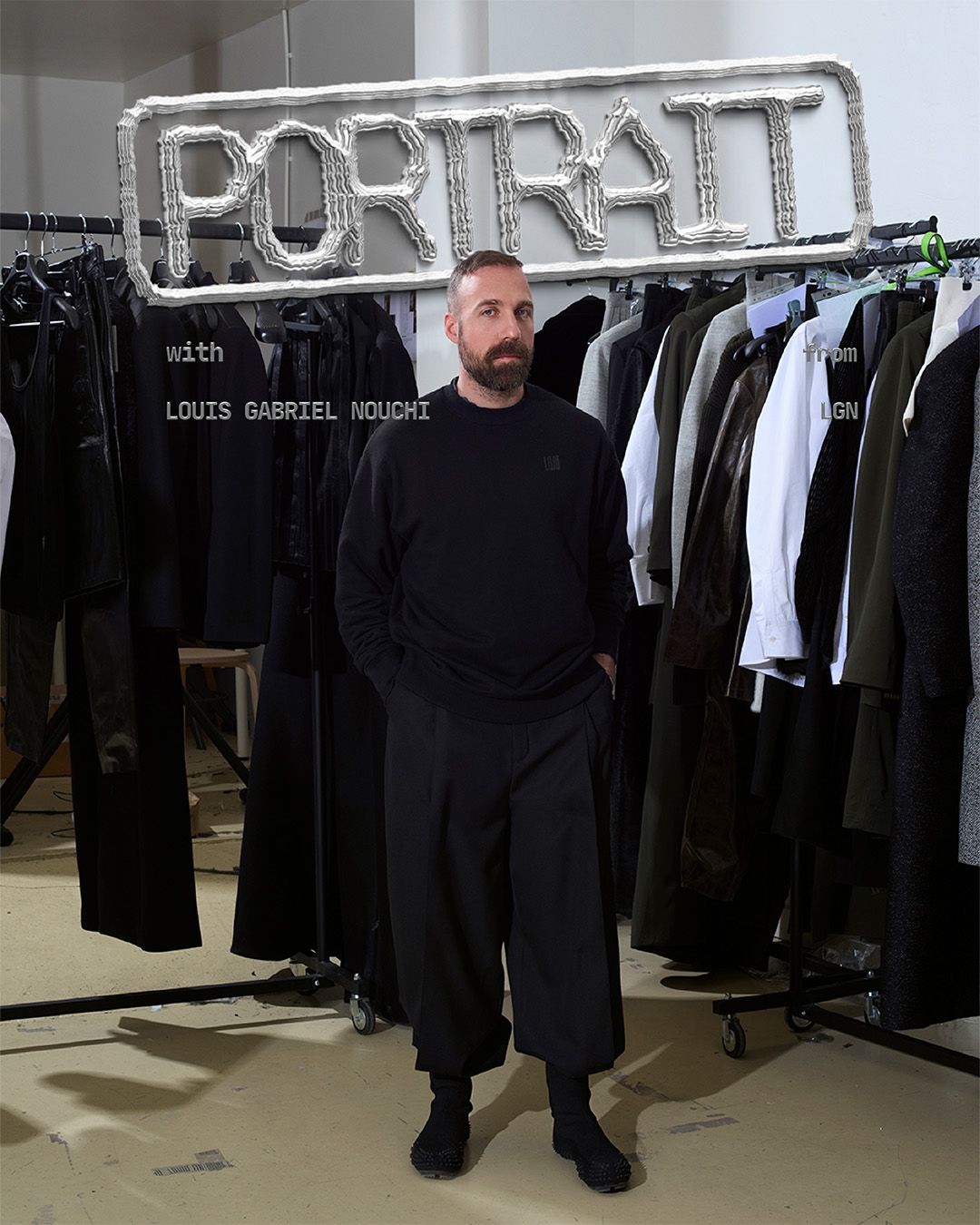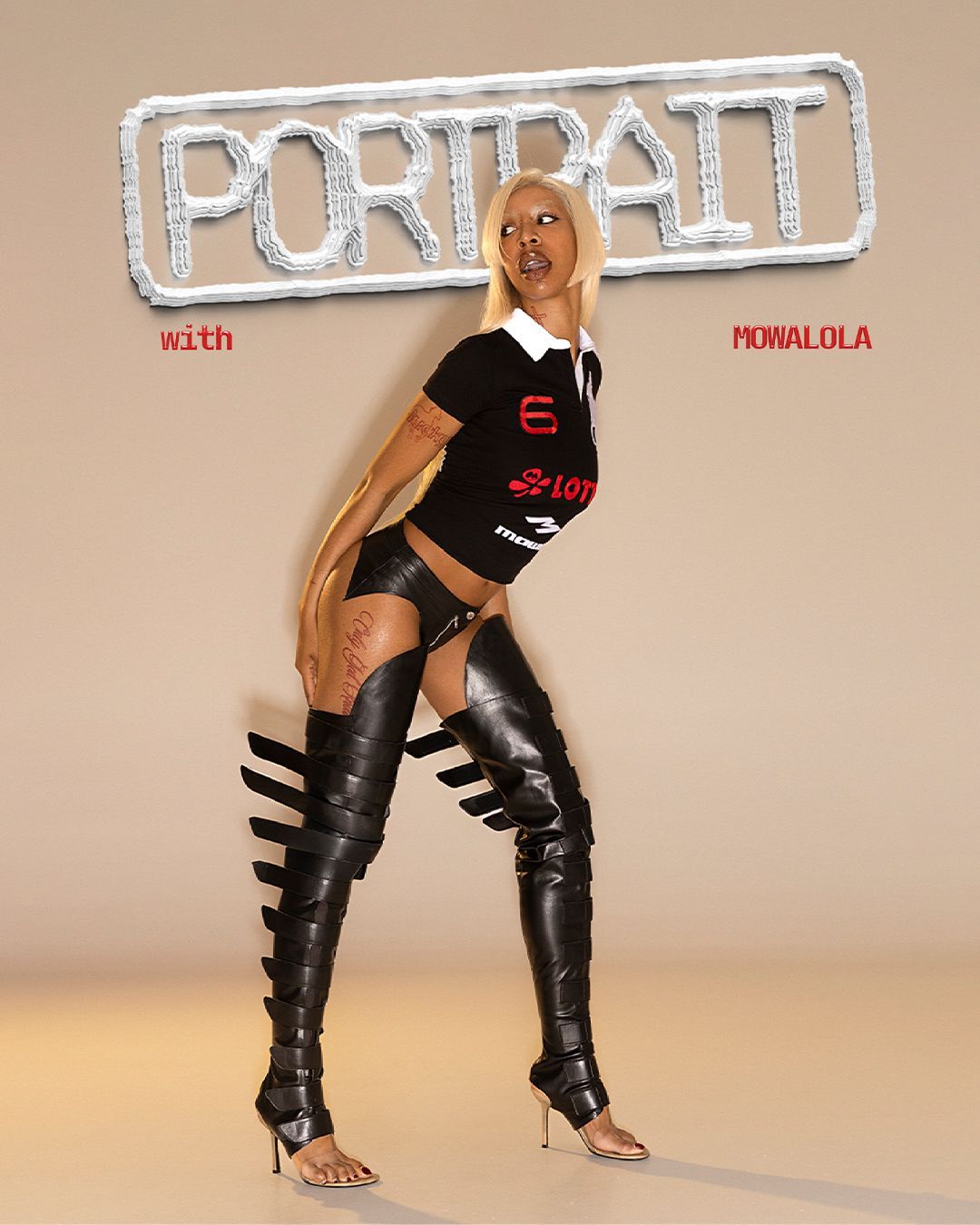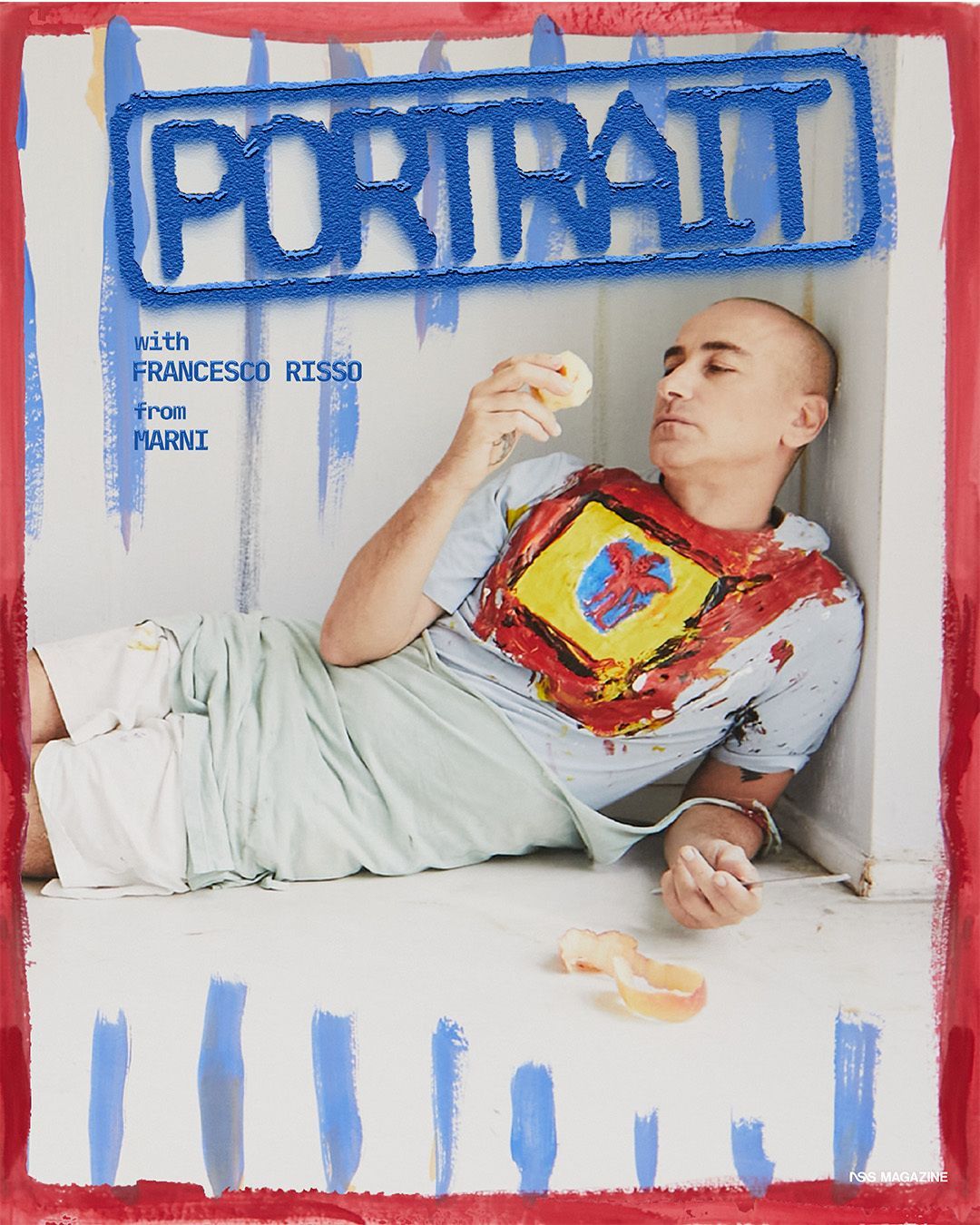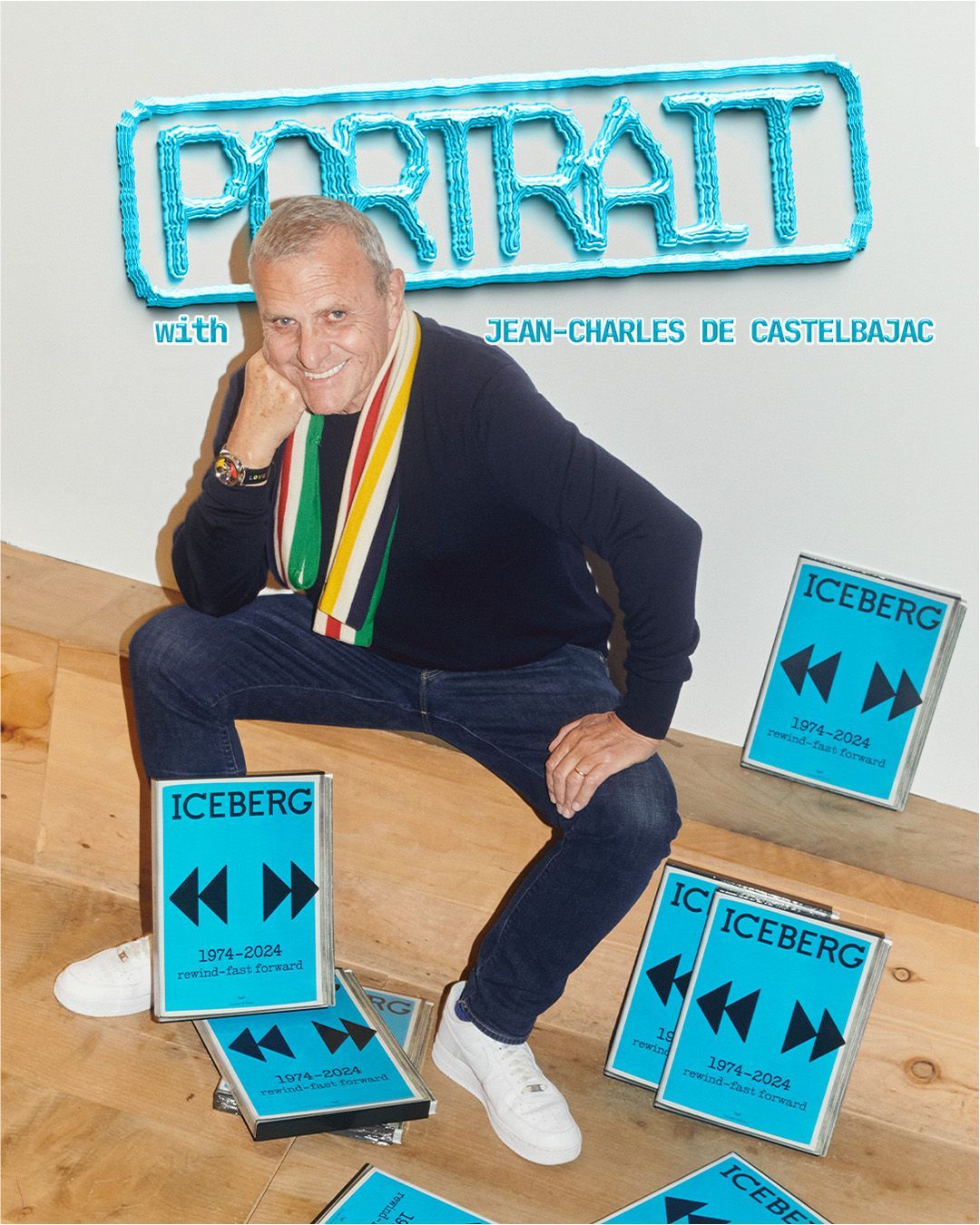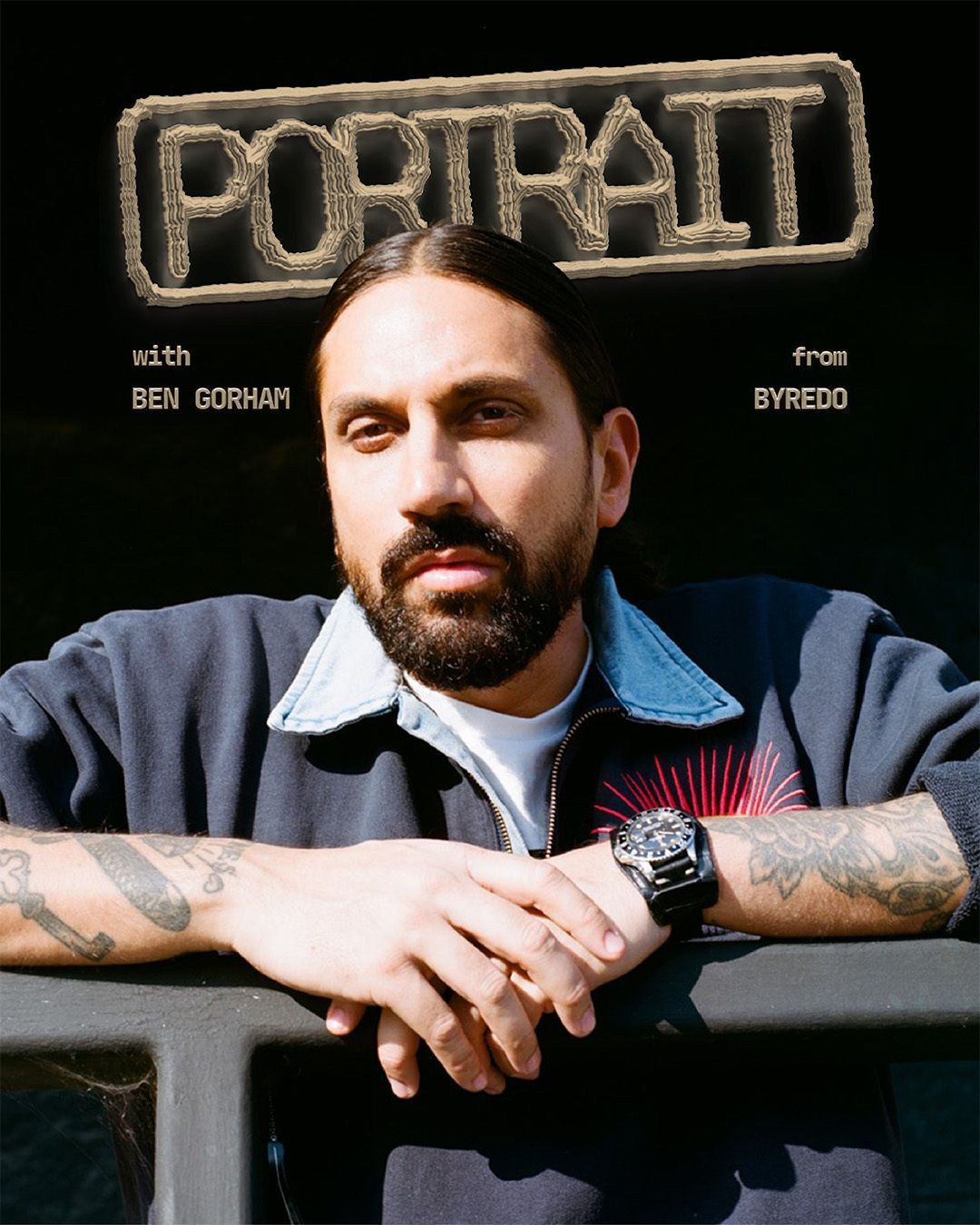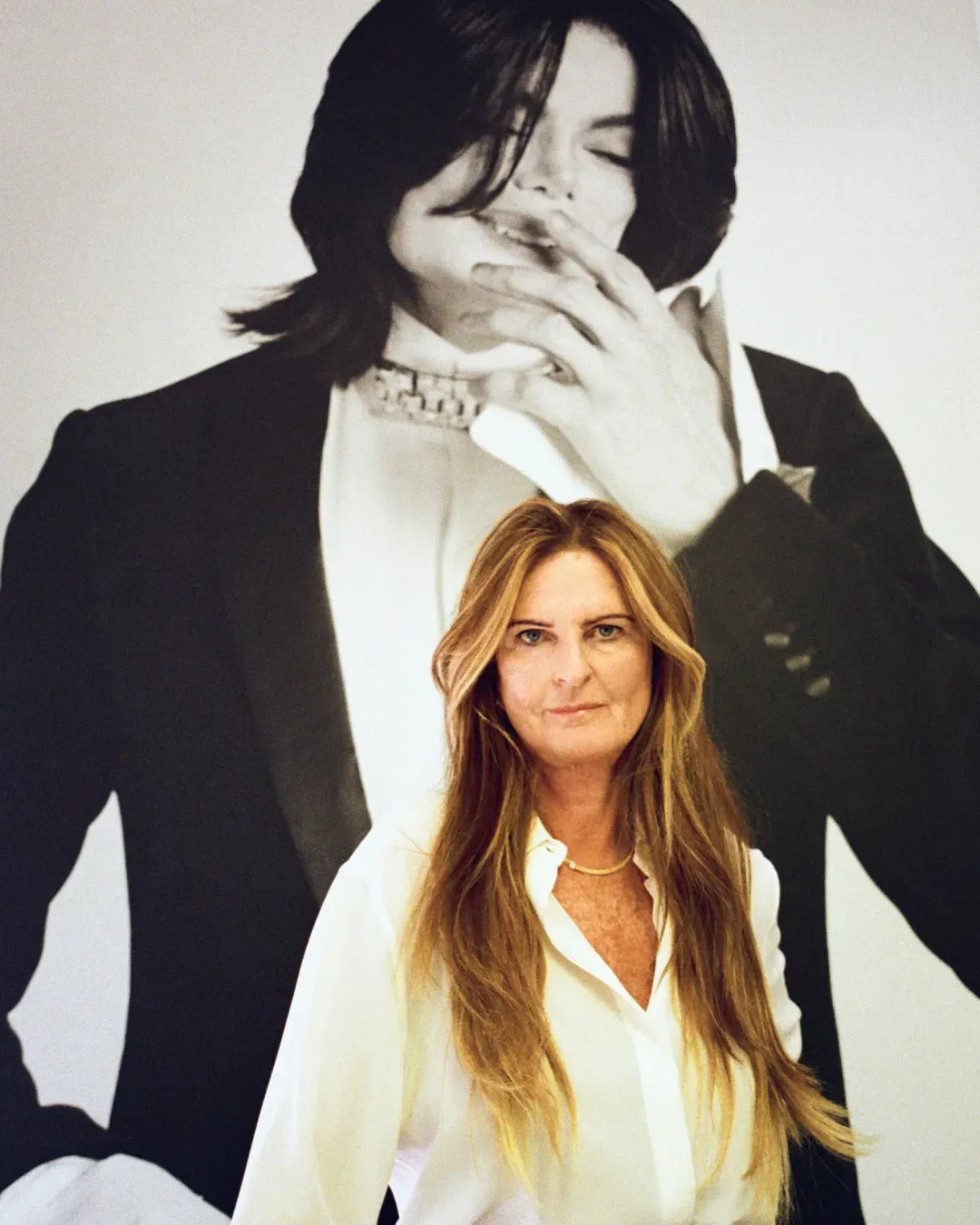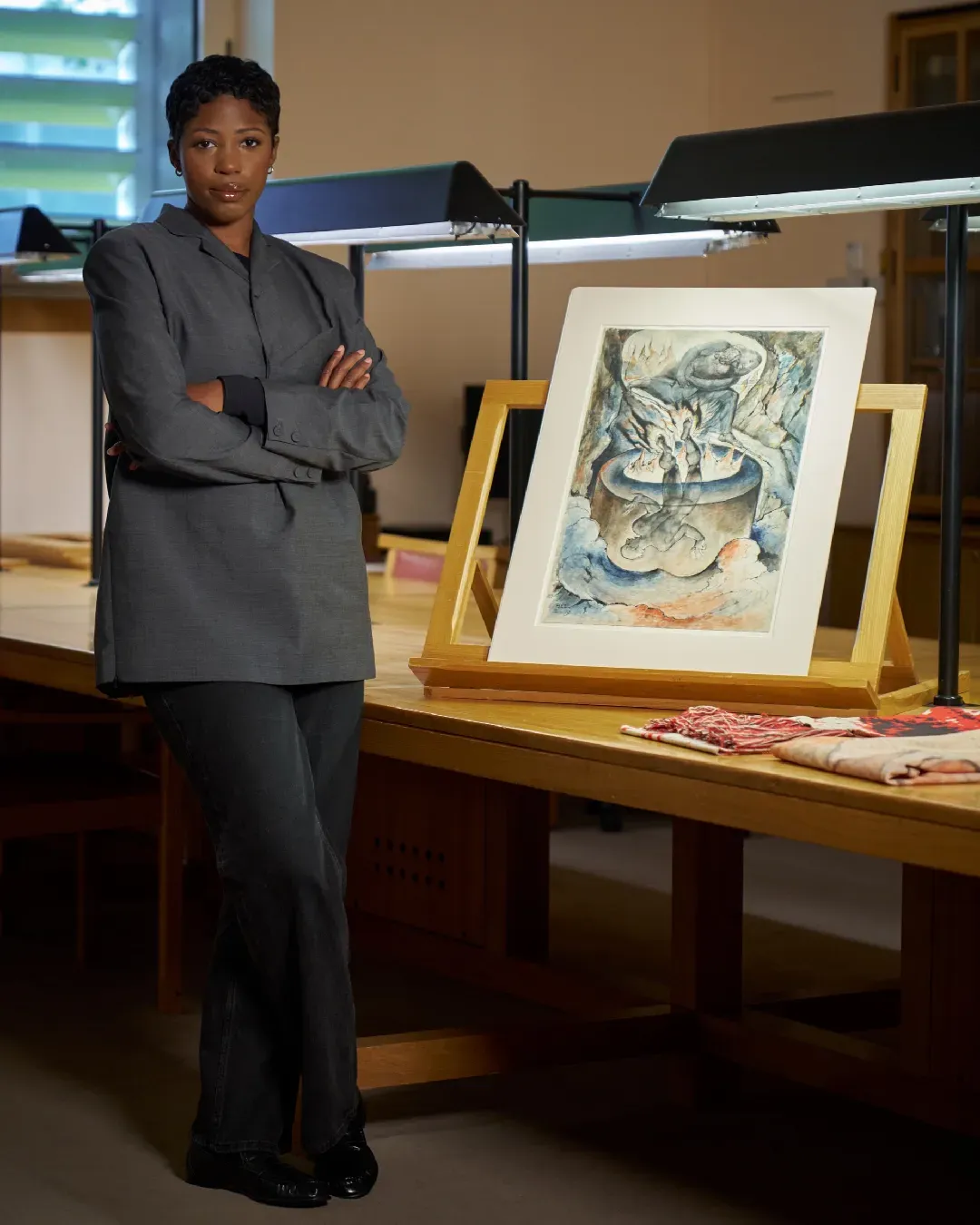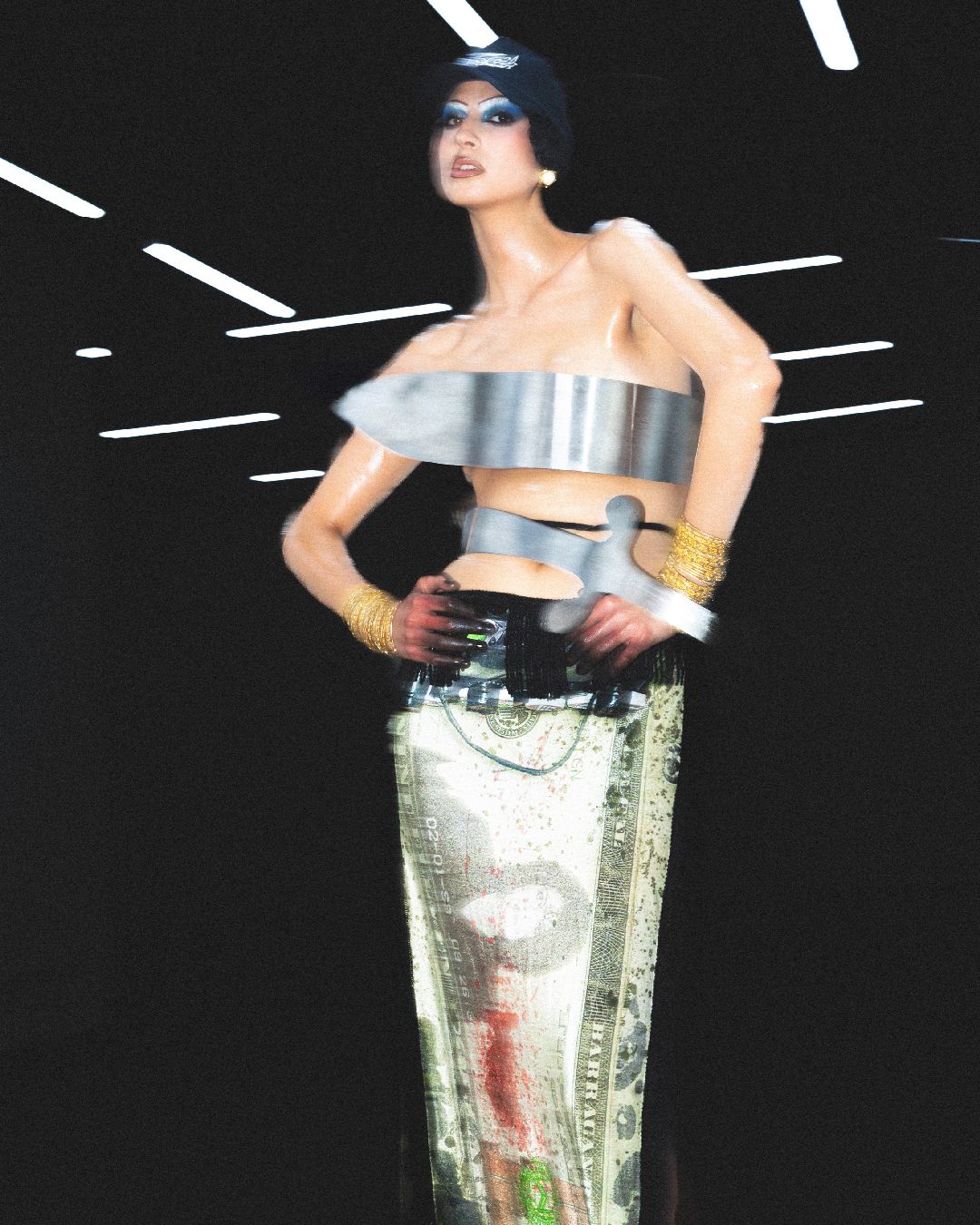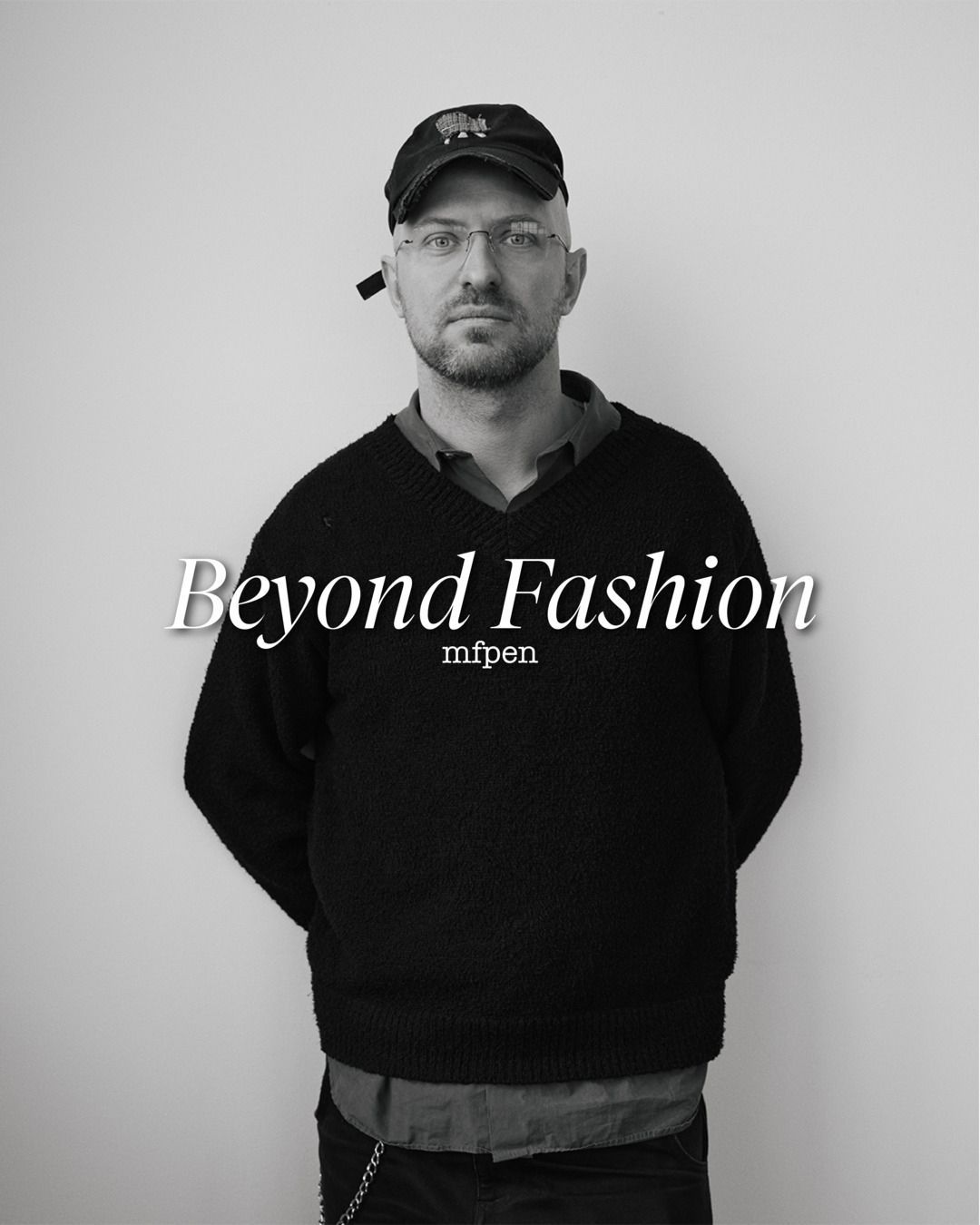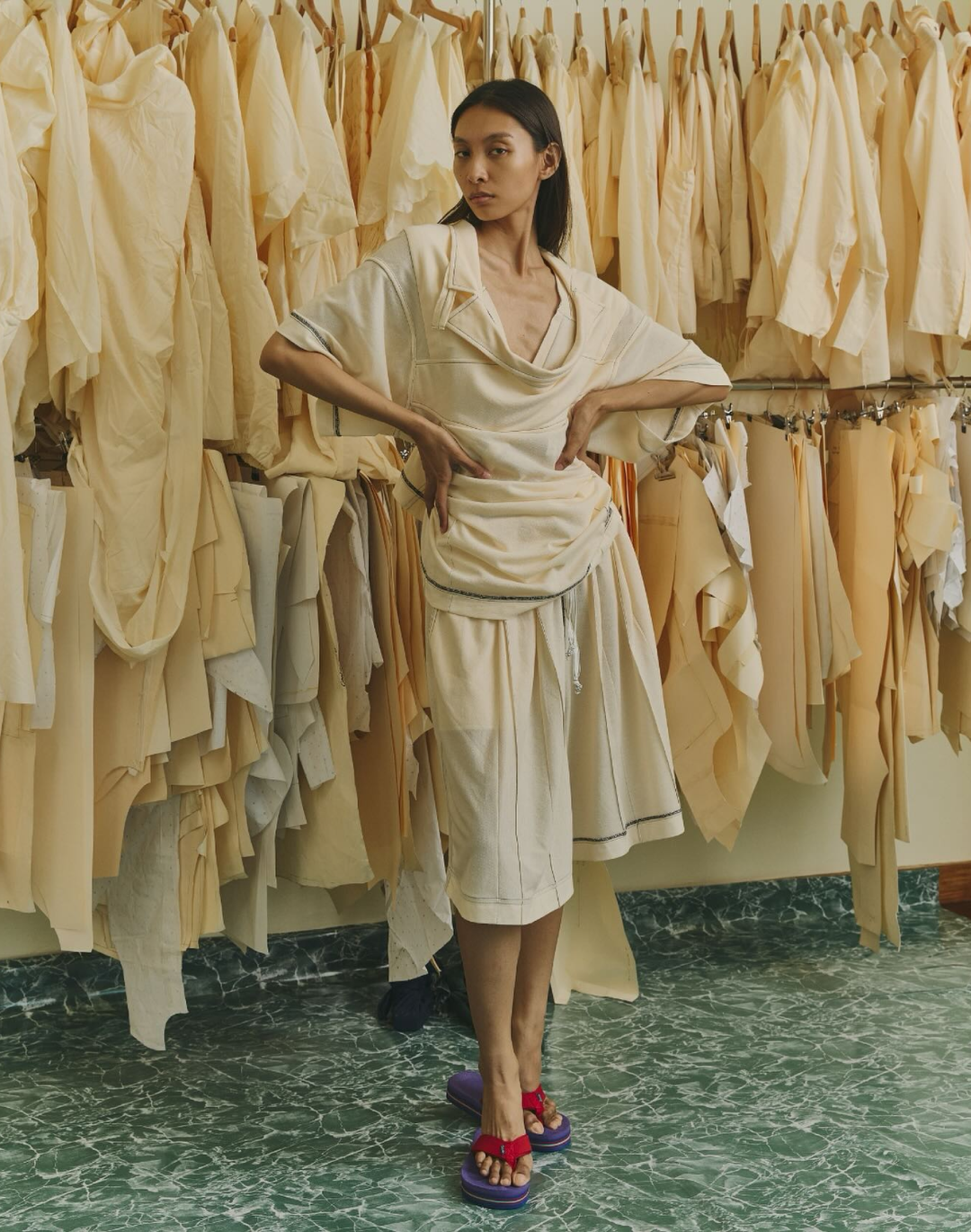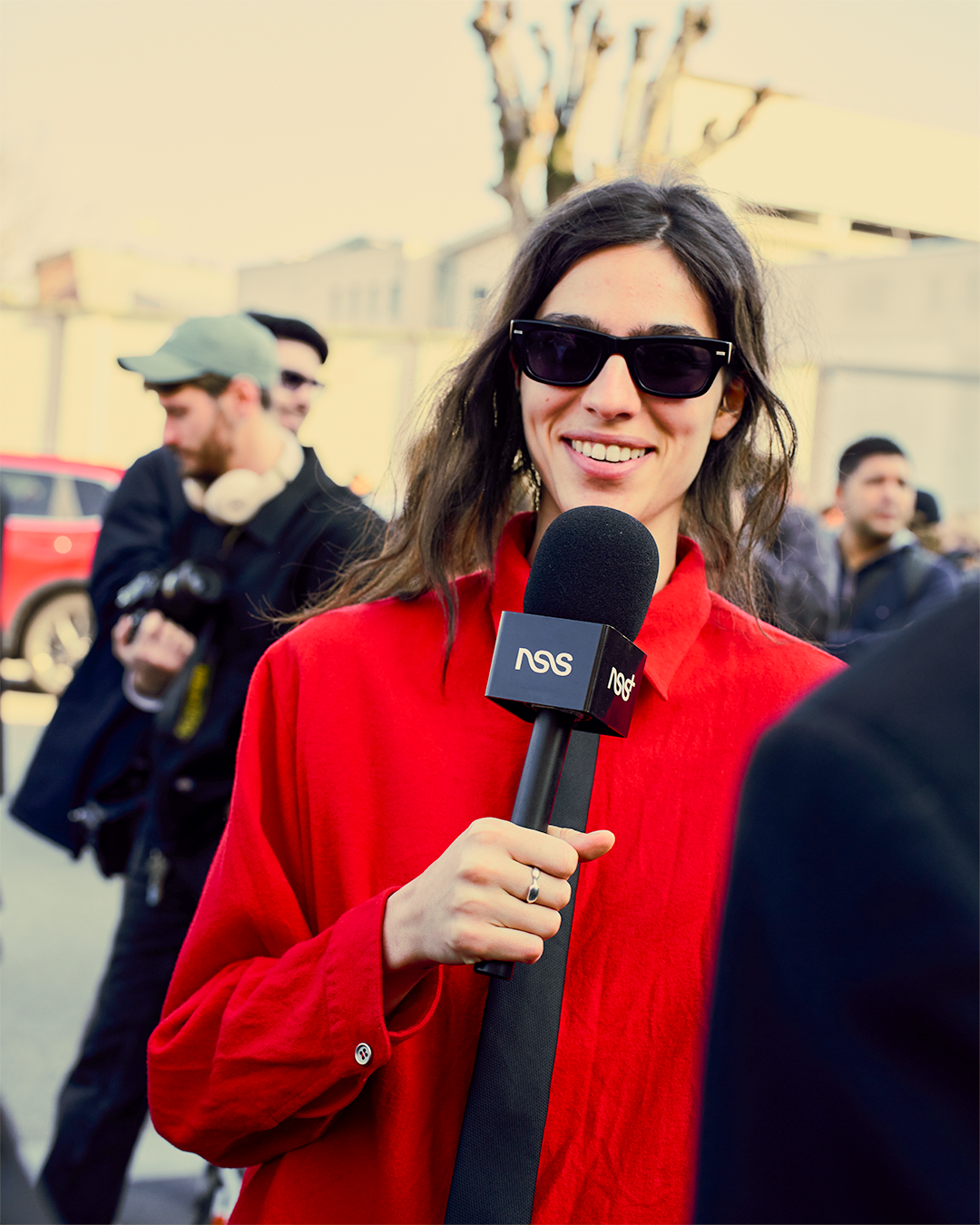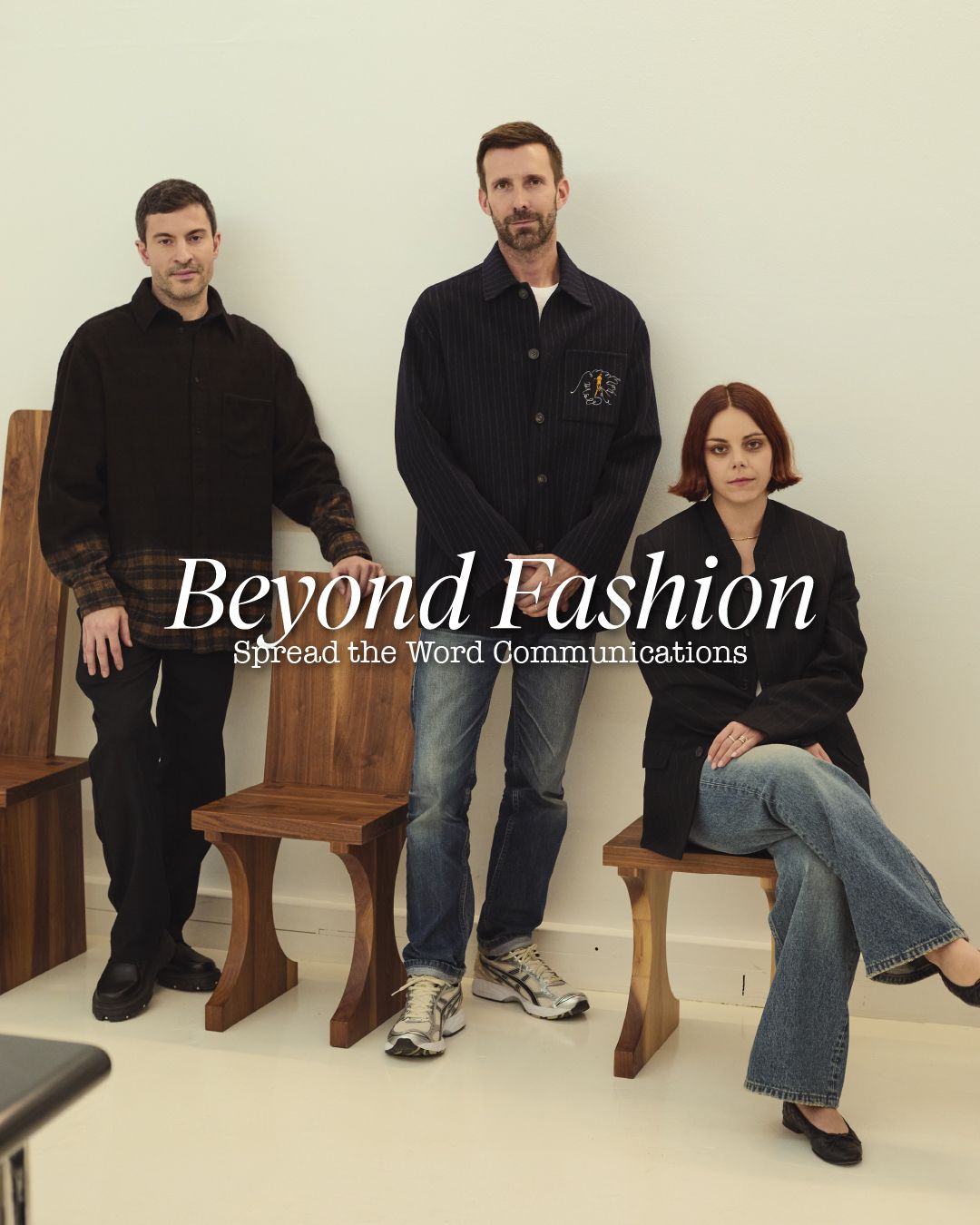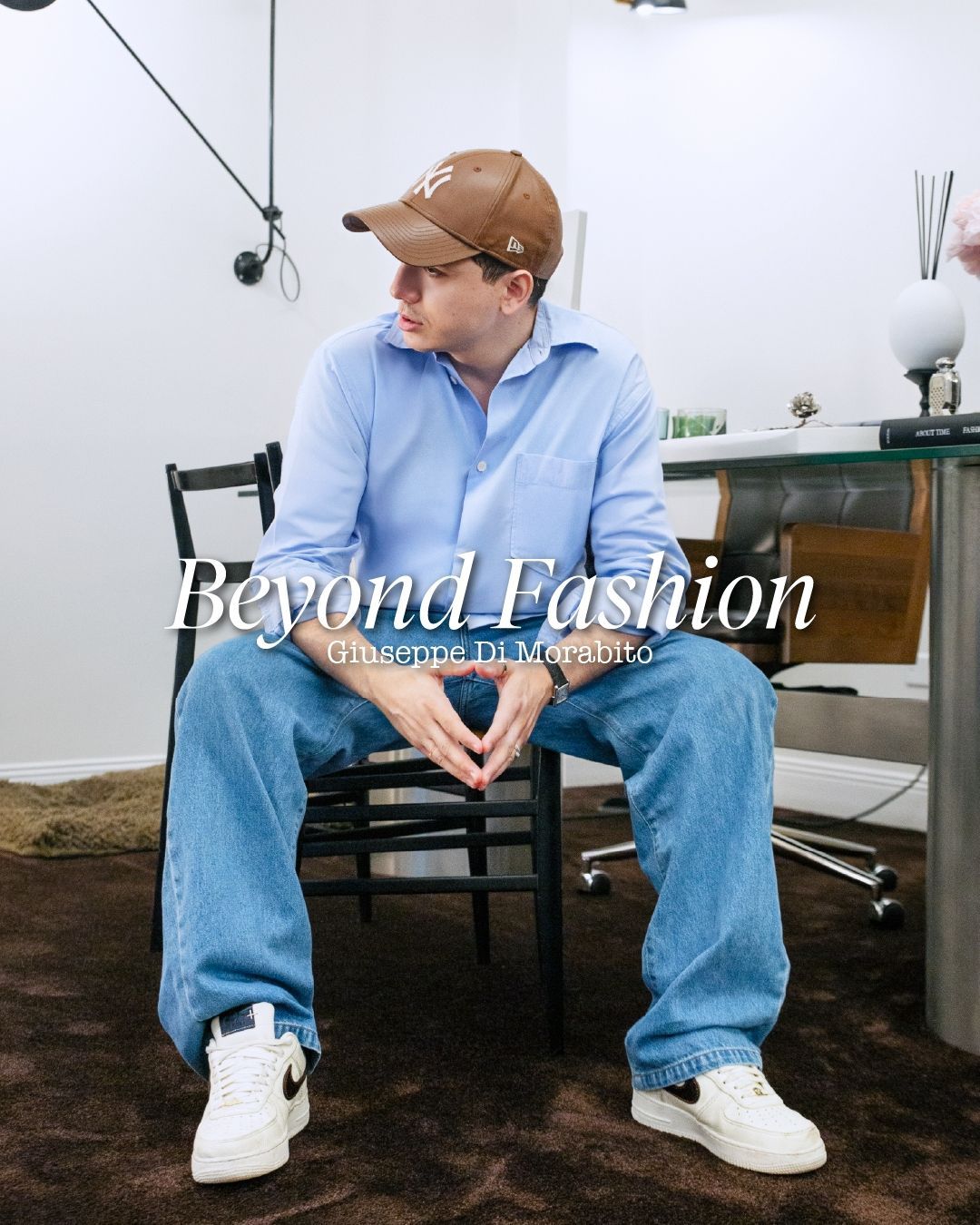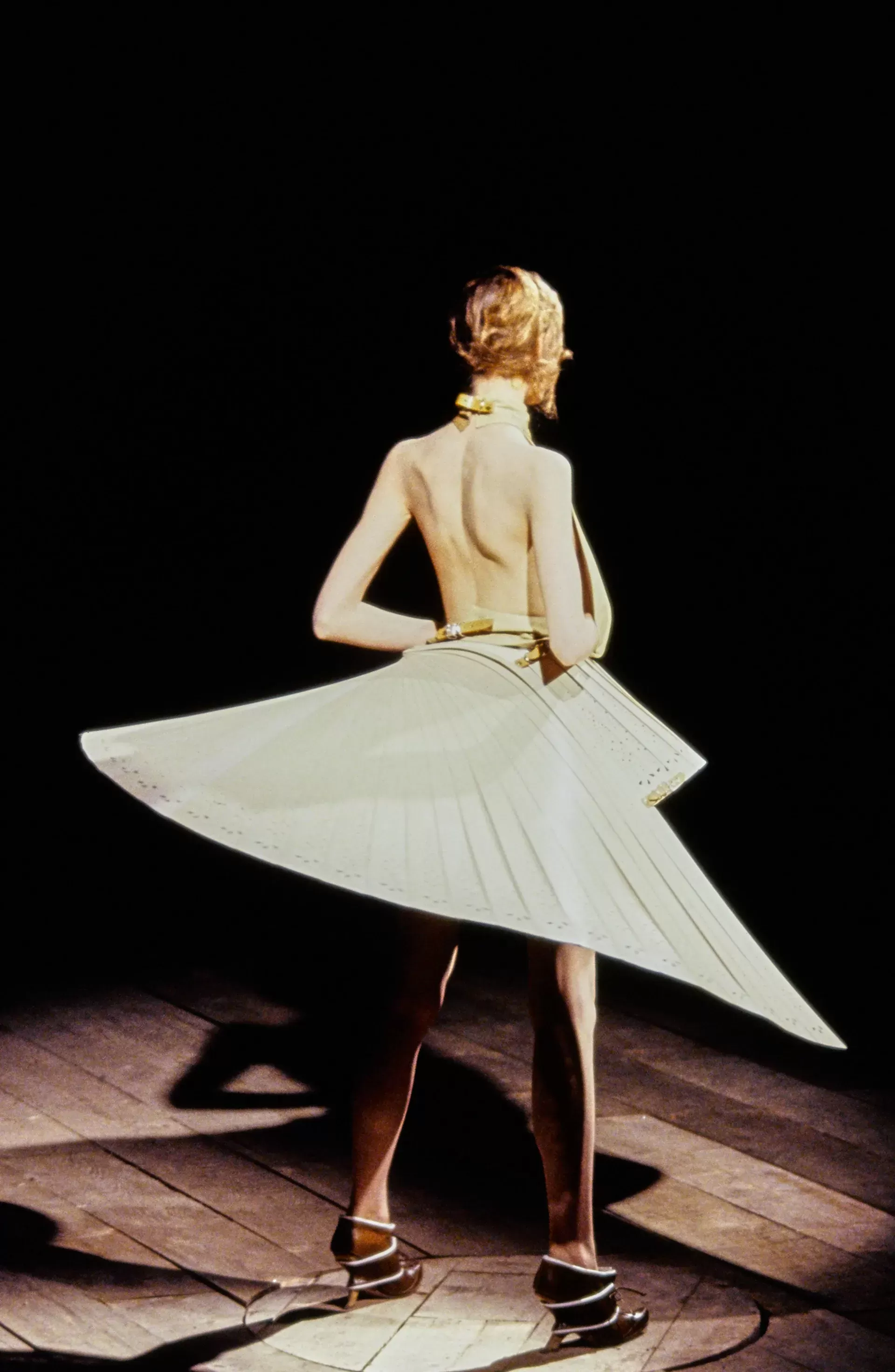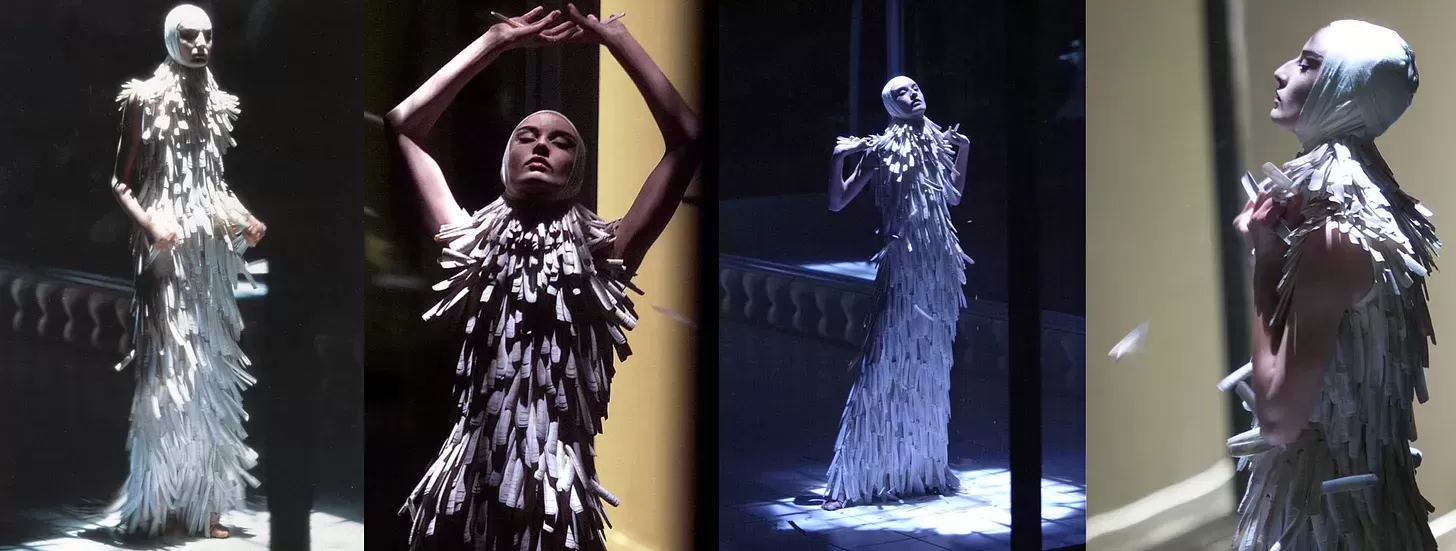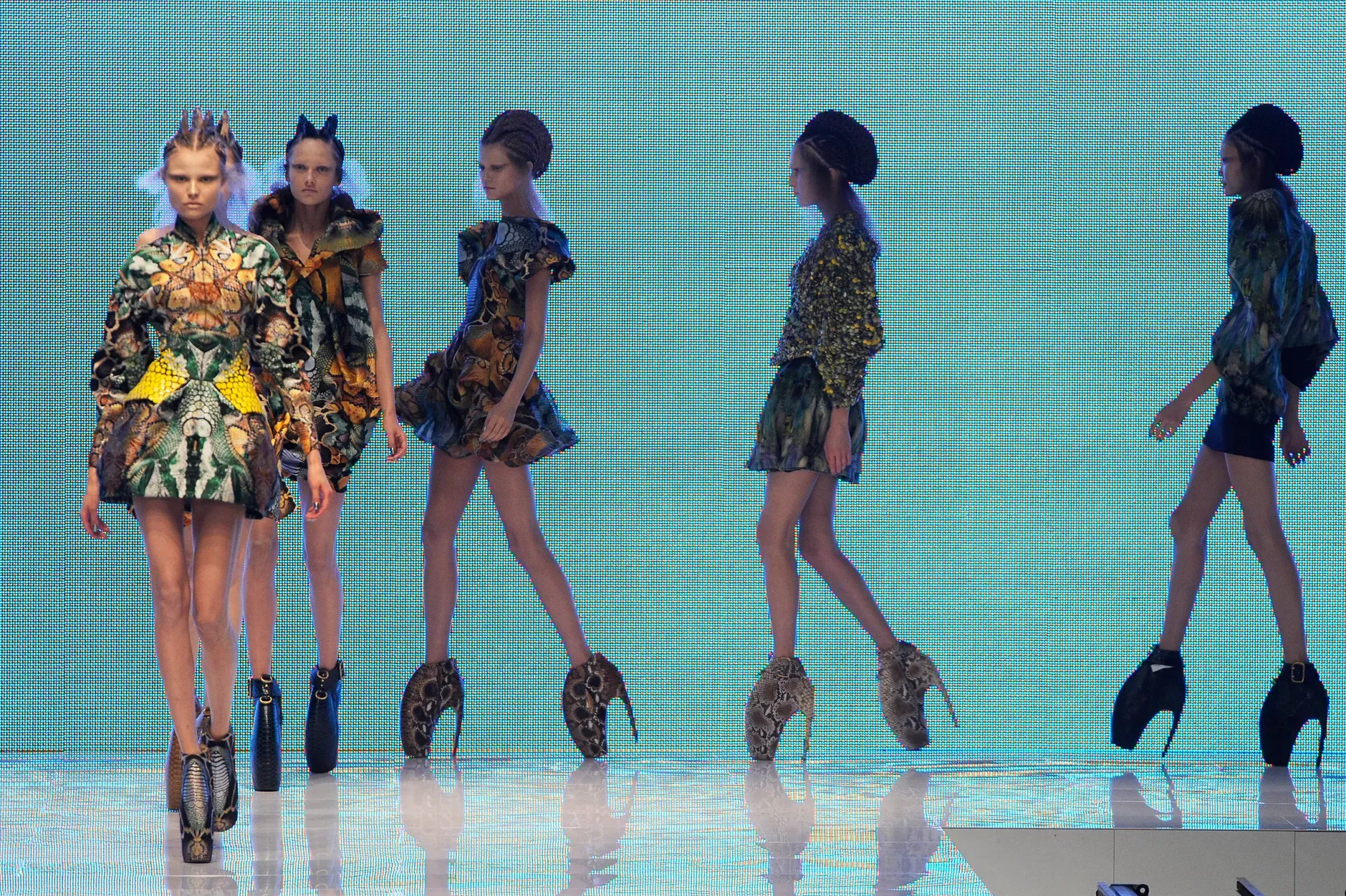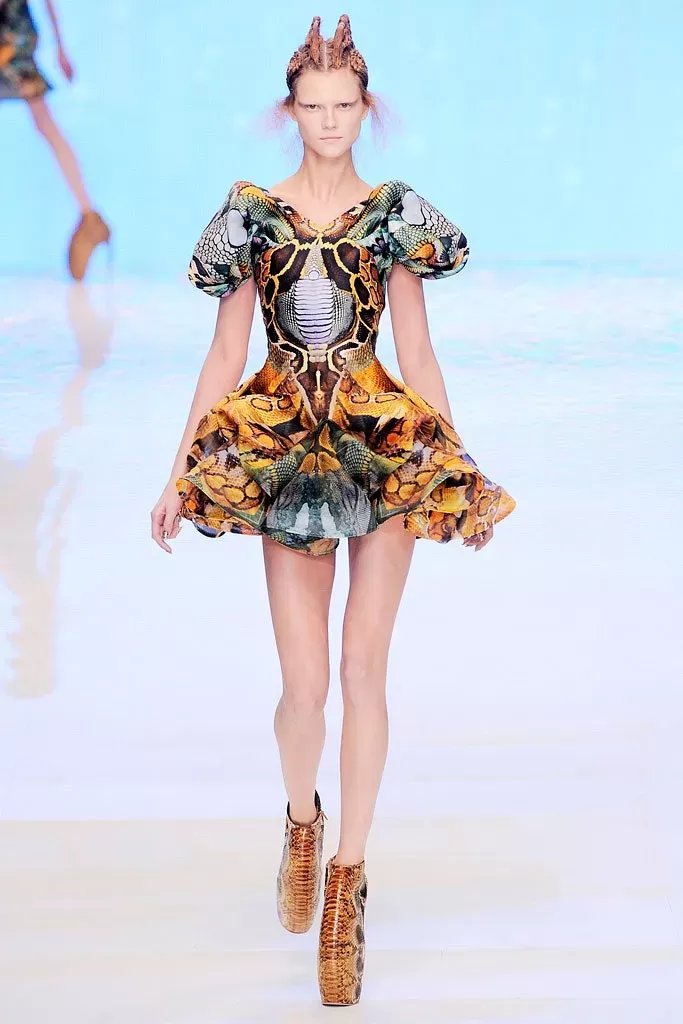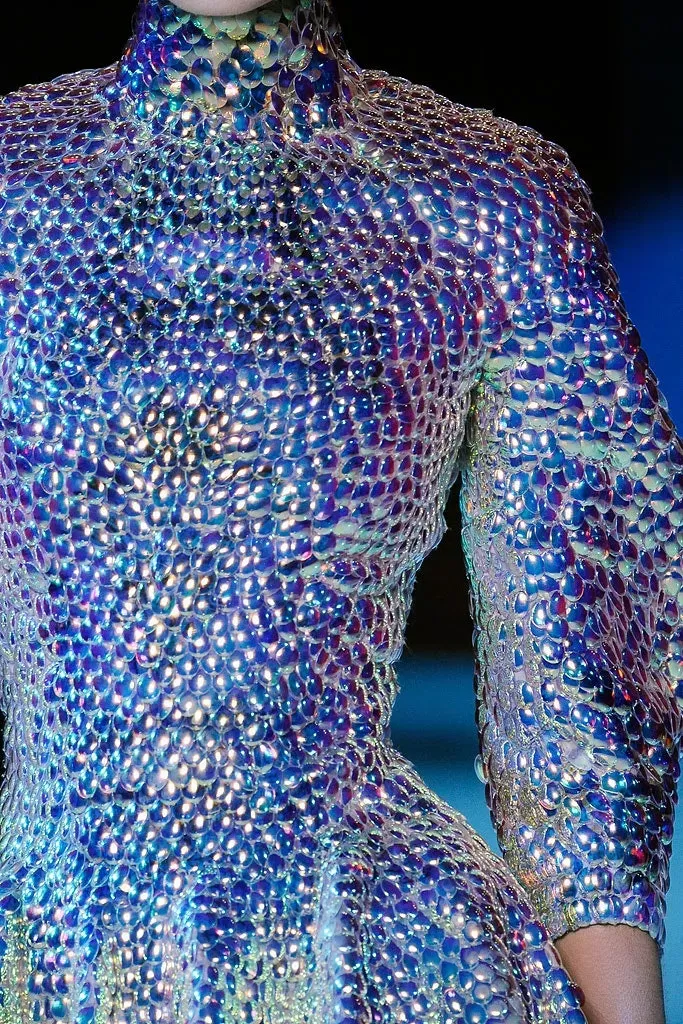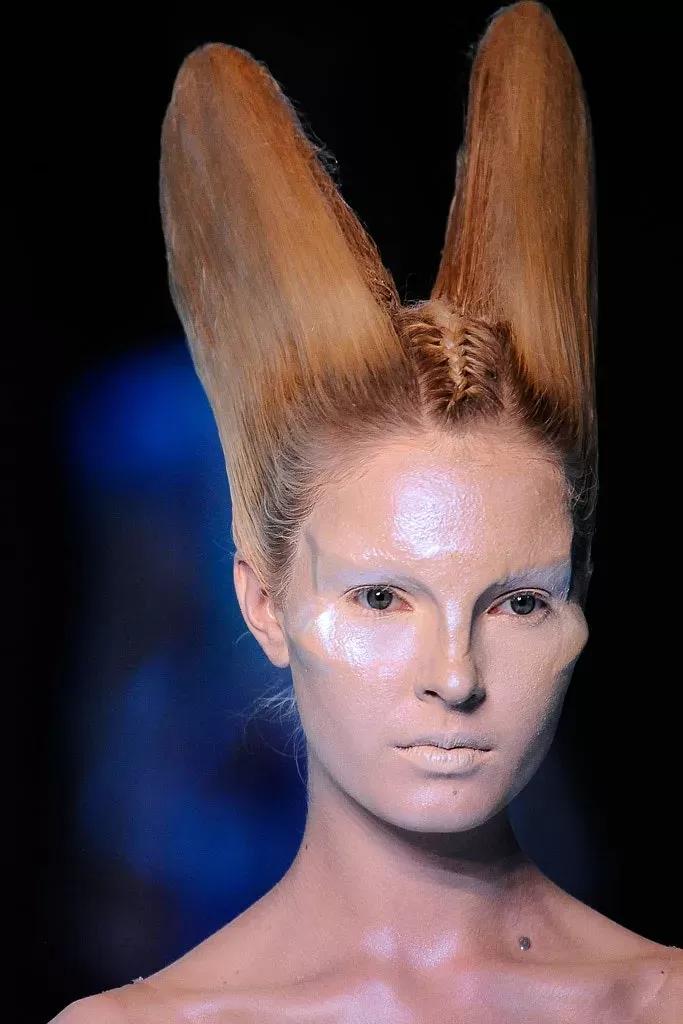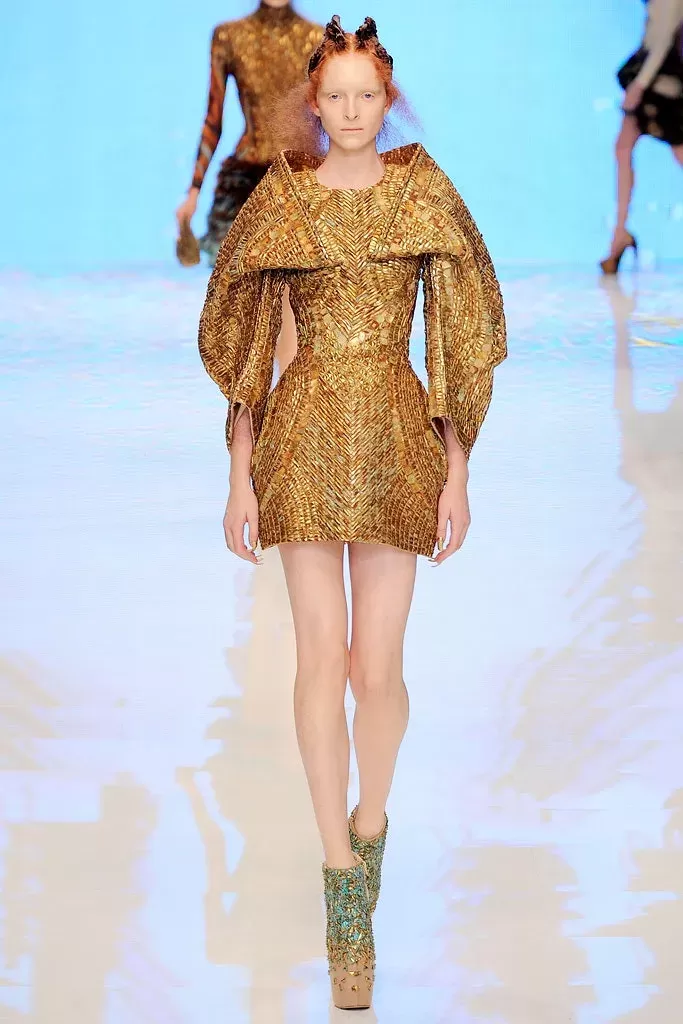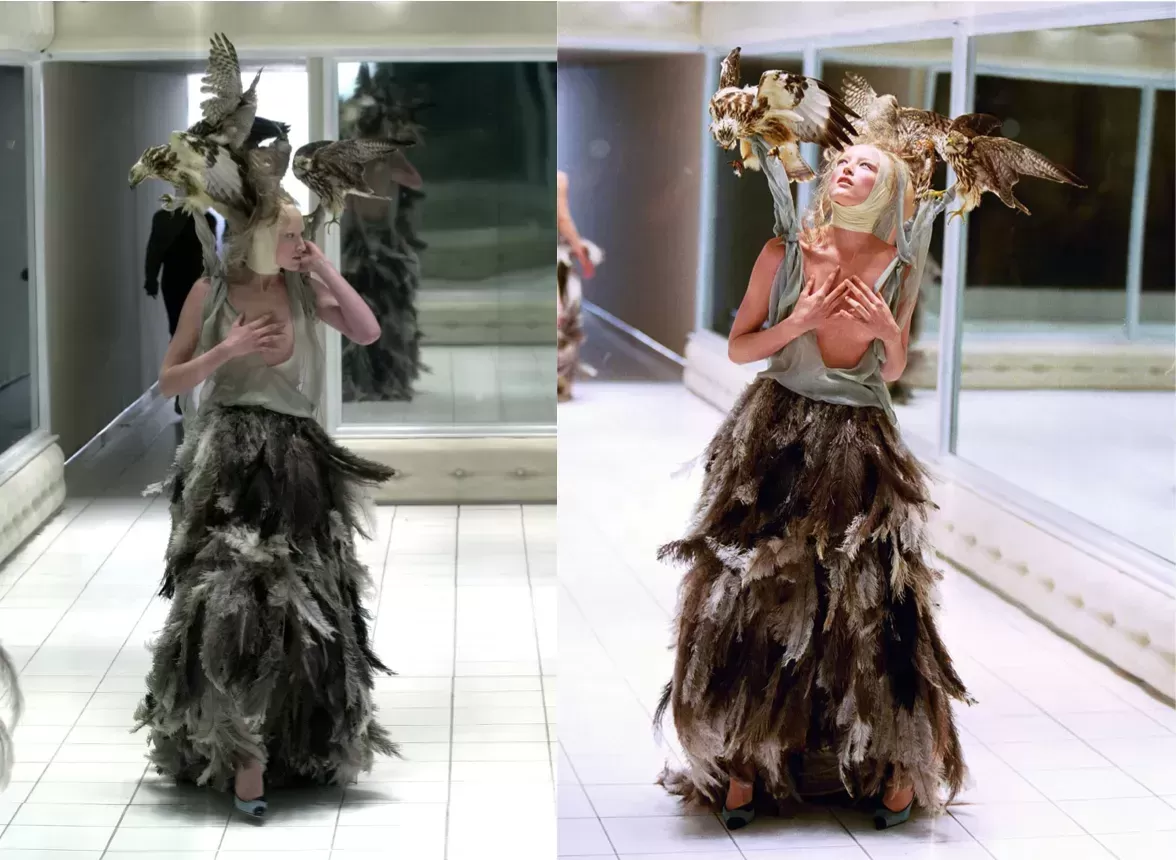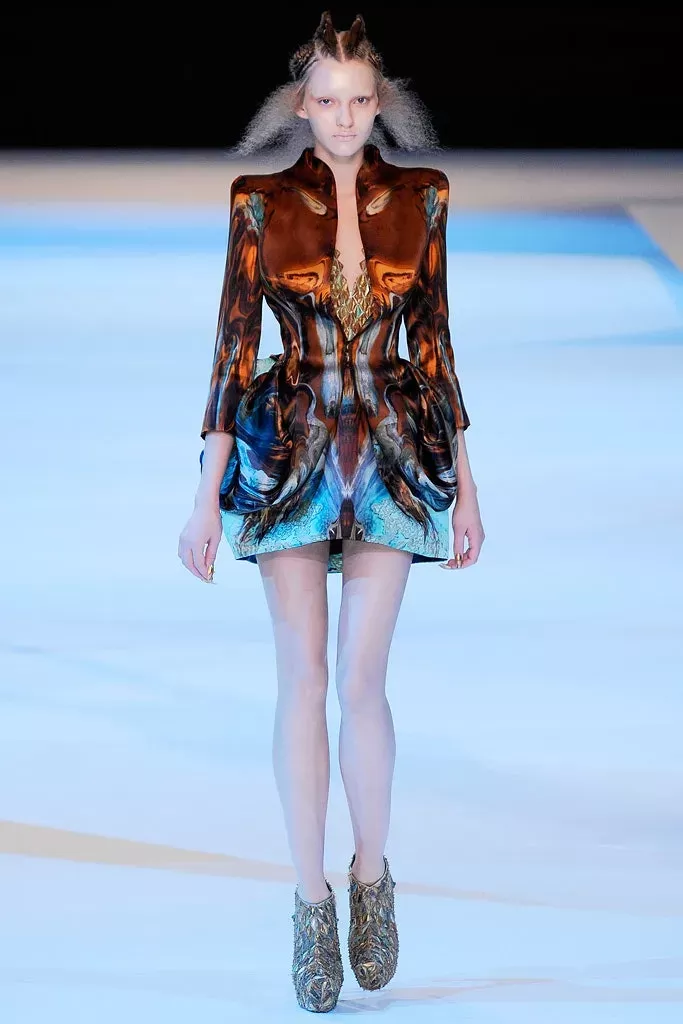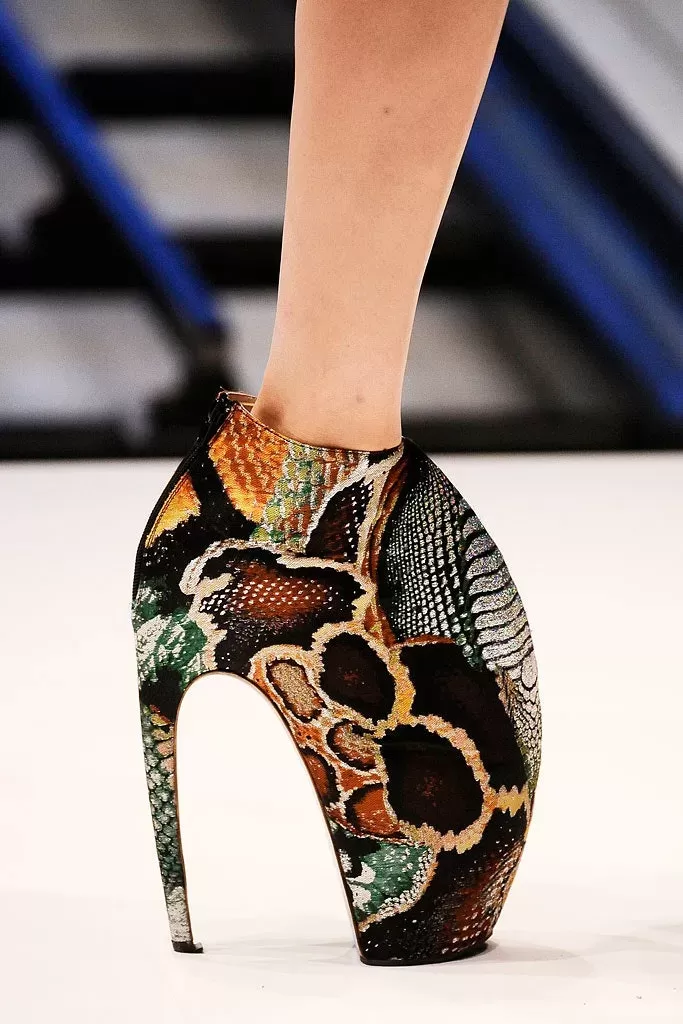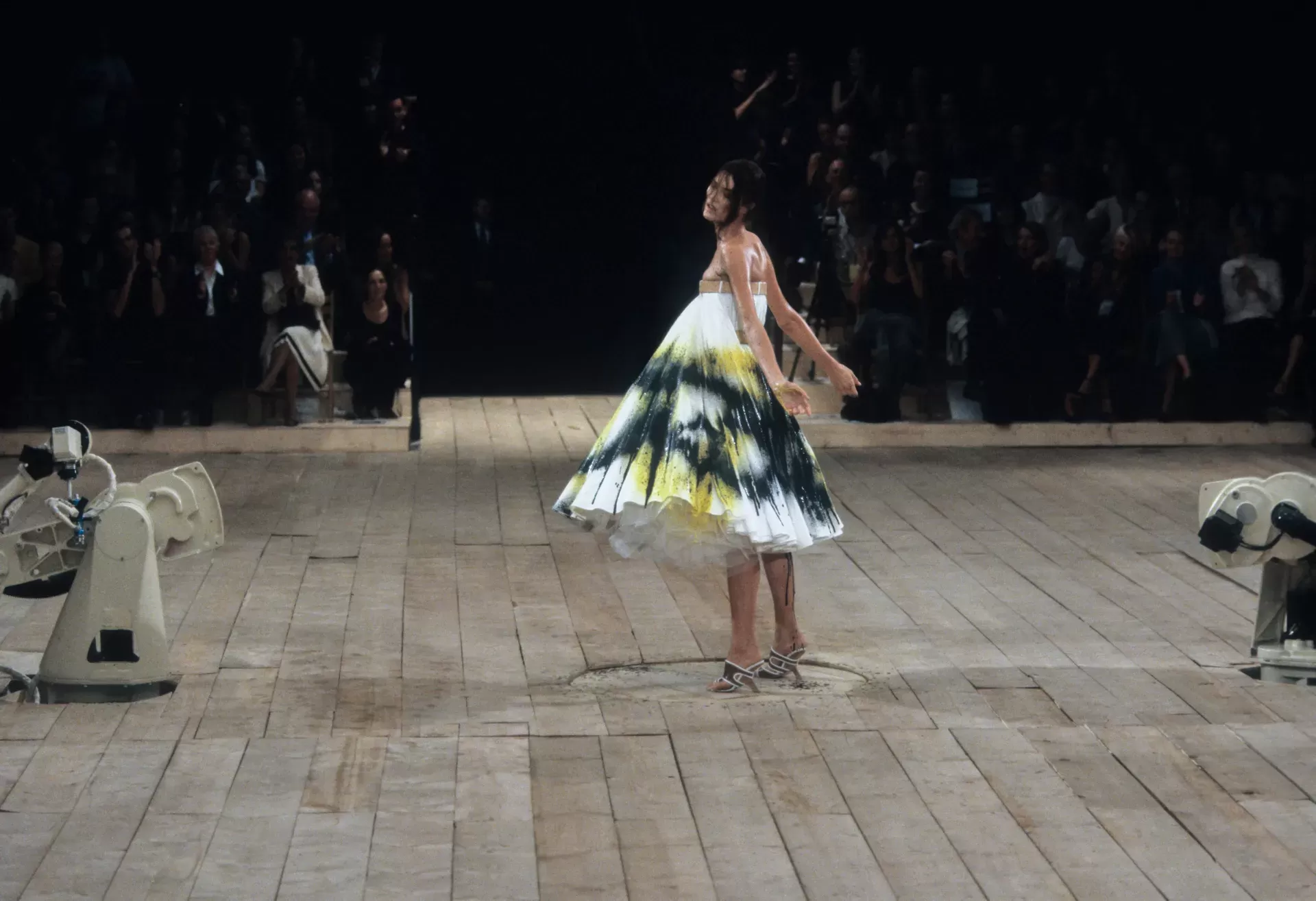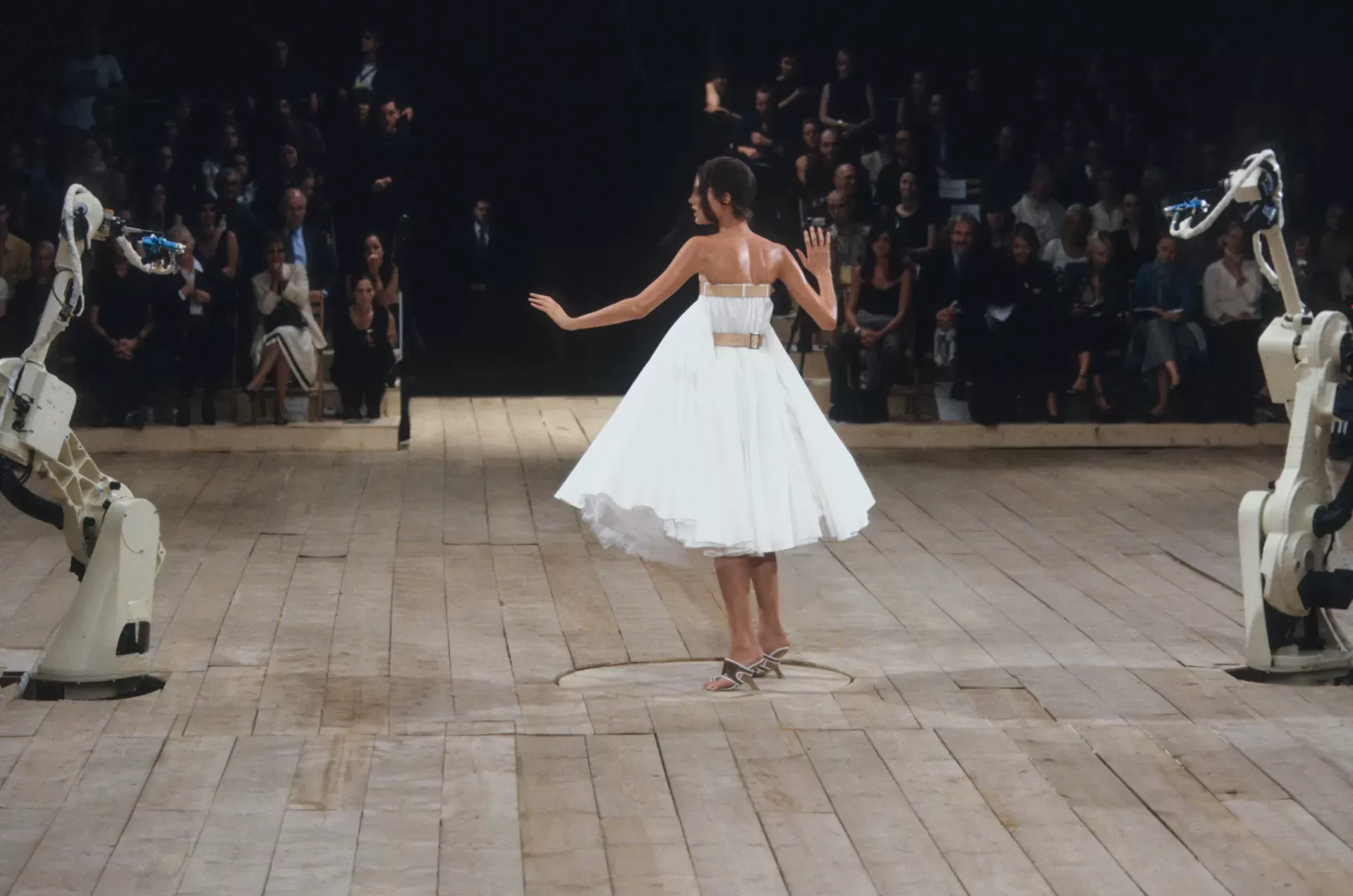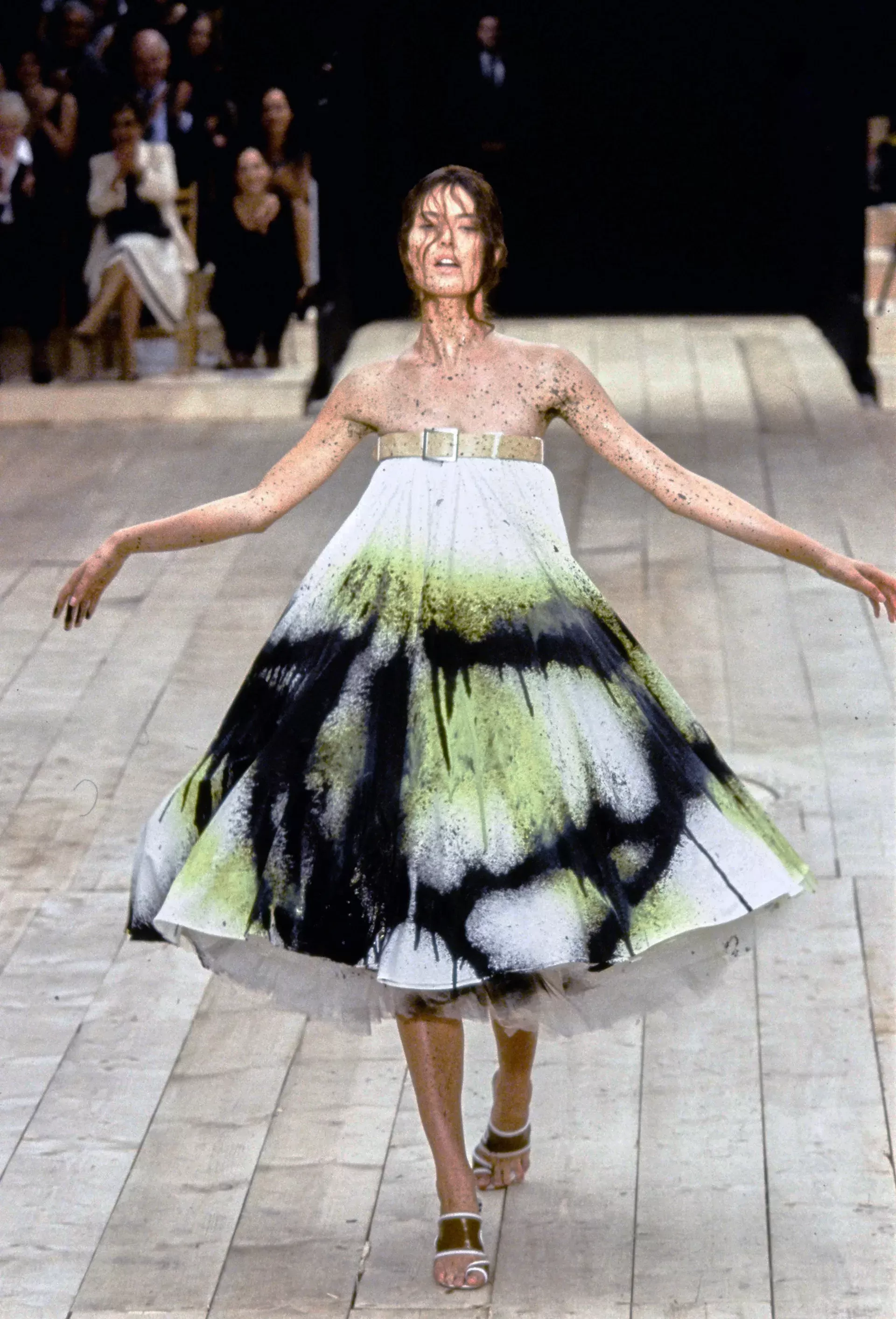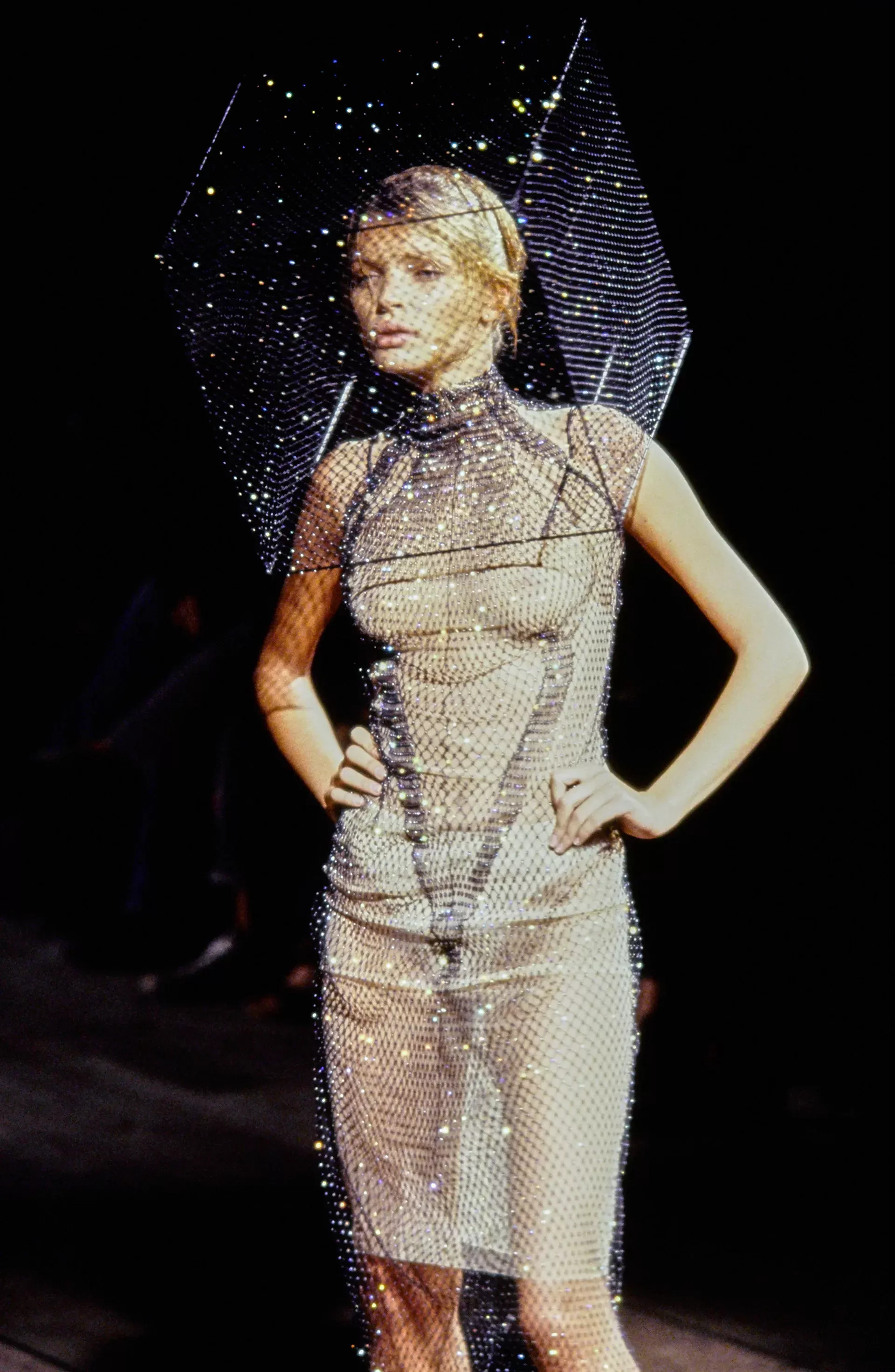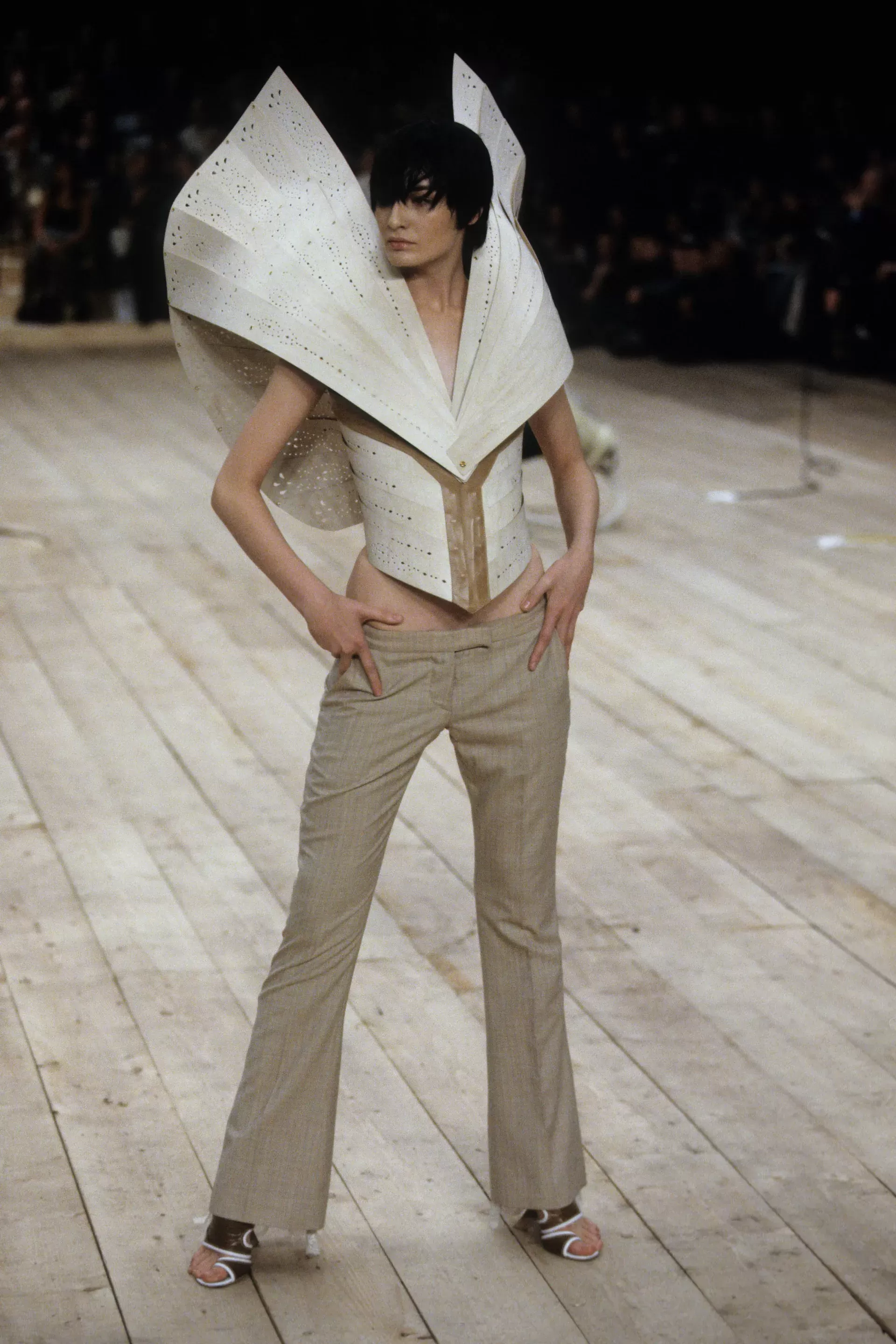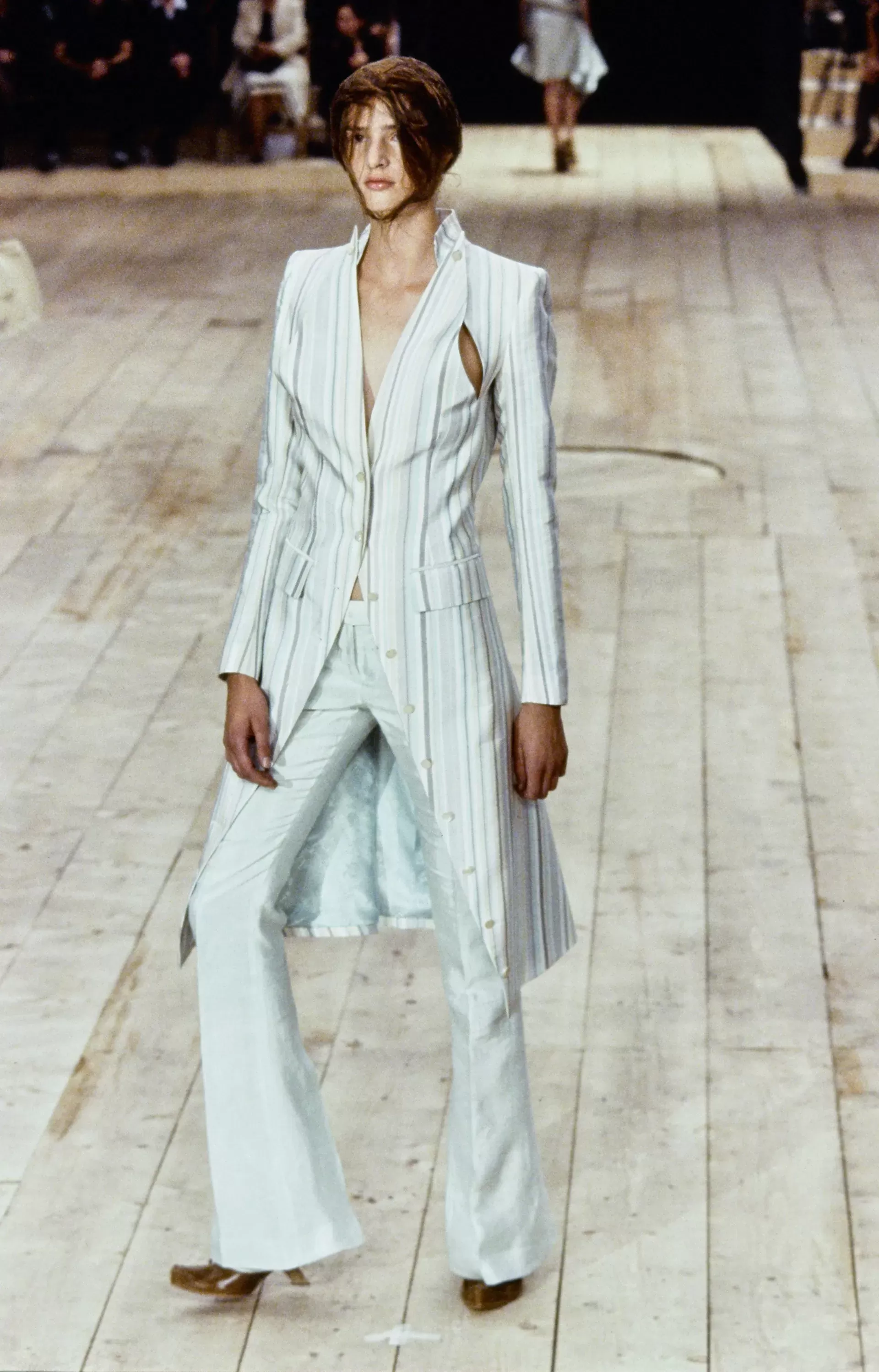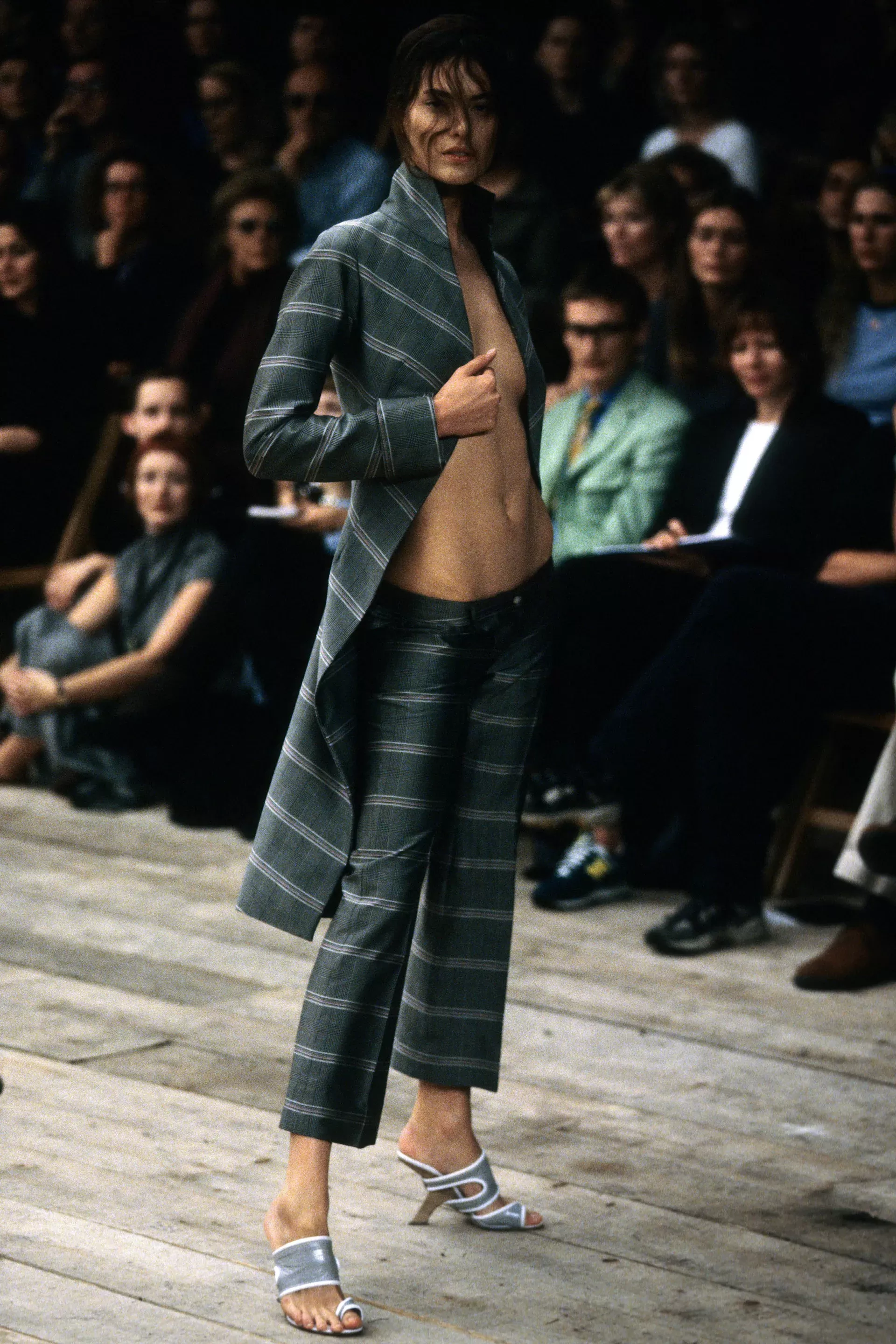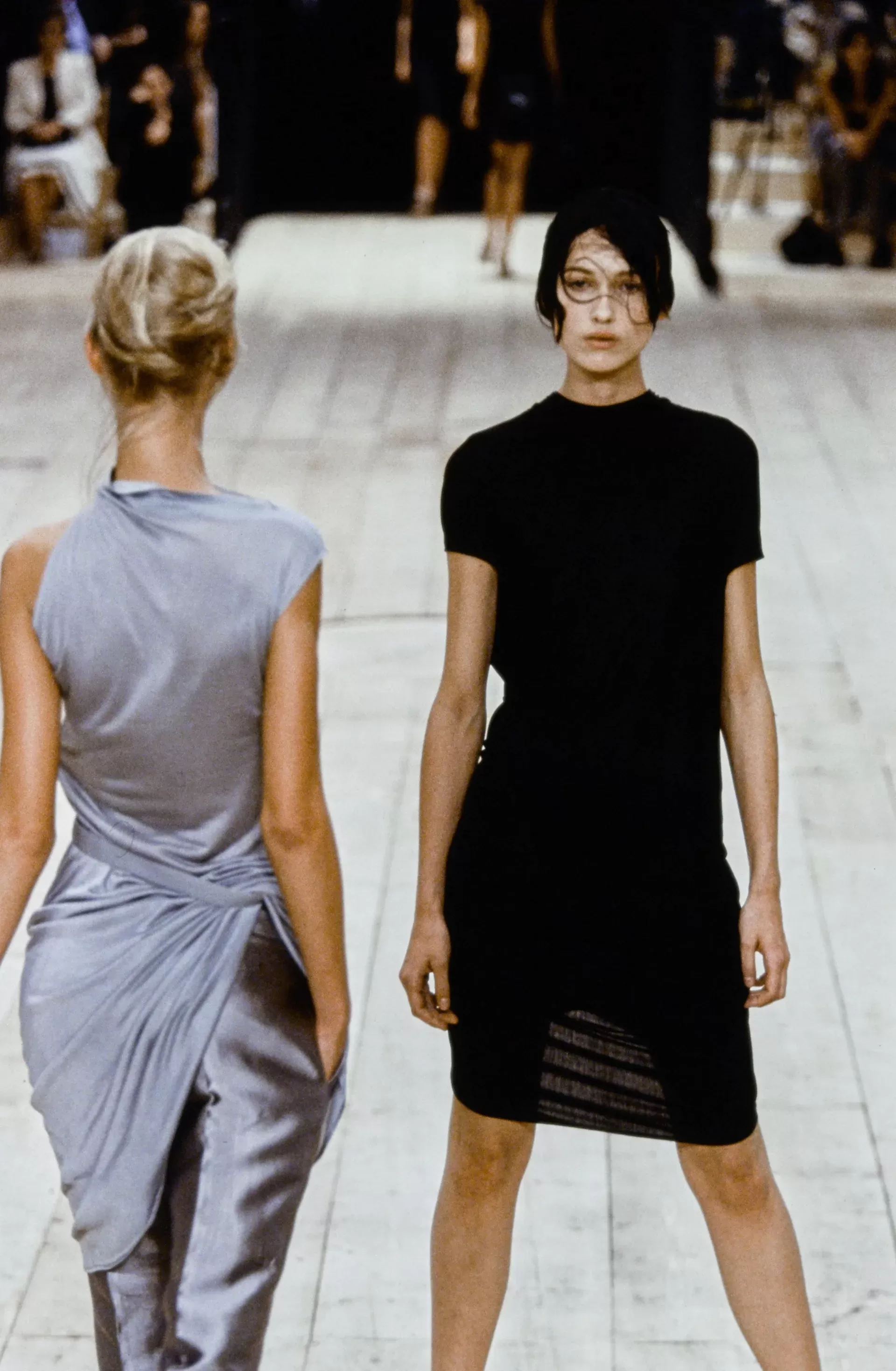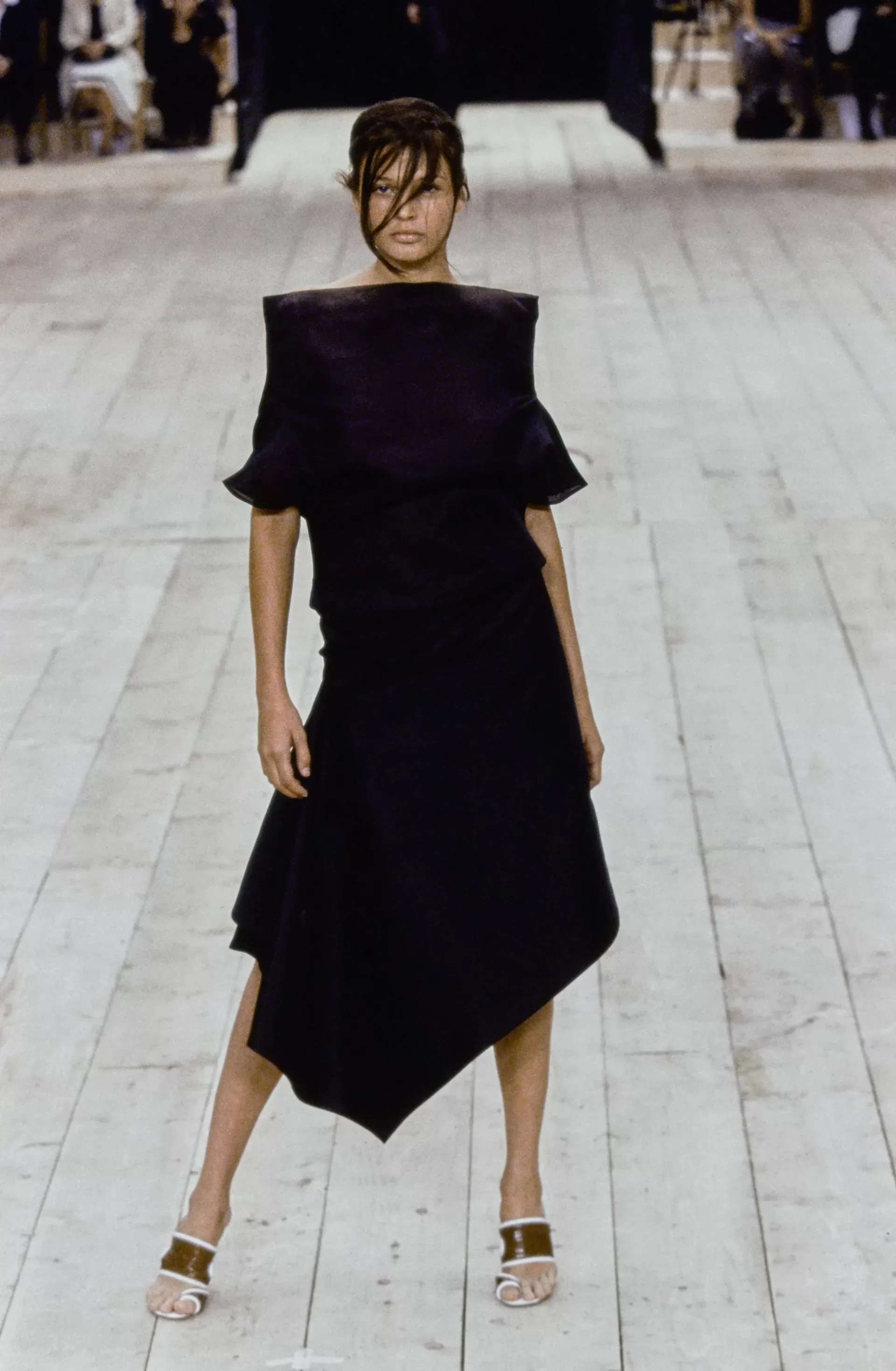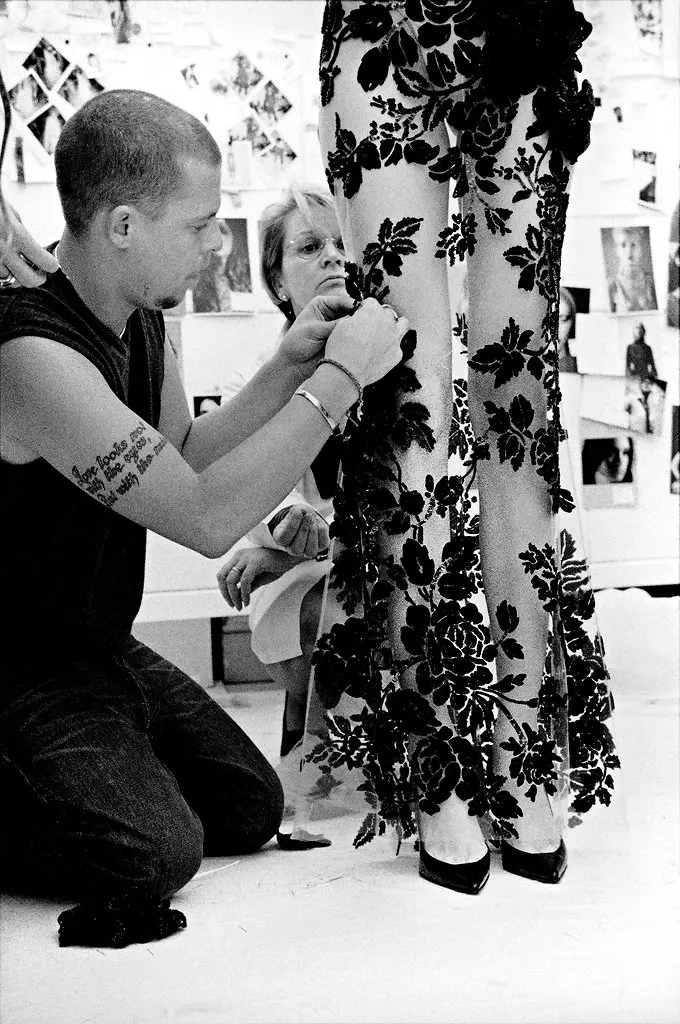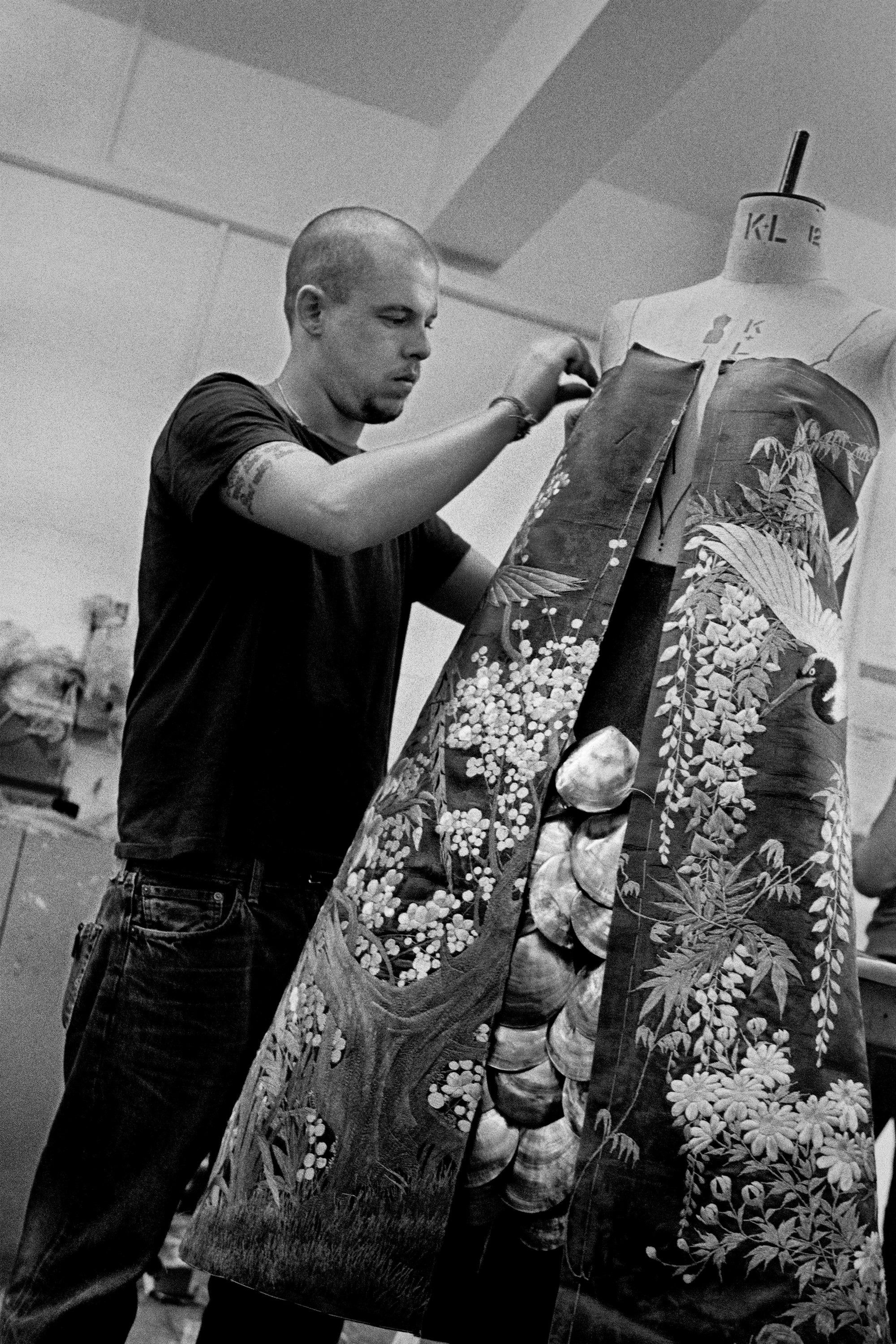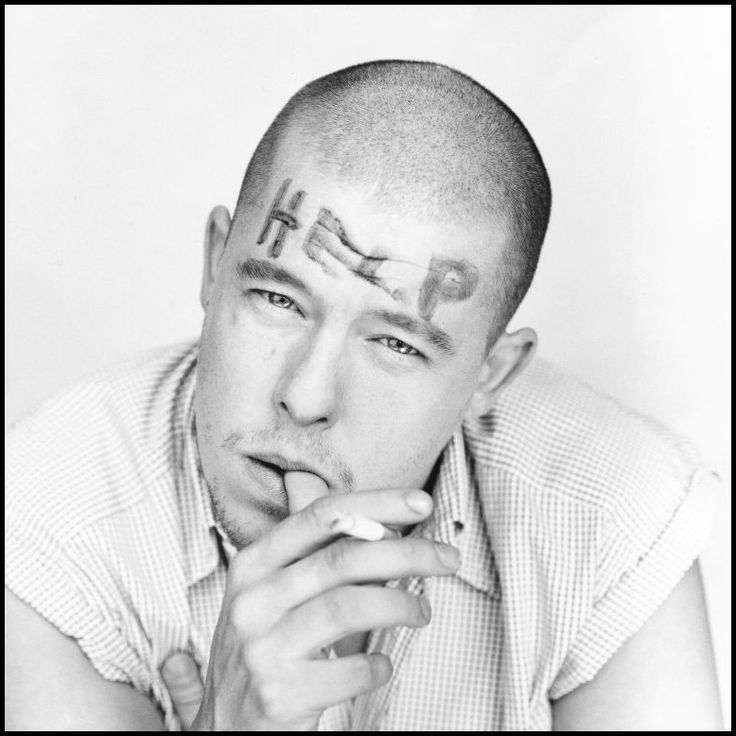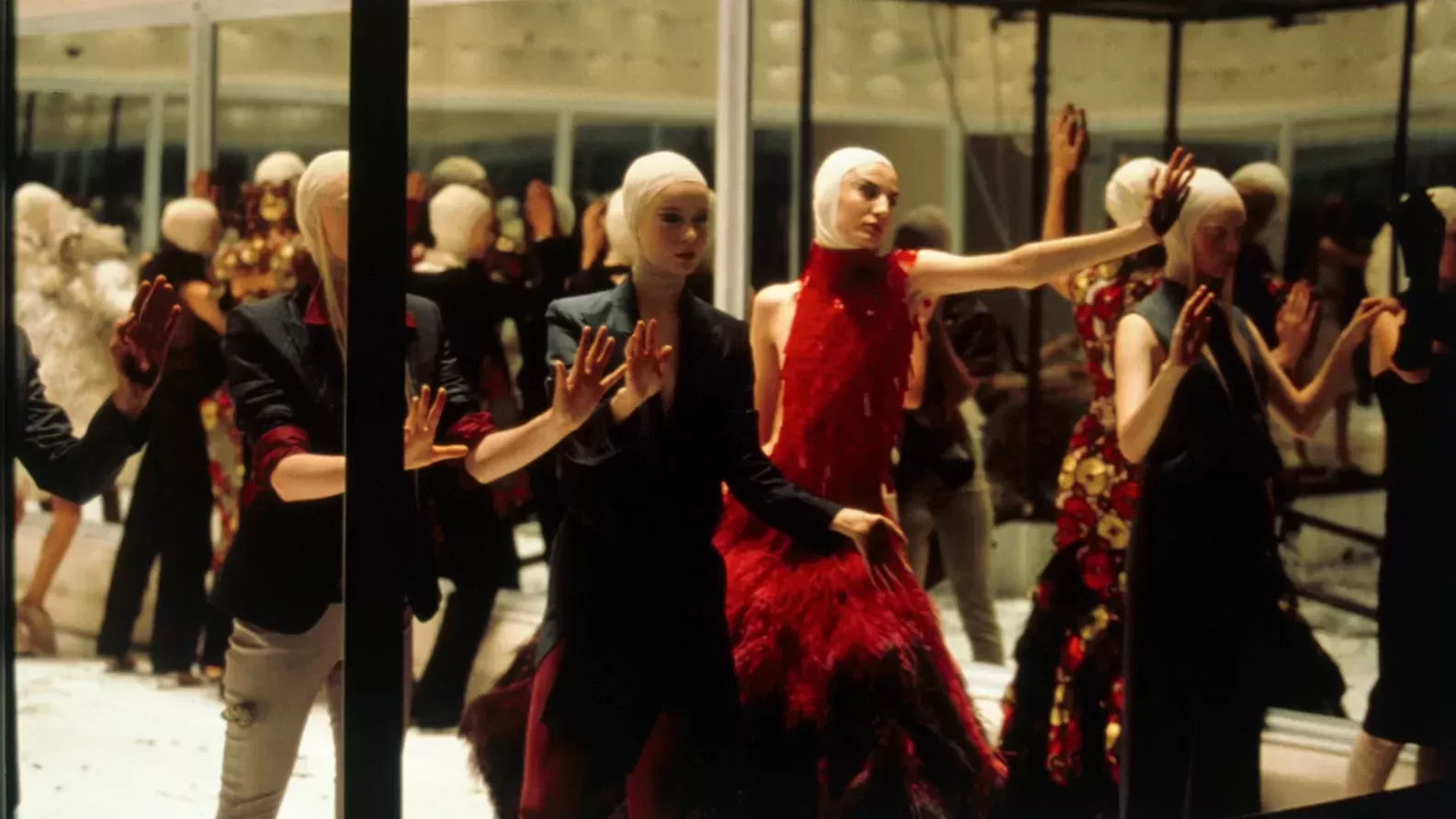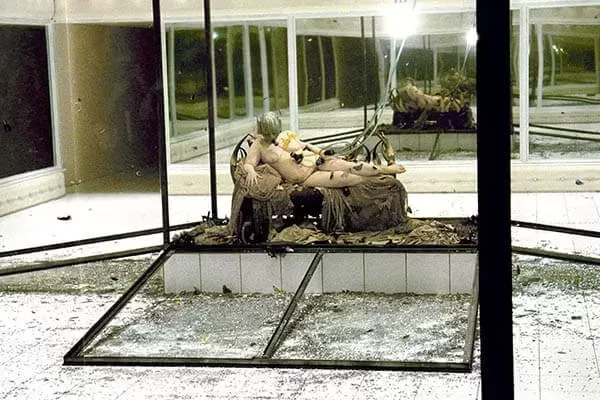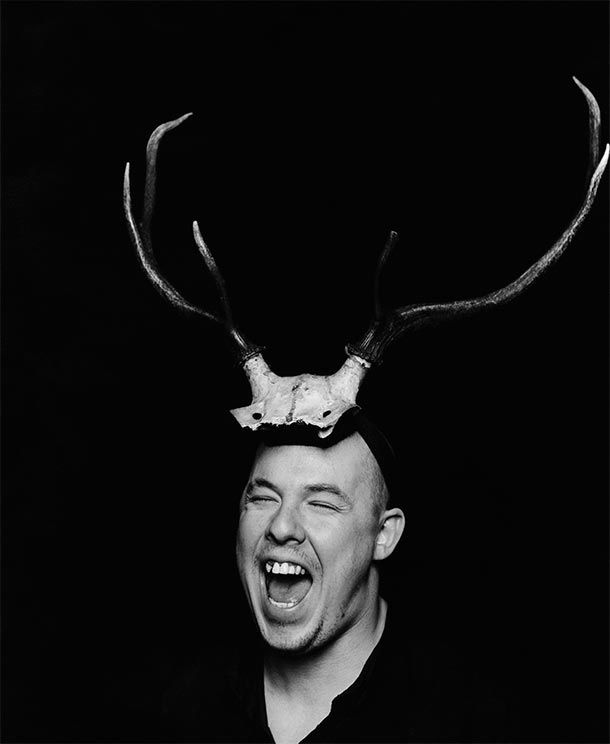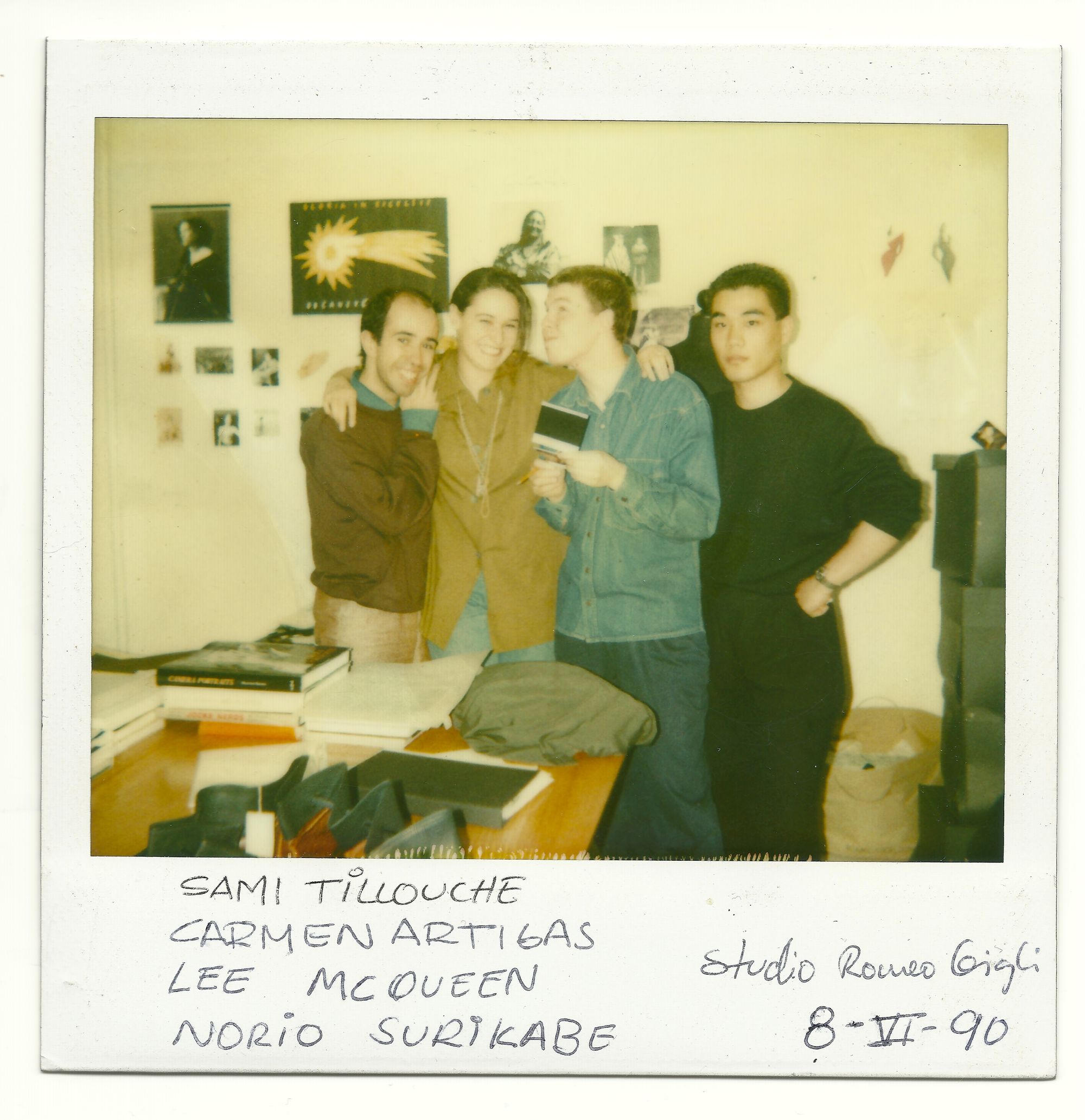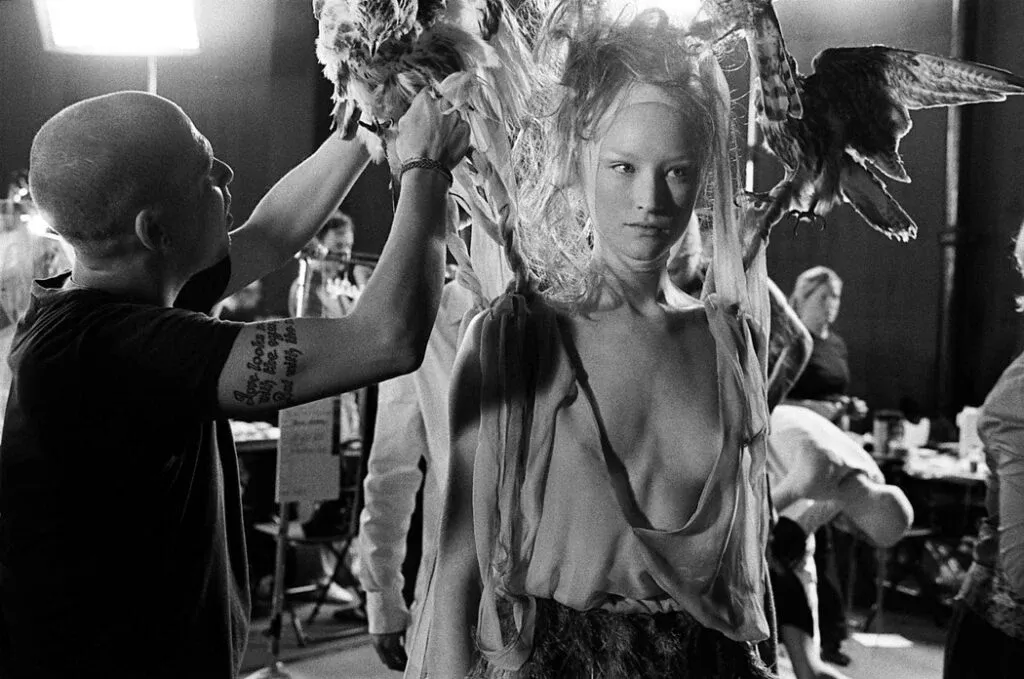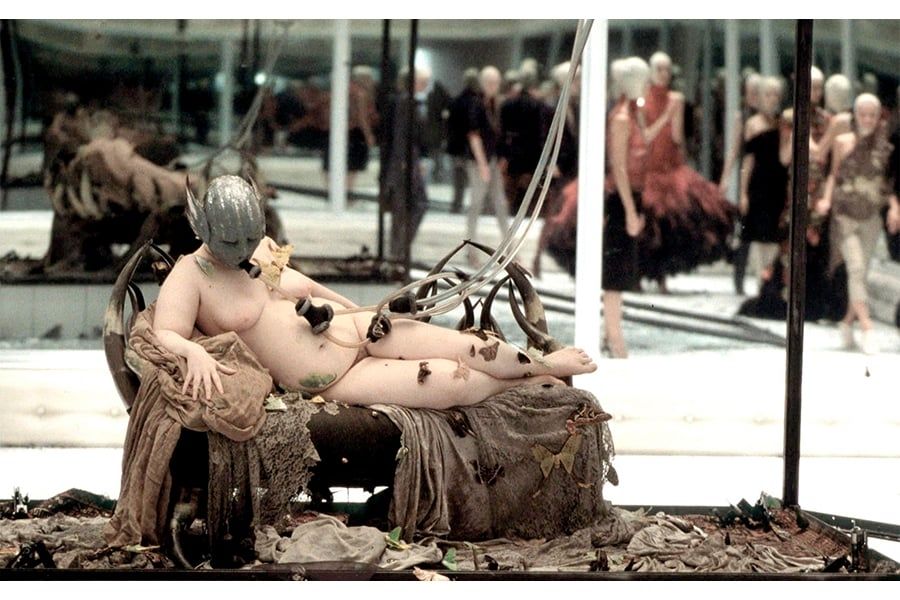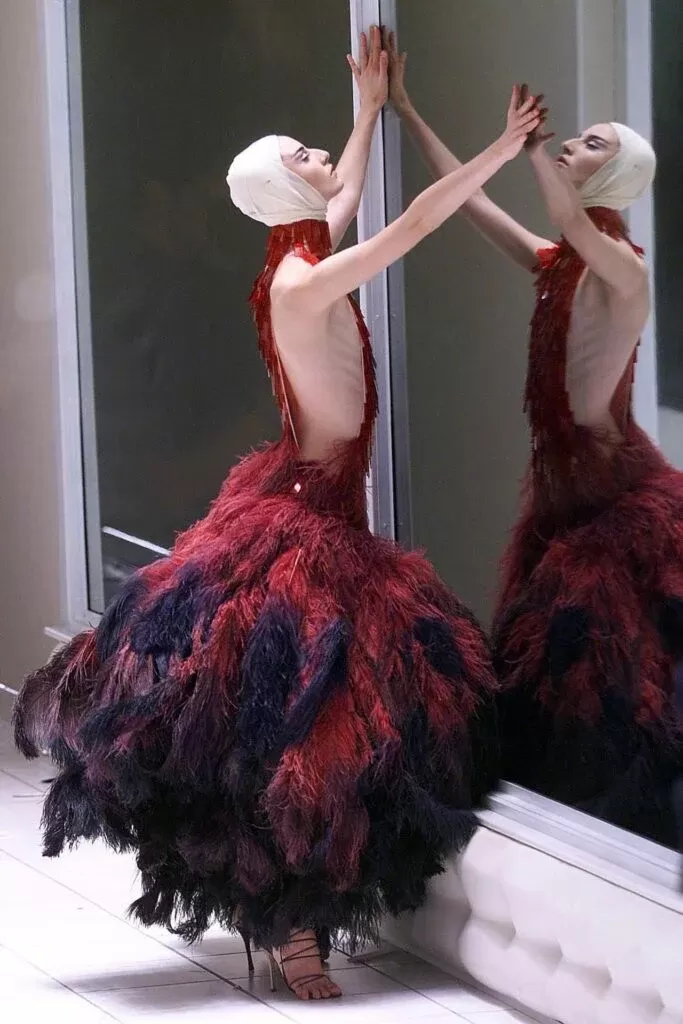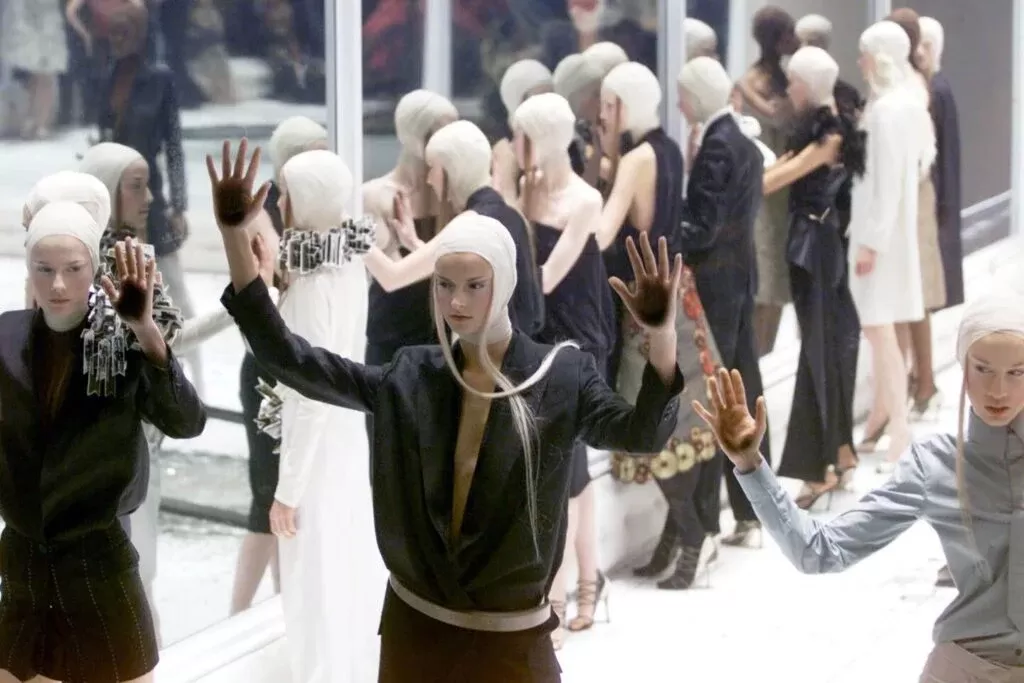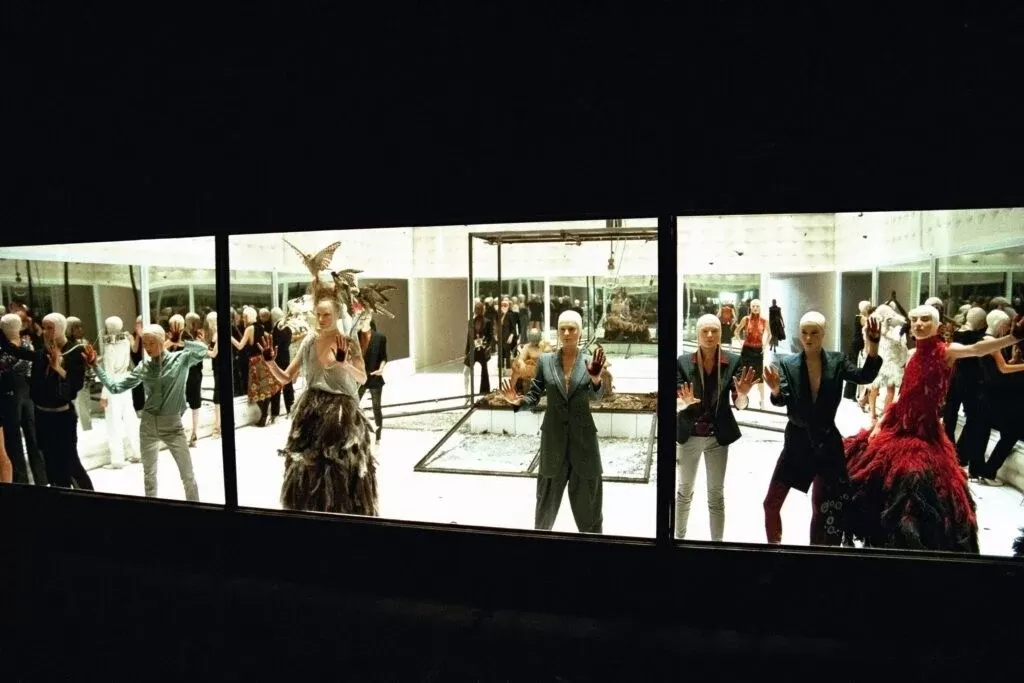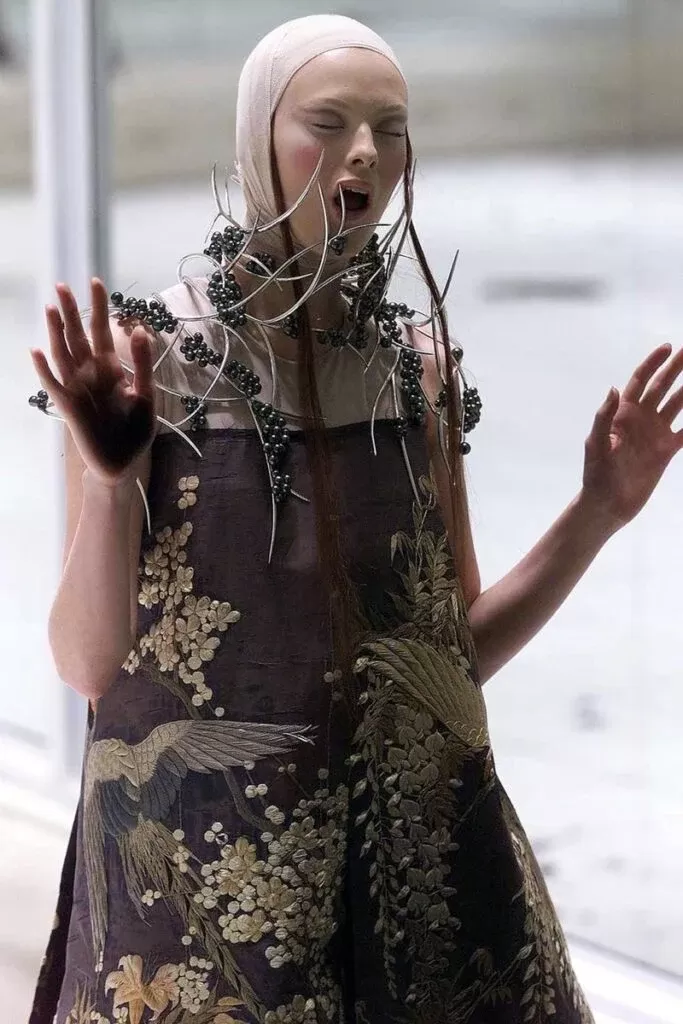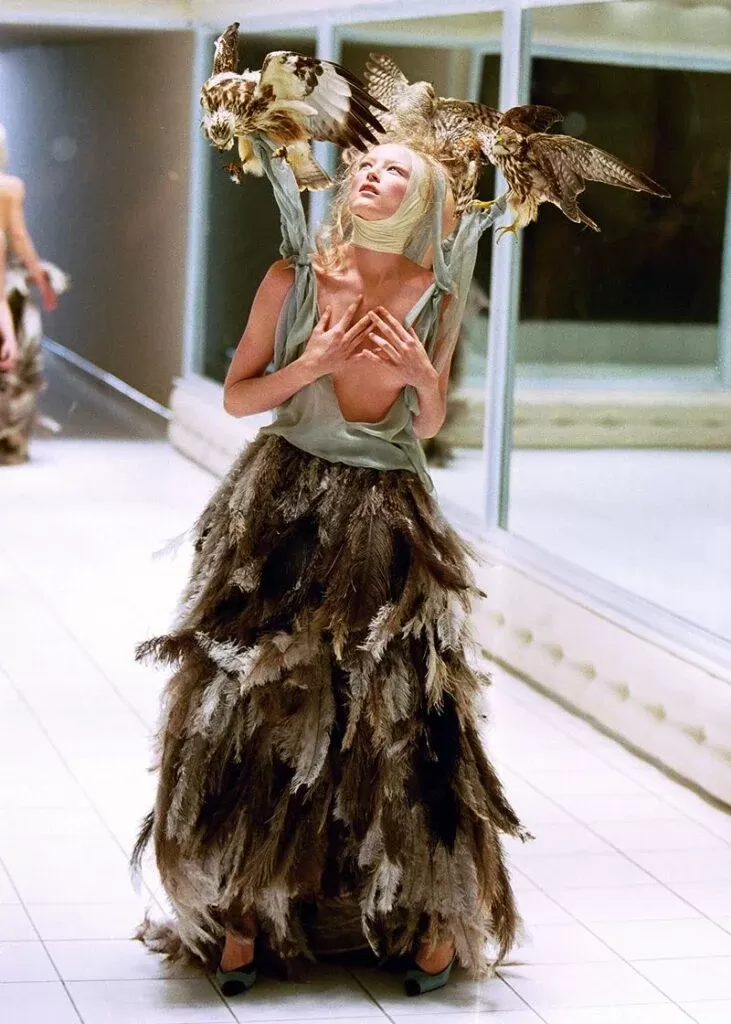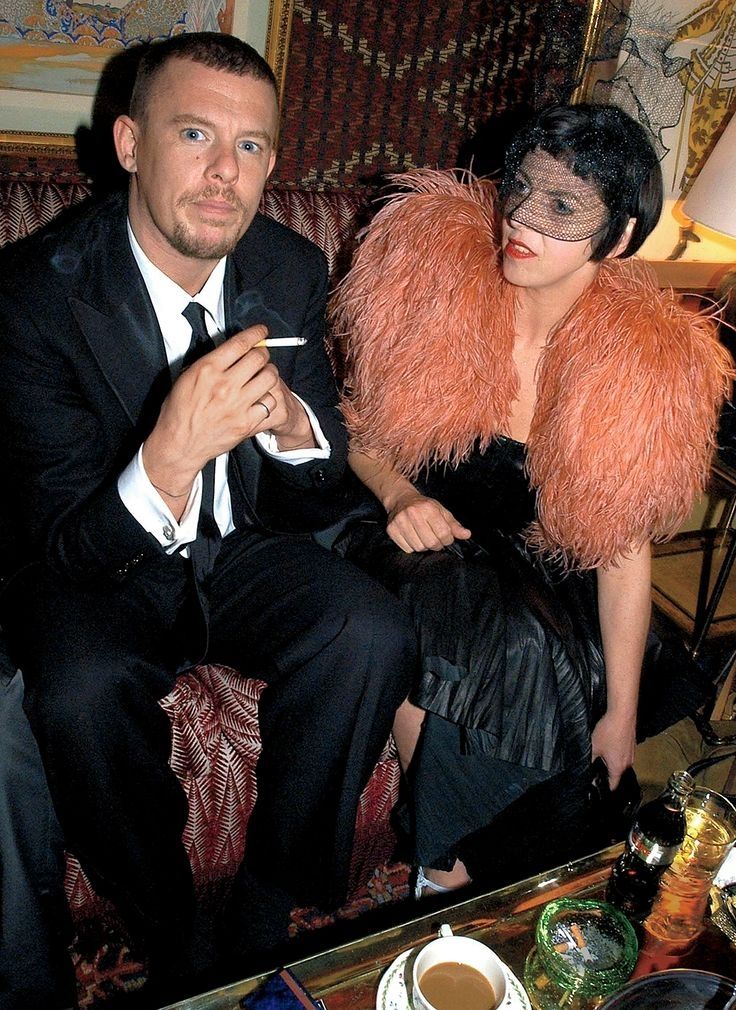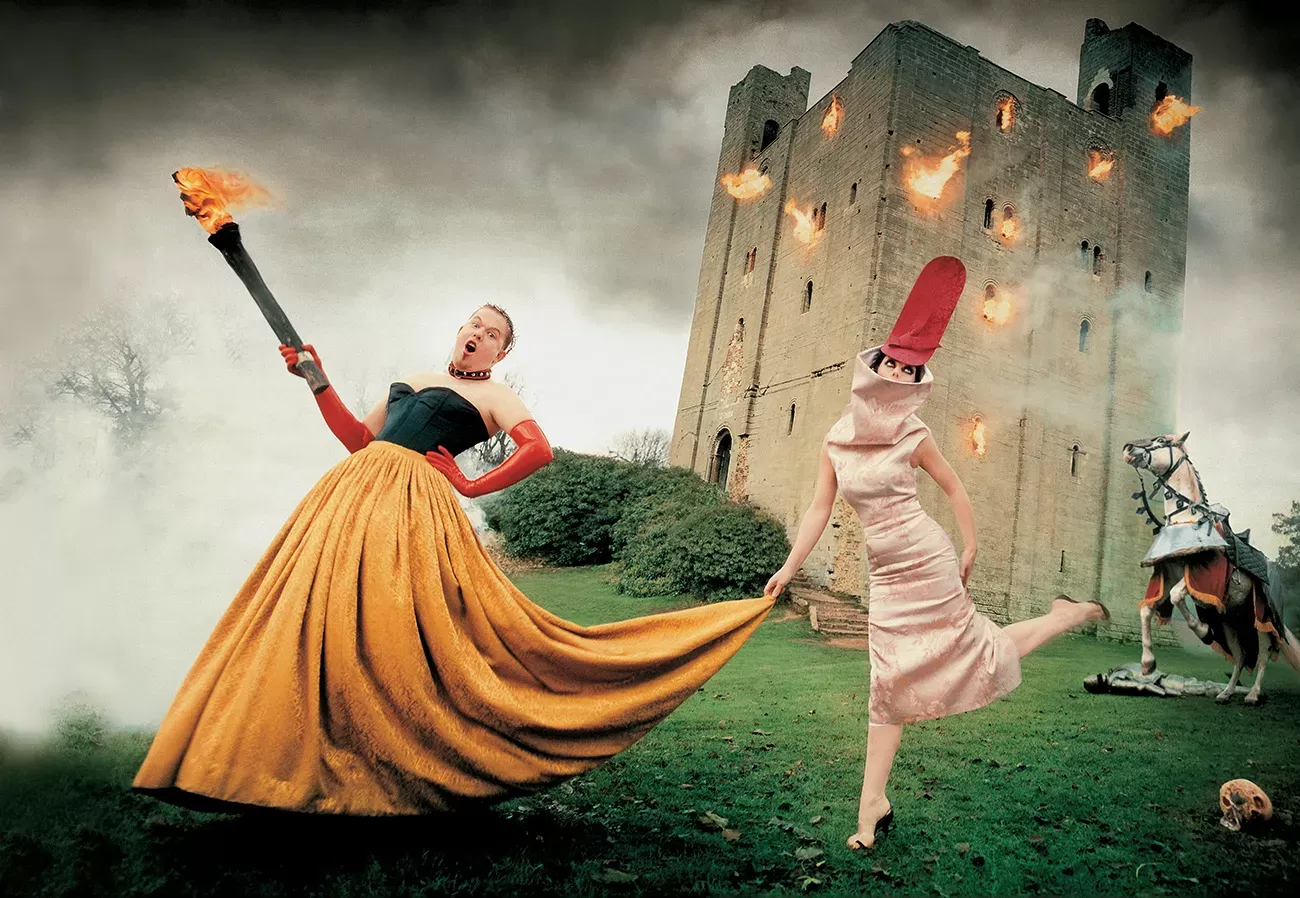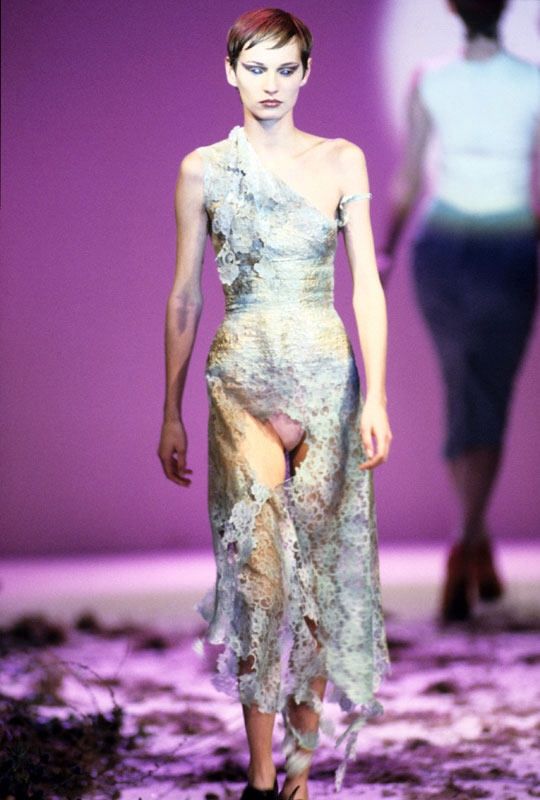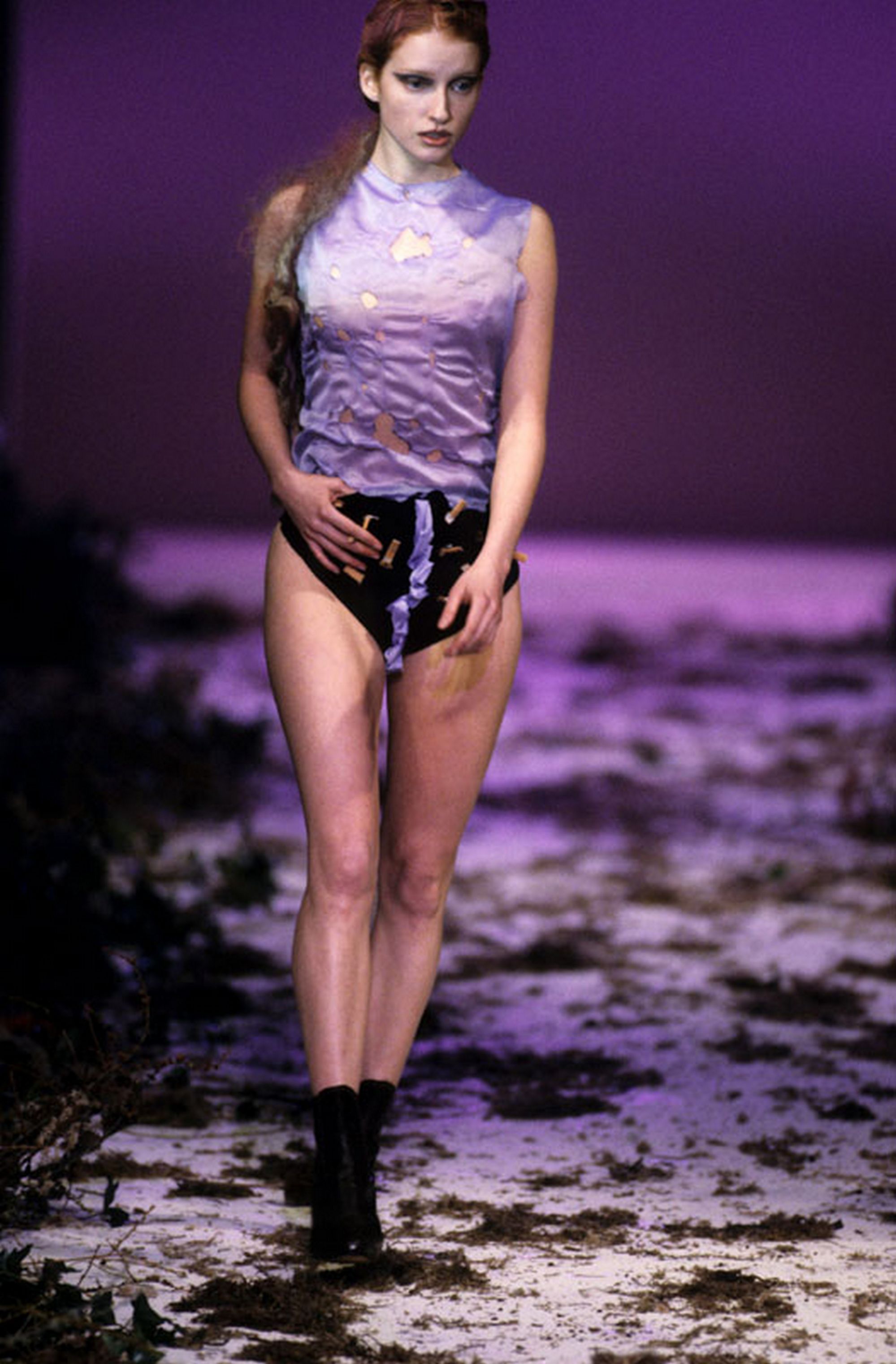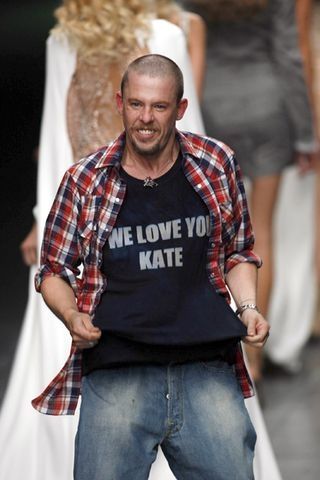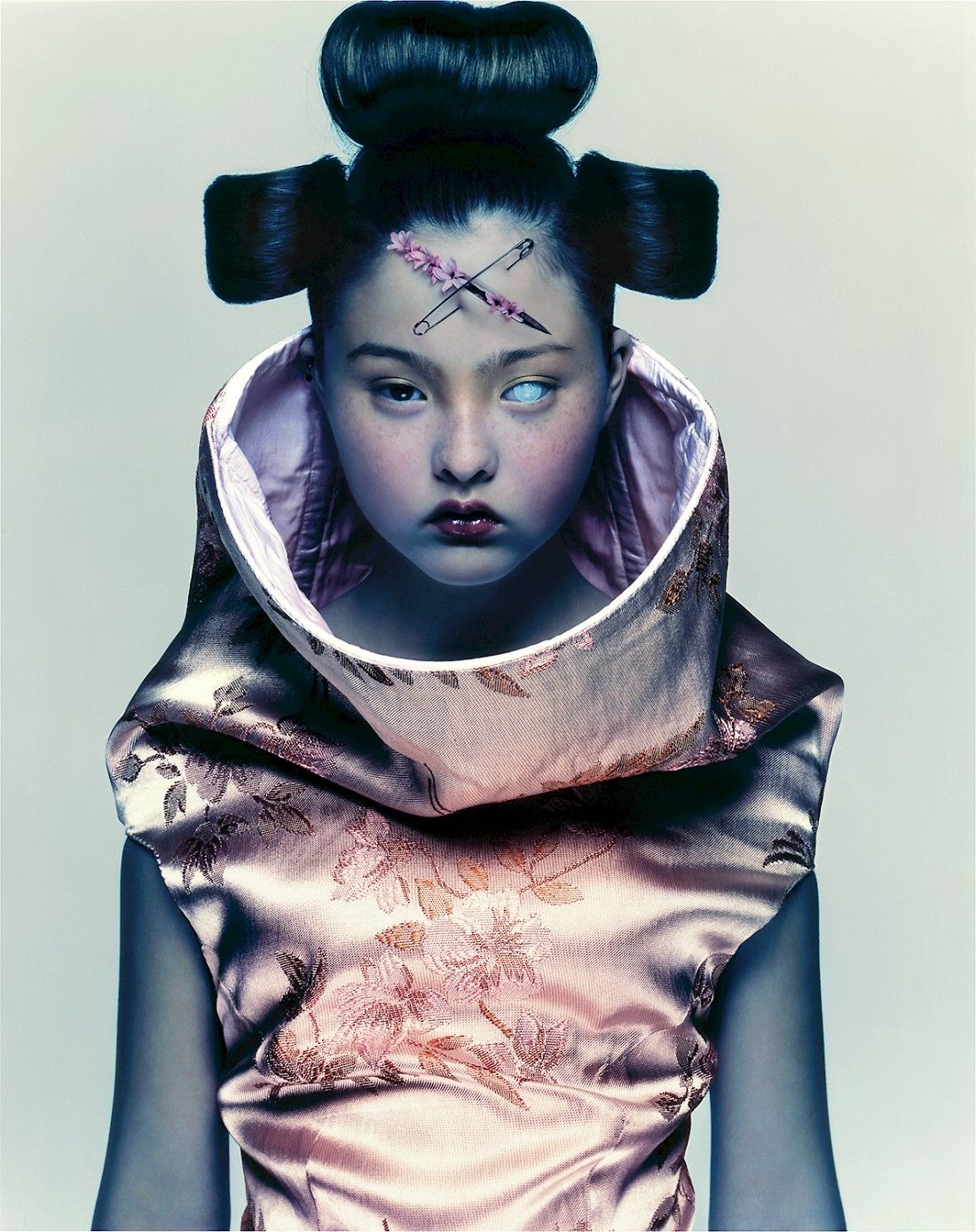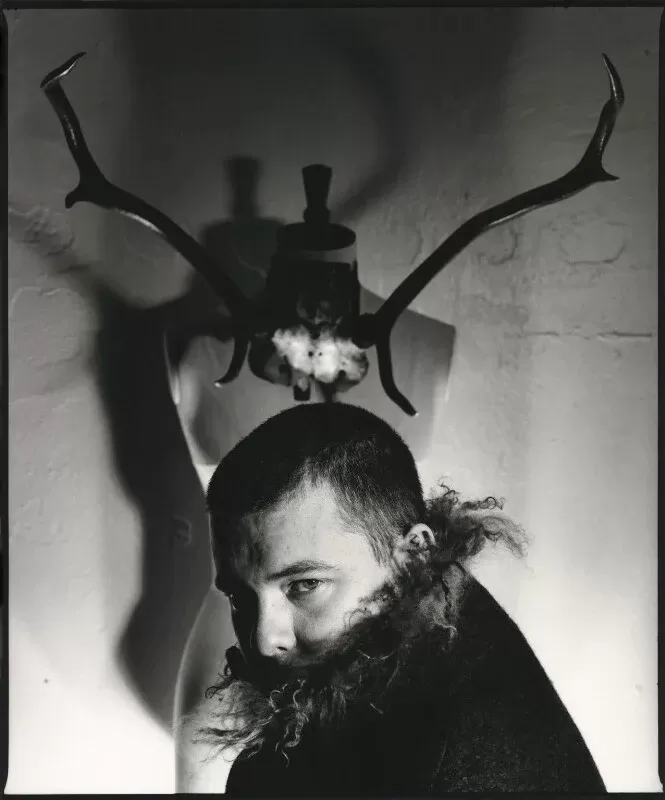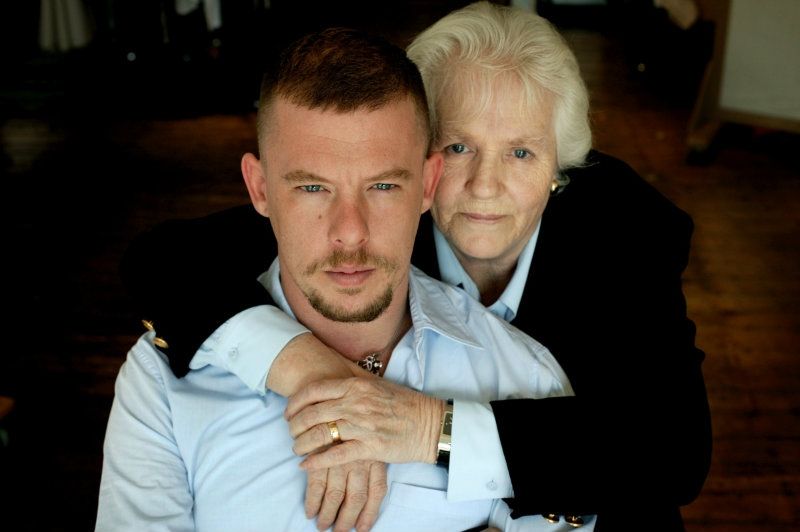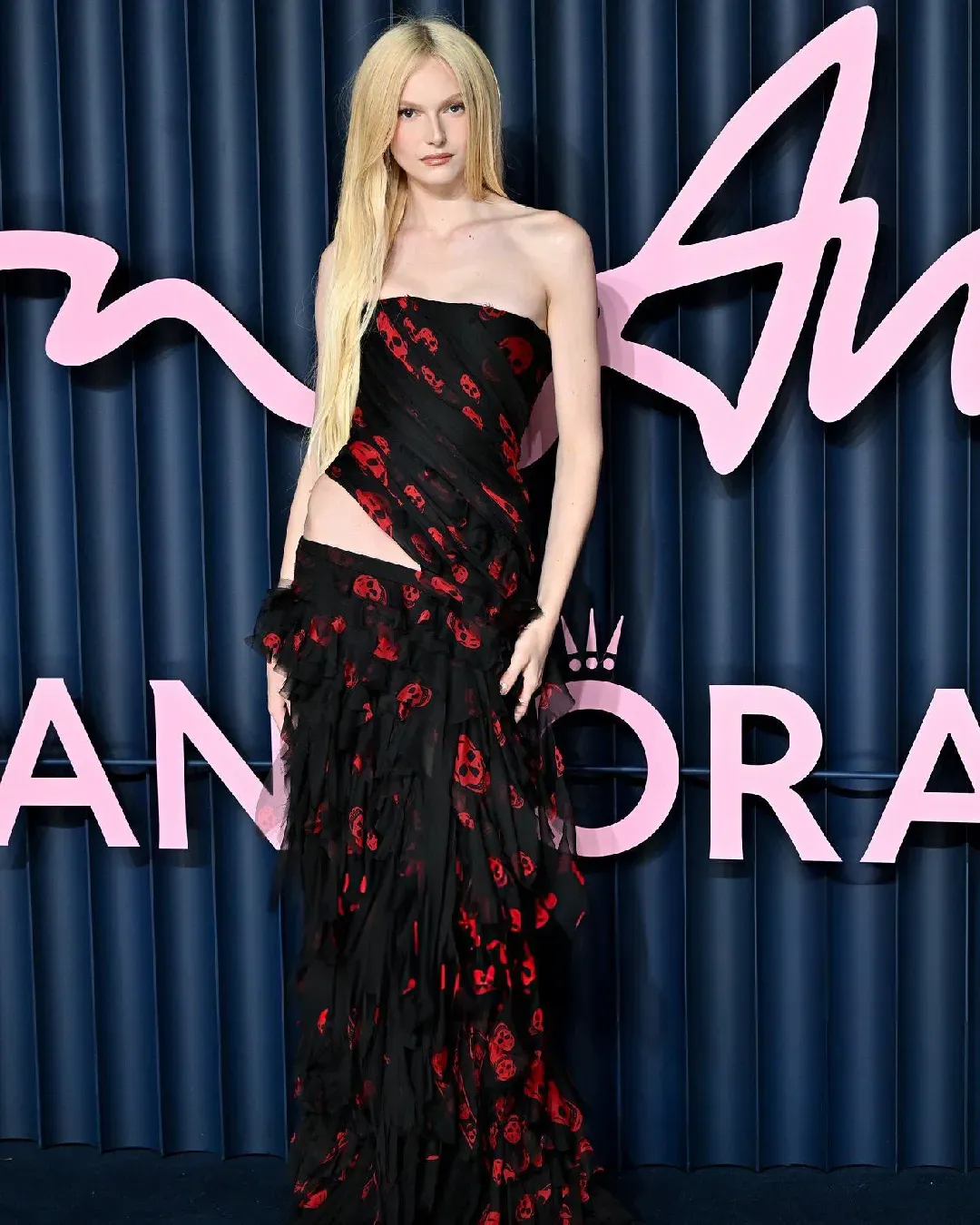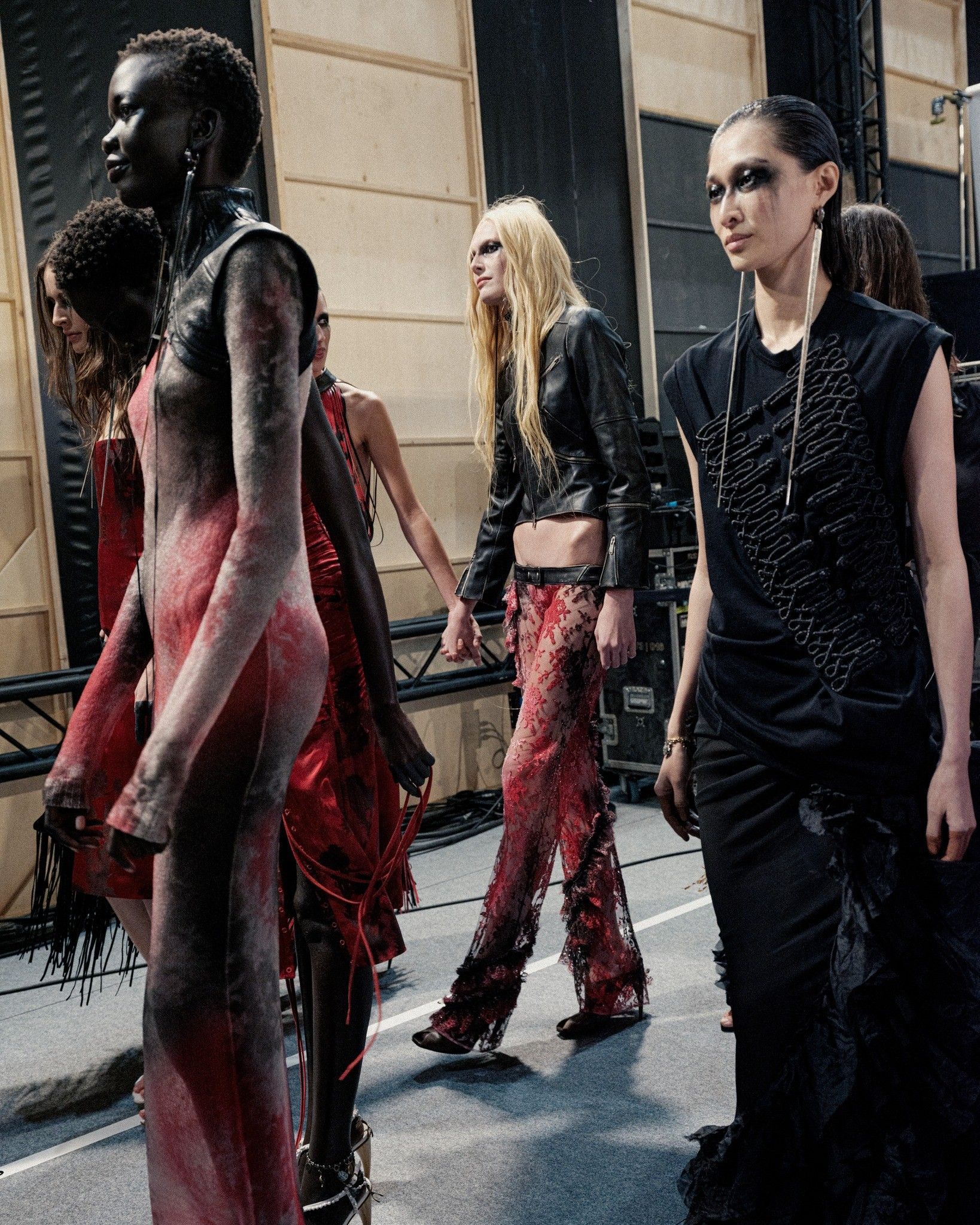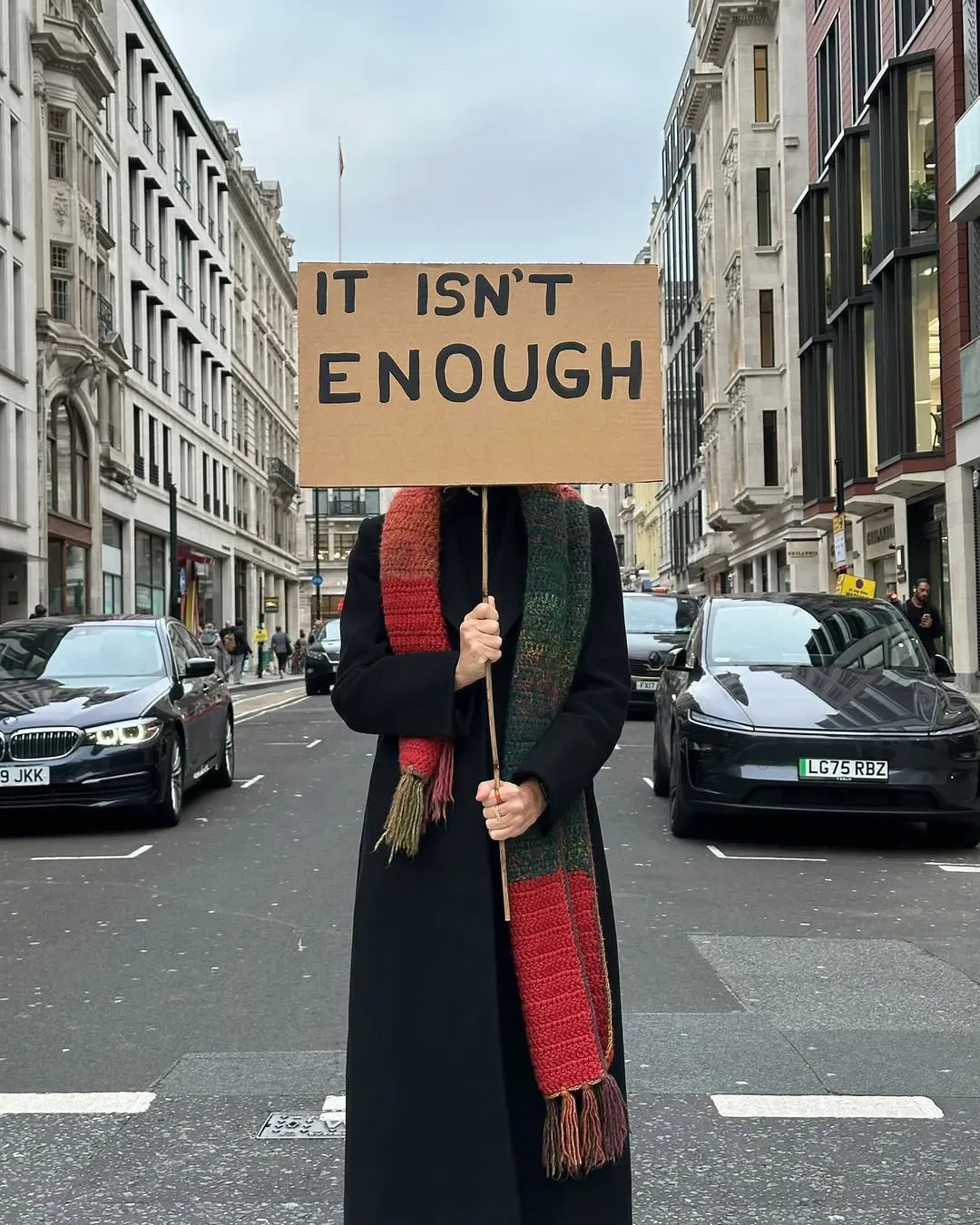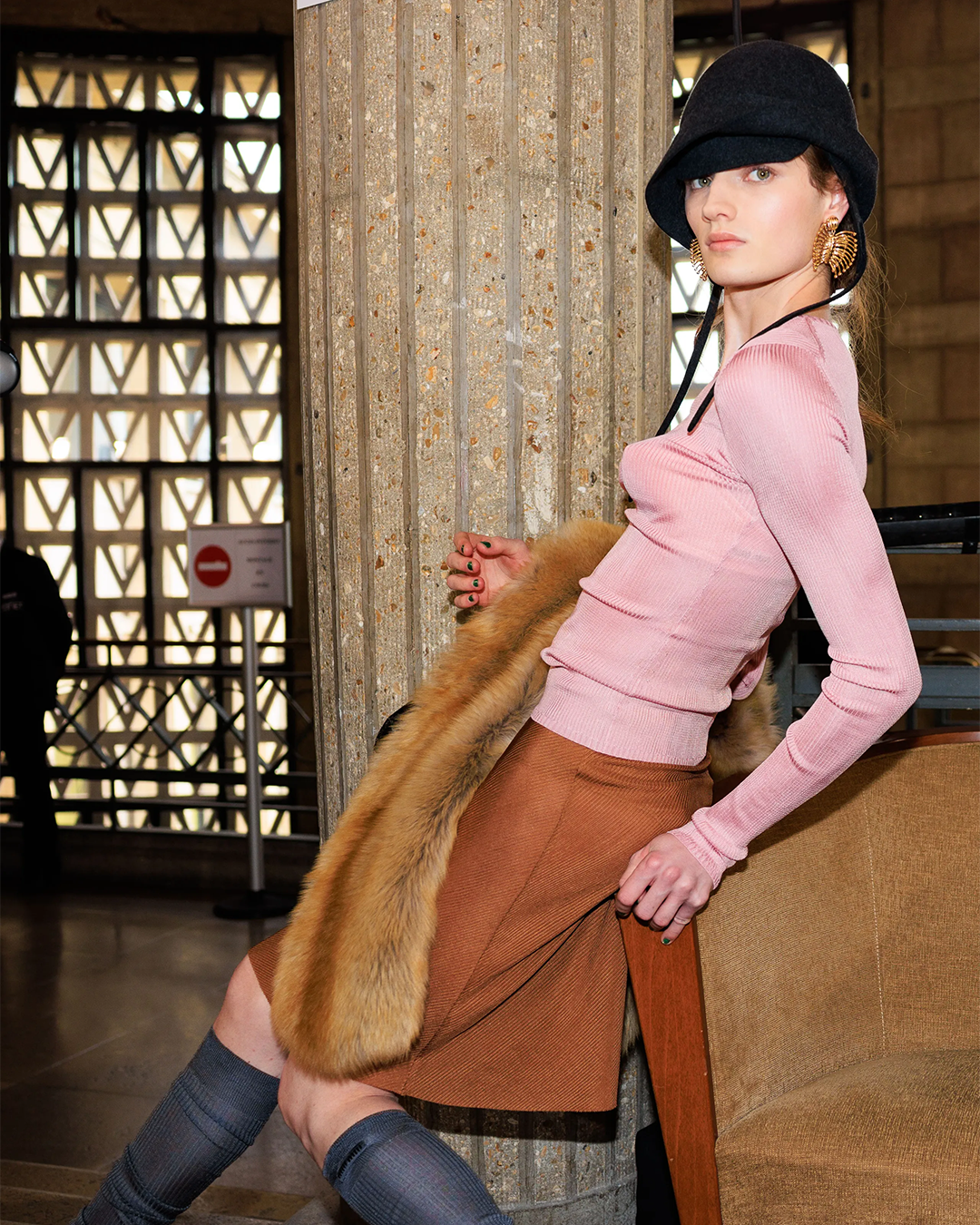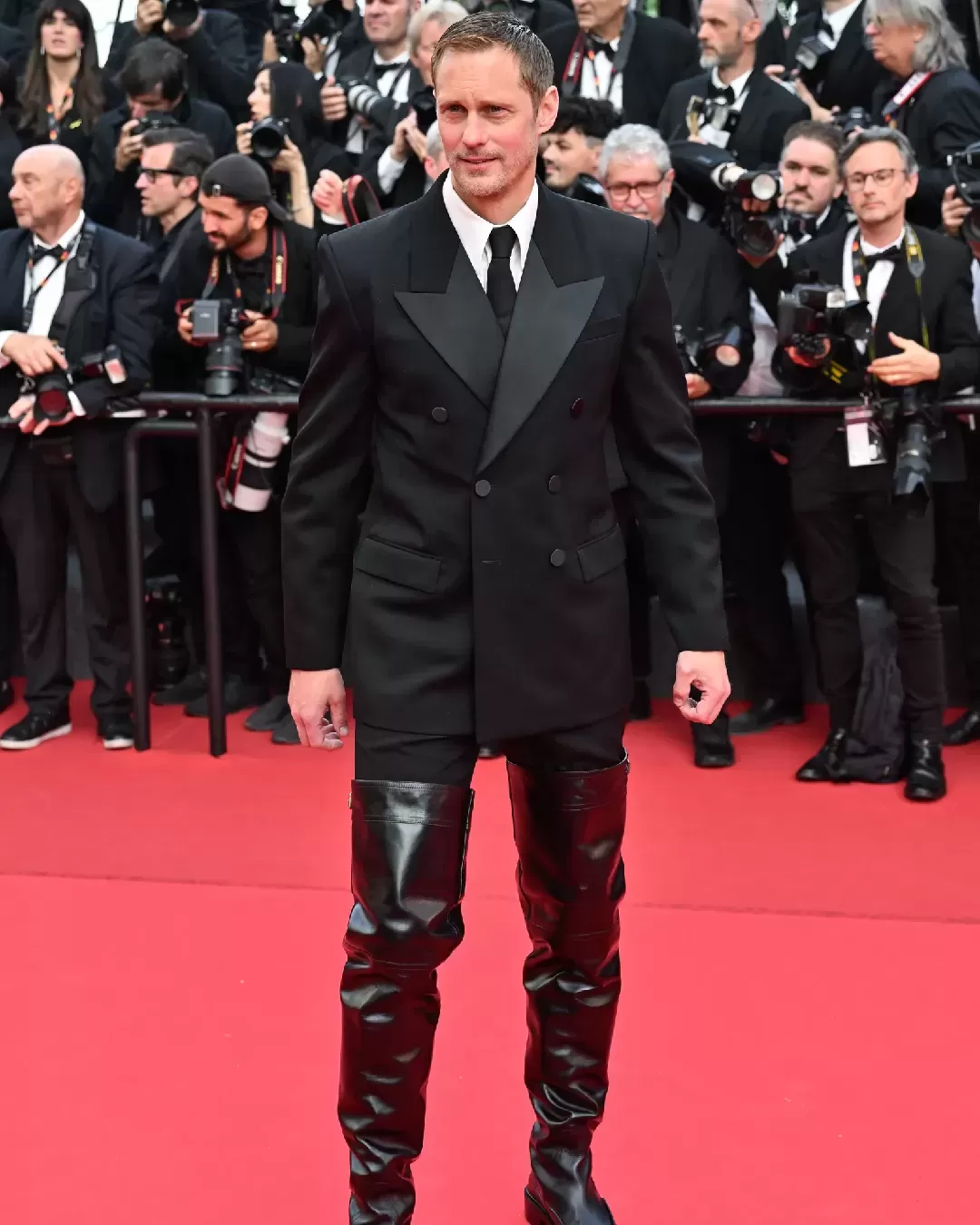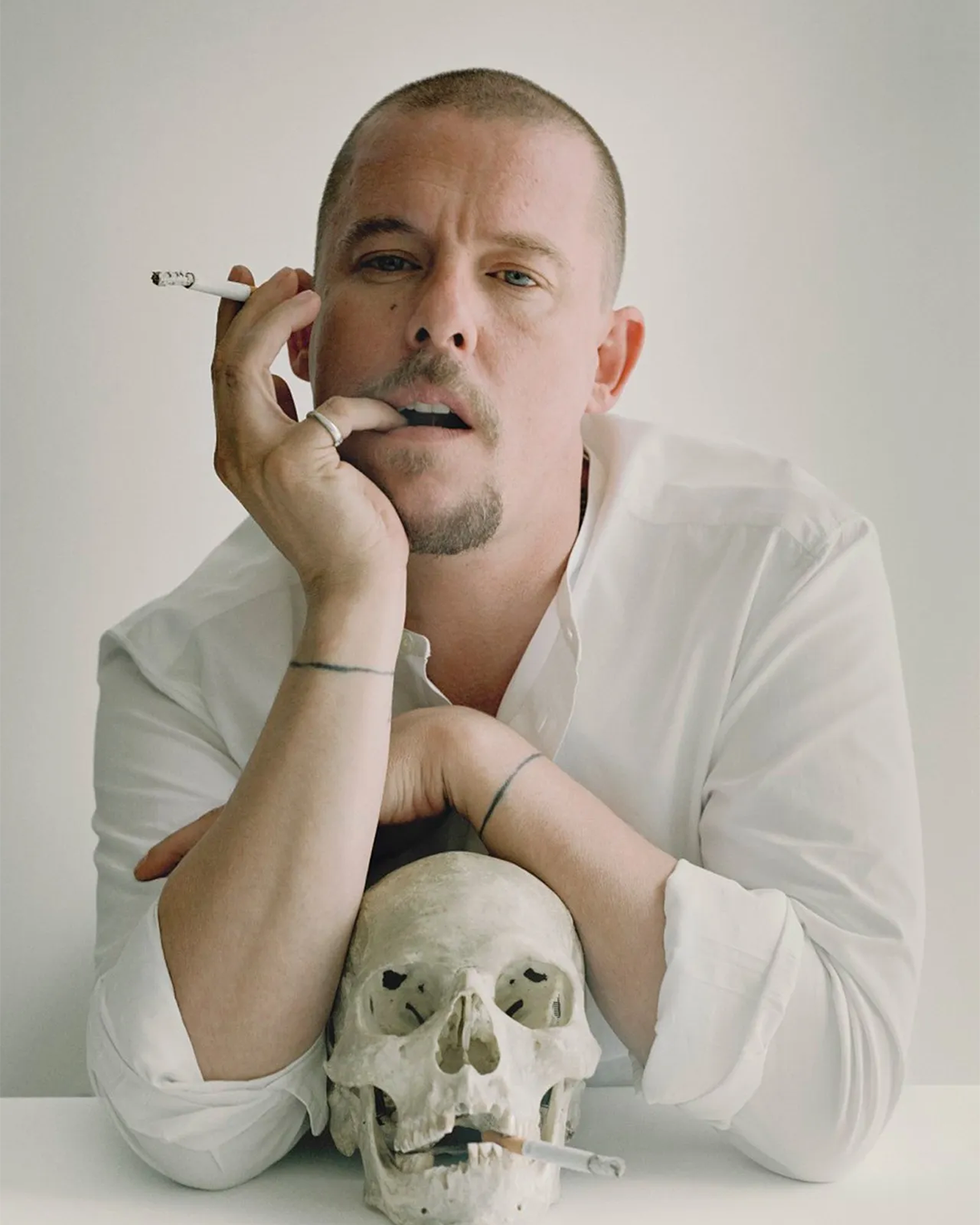
Fifteen years without Alexander McQueen Remembering the designer who infused ready-to-wear with couture
On February 11, 2010, on the eve of his mother's funeral, Lee Alexander McQueen decided to take his own life in his London home. Born in the East End, the youngest of six children, he left school at 15 and started working as an apprentice for Cornelius O'Callaghan, learning quickly, brilliant and fast. Then came his entry at Red or Dead, where he amazed everyone with his skill, and his decision in 1989 to take a flight to Milan without accommodation, without knowing the language, without money. In less than a week, he had already become the assistant to Romeo Gigli. There, he learned the complexity of tailoring. As the Italian designer recalls, after having McQueen remake a jacket more than three times, he unstitched it again and found inside the lining the words: "Fuck Romeo". He returned to London to resume his studies, where he realized he could use topics not strictly related to fashion to redefine and evolve it. He knocked on the door of Bobby Hillson, head of the fashion course at Central Saint Martins, and secured a spot in her prestigious program. His aunt offered to pay his tuition. On March 16, 1992, in the Duke of York's barracks in London, his graduation collection was presented: Jack the Ripper Stalks His Victims. The metamorphosis of prêt-à-porter was beginning.
Editor Isabella Blow, seated in the front row at McQueen's show, was stunned by the young designer's talent. She wanted everything. She described the collection as modern yet classic. Among the pieces, McQueen created a black coat lined with human hair with a blood-red interior lining. It spoke of sabotage and tradition, beauty and violence. Isabella Blow was the first to recognize McQueen's genius, calling the designer's mother to tell her she had given birth to a precursor of the 2000s. Then, without hesitation, she bought the entire collection. From the start, McQueen knew how to use the runways to address controversial themes and tell stories even in prêt-à-porter collections, infusing them with couture, sweetening and representing much more than just a product. The pieces were part of a larger mosaic; there was no interest in proposing a piece meant solely for sale or wearability.
McQueen's omnivorous curiosity over time led him to filter images of Spain's matadors and the Counter-Reformation, privateers of the pirate wars, indigenous peoples of the Amazon, the bloody and violent England of the Wars of the Roses, and even the East of the Kama Sutra. McQueen was imbued with revolution and disturbance from the beginning when he bought fabrics with state unemployment benefits (which is why, in his early interviews after his shows, he did not show his face). With his first public collections came fame but not money, as he himself said. The collection Highland Rape (Fall/Winter 1995) was one of the most famous and scandalized critics with torn, shattered, and stained garments, worn by models who bore wounds on their bodies as if they had just been violated. He was accused of misogyny, of glorifying violence, but McQueen's intent was not to sensationalize horror: the show represented the cultural and territorial aggression suffered by Scotland during unification with England. Through a powerful stylistic trick, McQueen wanted to tell the story of his family, descendants of the Isle of Skye. It was a sweet and fierce representation of a massacre, the same one his ancestors, Scottish Jacobites, suffered during the war of independence. «I want to make people think,» McQueen declared at the time, demonstrating how fashion could become a tool for social critique.
In addition to criticism, international fame arrived. The world began to know Alexander McQueen and he caught the attention of Bernard Arnault, owner of LVMH, who offered him the position of creative director of Givenchy. The designer's life changed: from an outsider and rebel, he found himself managing one of the most famous French fashion houses in the world. In 1997, he arrived in Paris; he had an apartment at Place des Vosges, a personal driver, and was treated like a king in the atelier, yet he remained himself. He brought along his factory and the friends who had accompanied and helped him along the way. If in the atelier, Monsieur Givenchy moved with composure and elegance, McQueen’s group was exuberant but authentic. His debut at the helm of the maison was for the 1997 spring couture season, titled Search for the Golden Fleece. The collection was conceived in just three months and featured tones of white and gold, a palette inspired by Givenchy’s identity, impeccable tailoring for women with a fatal charm, and corsets designed to enhance the female silhouette. Numerous garments were adorned with raised golden embroidery that evoked both a military and tsarist aesthetic. Among the looks, a transparent blouse stood out, which could have been a tribute to the famous Bettina blouse, the maison's first major success.
Despite McQueen’s collections for Givenchy being remembered today as masterpieces, at the time, the critics did not receive his work with much benevolence. Regarding McQueen’s first collection for the French maison, Vogue wrote: «It is fair to say that, in this case, the designer failed to reconcile the opposing forces he had unleashed. The simple elegance of a 'Maria Callas' dress or a gathered cloak with a Renaissance Madonna and Child painted on the back is compromised by accessories such as ram’s horns (at least one pair sourced from Isabella Blow’s flock) and bovine-style nose rings. This collection was certainly not Breakfast at Tiffany’s». The magazine also cited excerpts from an interview McQueen gave to Le Figaro in which he stated that he had «no respect for Hubert de Givenchy» and had accepted the position «because I love fashion». At Givenchy, the designer, by then known worldwide as a legend, broke the “fourth wall” within the atelier: he wanted to know everyone who worked on his garments, refused to dine in exclusive restaurants, and instead asked if he could eat in the canteen with the other employees.
Alexander McQueen’s ready-to-wear collections took on an increasingly elevated approach, as in the case of Spring Summer 1999. Titled N.13., in this show, the runway transformed into a true work of performance art. «It wasn’t a fashion show. It was performance art,» wrote Vogue this time. It was the first show in which Alexander McQueen collaborated with scenographer Joseph Bennett, together creating one of the most iconic images of 20th-century fashion: Shalom Harlow, positioned on a rotating platform, was painted by two robotic arms that sprayed black and yellow paint onto her white dress. The mechanical arms, moving with McQueen-like precision, appeared to follow a choreography. Traditional tailoring met technology, a boundary that Alexander McQueen would explore multiple times throughout his career.
At the beginning of the 2000s, pressure grew, and the workload increased. McQueen was between London and Paris, working on fifteen collections a year for Givenchy and McQueen. In 2001, the paths between the English designer and the French maison diverged, and the Gucci group acquired 50% of the McQueen brand. The designer dedicated himself exclusively to his line, producing unforgettable shows. The entire fashion industry did everything possible to attend McQueen's presentations, to the point that during his shows, students from art and fashion institutes would sneak in, always causing a great commotion. In Voss Spring Summer 2001, the audience was even part of the experience, reflected in the mirrored glass walls. Inside the glass box before them, the models moved like trapped creatures in a dreamlike and unsettling installation. At the end, the cube at the center of the mirrored room opened its walls, revealing a fully nude woman covered by a mask of feathers and insects. The complexity of the garment structures and attention to every hairstyle surpassed any other ready-to-wear collection of the time. It was couture wrapped in rebellion, not aimed at a target audience but rather a complete spectacle, entirely different from the previous one. Each model was a character with a meticulously constructed identity, capable of existing autonomously within a unique story.
Over the years, McQueen’s work extended beyond runways and ateliers, influencing art, photography, and publishing. In 1997, Alexander McQueen and English photographer Nick Knight launched their first collaboration. A photograph of Devon Aoki in McQueen attire presents a surreal effect, due to post-production that transcends realism. The actress appears as a bionic geisha, with one eye veiled in blue and a gash on her forehead held together by a safety pin from which cherry blossoms bloom. The following year, the duo returned to challenge beauty standards with Dazed and Confused, for which McQueen served as a guest editor. The issue was titled Fashion Able? and the subjects of the editorial were people with disabilities. Among them, dancer David Toole, whose leg deformity had required amputation by doctors. The pioneering advent of inclusion was intrinsic to McQueen's mind, not yet dictated by societal or market demands, but pure and authentic. At the same time, the femininity developed by McQueen in his collections was not just dark, not a product of fetishism: it was something fairytale-like and poetic, with the sole objective of seduction.
His last collection, Plato's Atlantis Spring Summer 2010, was the last fully conceived by Lee Alexander McQueen before his death. It was the first live-streamed fashion show (which crashed the website due to high traffic); it marked the debut of Bad Romance by Lady Gaga and the first time robots were used to film a live show. Fifteen years after Alexander McQueen’s passing, it is impossible not to wonder what fashion would be like today if he were still alive. His legacy is not only immense and indissoluble but something authentic, belonging to those who know how to look beyond. Every creation, every gesture, was a reflection of himself. He transformed self-referentiality into a language that was never redundant, but rather magnificently disturbing and seductive. He sought to explore fragility, emptiness, and a perception of reality that few dare to confront. His vision was extreme, akin to that of the great cursed poets who, by portraying the dark side of beauty, ride that thin line between horror and wonder.


